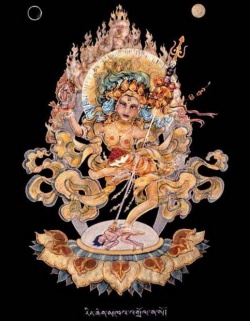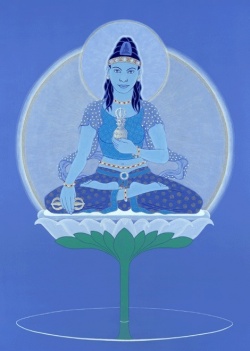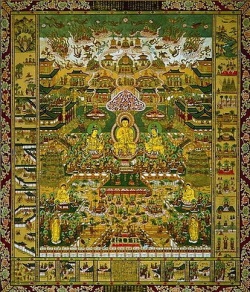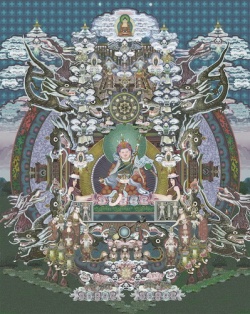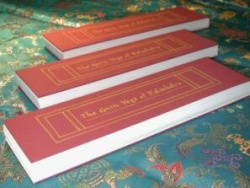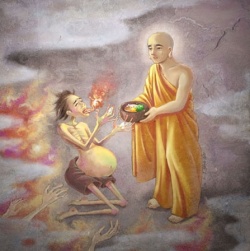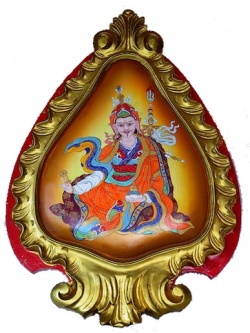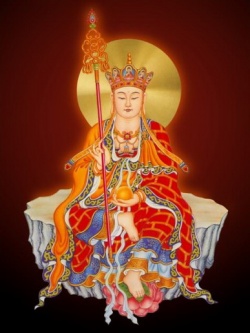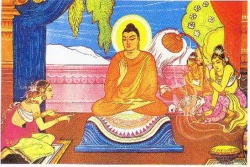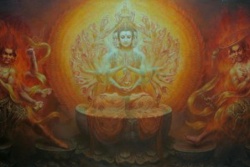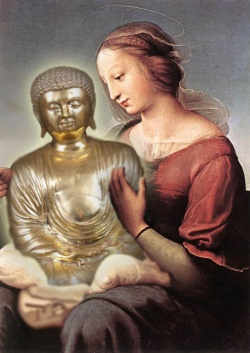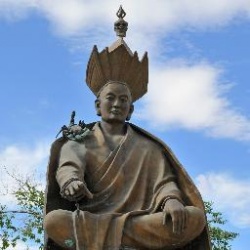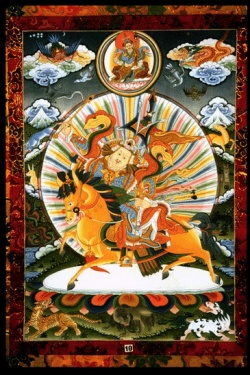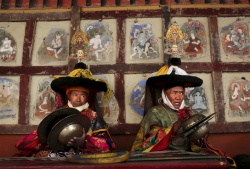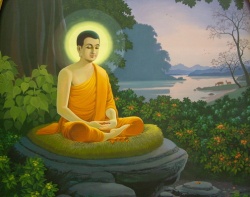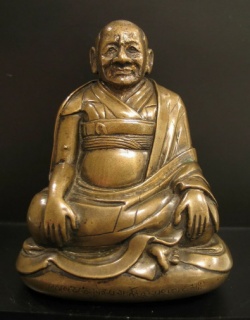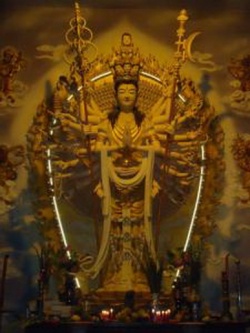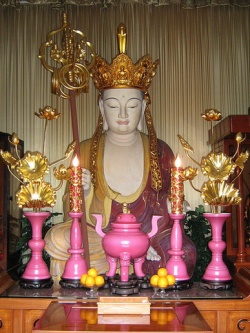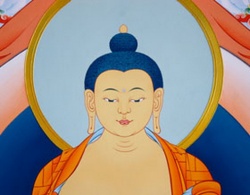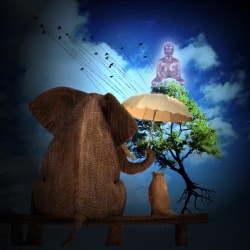Difference between revisions of "Hindu Chronology"
(Created page with "<poem> by John Faithful Flee The subject of Hindu chronology divides naturally into three parts: the calendar, the eras, and other reckonings. I. THE CALENDAR ...") |
|||
| (22 intermediate revisions by 4 users not shown) | |||
| Line 1: | Line 1: | ||
| + | <nomobile>{{DisplayImages|351|1782|3176|3059|3583|3072|179|2511|406|1954|2436|2972|724|2772|2428|3194|709|2609|1400|1517|4542|3792|1638|2182|4546|1057|1263|2928|1719|1415|2207|443|1933|3638|2898|7|1606|1377|270|4086}}</nomobile> | ||
<poem> | <poem> | ||
| − | |||
| − | The [[subject]] of [[Hindu]] chronology divides naturally into three parts: the [[calendar]], the eras, and other reckonings. | + | |
| + | |||
| + | |||
| + | |||
| + | by John [[Faithful]] Flee | ||
| + | |||
| + | |||
| + | The [[subject]] of [[Hindu]] {{Wiki|chronology}} divides naturally into three parts: the [[calendar]], the eras, and other reckonings. | ||
I. THE CALENDAR | I. THE CALENDAR | ||
| − | The [[Hindus]] have had from very | + | The [[Hindus]] have had from very [[ancient]] times the system of [[Wikipedia:lunisolar calendar|lunisolar]] cycles, made by the combination of {{Wiki|solar}} years, regulated by the course of the {{Wiki|sun}}, and [[lunar]] years, regulated by the course of the {{Wiki|moon}}, but treated in such a [[manner]] as to keep the beginning of the [[lunar]] year near the beginning of the {{Wiki|solar year}}. The exact [[manner]] in which they arranged the details of their earliest [[calendar]] is still a [[subject]] of research. We deal here with their [[calendar]] as it now stands, in a [[form]] which was developed from about A.D. 400 under the [[influence]] of the {{Wiki|Greek}} {{Wiki|astronomy}} which had been introduced into [[India]] at no very long [[time]] previously. |
| − | |||
| − | + | The [[Hindu calendar]], then, is determined by years of two kinds, {{Wiki|solar}} and [[lunar]]. For civil purposes, {{Wiki|solar}} years are used in {{Wiki|Bengal}}, [[including]] {{Wiki|Orissa}}, and in the {{Wiki|Tamil}} and [[Malayalam]] districts of [[Madras]], and [[lunar]] years throughout the rest of {{Wiki|India}}. | |
| − | |||
| − | |||
| − | + | But the [[lunar]] year regulates everywhere the general [[religious rites]] and {{Wiki|festivals}}, and the details of private and domestic [[life]], such as the [[selection]] of [[auspicious]] occasions for marriages and for starting on journeys, the choice of [[lucky]] moments for shaving, and so on. Consequently, the details of the [[lunar]] year are shown even in the almanacs which follow the {{Wiki|solar year}}. On the other hand, certain details of the {{Wiki|solar year}}, such as the course of the {{Wiki|sun}} through the [[signs]] and other divisions of the {{Wiki|zodiac}}, are shown in the almanacs which follow the [[lunar]] year. | |
| − | + | We will treat the {{Wiki|solar year}} first, because it governs the [[Wikipedia:|[[Wikipedia:lunisolar calendar|lunisolar]]{{Wiki|lunisolar}}]] system, and the explanation of it will greatly simplify the process of explaining the {{Wiki|lunar calendar}}. | |
| − | |||
| − | |||
| − | + | The astronomical {{Wiki|solar year}}. | |
| − | |||
| − | + | The civil {{Wiki|solar year}} is determined by the astronomical {{Wiki|solar year}}. The [[latter]] professes to begin at the {{Wiki|vernal equinox}}, but the actual position is as follows. In our [[Western]] {{Wiki|astronomy}} the [[signs]] of the {{Wiki|zodiac}} have, in consequence of the {{Wiki|precession}} of the {{Wiki|equinoxes}}, drawn away to a large extent from the [[constellations]] from which they derived their names; with the result that the {{Wiki|sun}} now comes to the {{Wiki|vernal equinox}}, at the first point of the sign [[Wikipedia:Aries (constellation)|Aries]], not in the [[constellation]] [[Wikipedia:Aries (constellation)|Aries]], but at a point in [[Wikipedia:Pisces (constellation)|Pisces]], about 28 degrees before the beginning of [[Wikipedia:Aries (constellation)|Aries]]. | |
| − | |||
| − | + | The [[Hindus]], however, have disregarded {{Wiki|precession}} in connexion with their [[calendar]] from the [[time]] (A.D. 499, 522, or 527, according to different schools) when, by their system, the [[signs]] coincided with the [[constellations]]; and their sign [[Wikipedia:Aries (constellation)|Aries]], called [[Wikipedia:Mesha (Indian astrology)|Mesha]] by them, is still their [[constellation]] [[Wikipedia:Aries (constellation)|Aries]], beginning, according to them, at or near the [[star]] ζ [[Wikipedia:Phi Piscium|Piscium]]. | |
| − | + | Their astronomical {{Wiki|solar year}} is, in fact, not the {{Wiki|tropical year}}, in the course of which the {{Wiki|sun}} really passes from one {{Wiki|vernal equinox}} to the next, but a {{Wiki|sidereal year}}, the period during which the [[earth]] makes one {{Wiki|revolution}} in its {{Wiki|orbit}} round the {{Wiki|sun}} with reference to the first point of [[Wikipedia:Mesha (Indian astrology)|Mesha]]; its beginning is the [[moment]] of the [[Mesha-saṃkrānti]], the entrance of the {{Wiki|sun}} into the sidereal sign [[Mesha]], instead of the tropical sign [[Aries]]; and it begins, not with the true equinox, but with an artificial or nominal equinox. | |
| − | |||
| − | |||
| − | |||
| − | |||
| − | The solar year | + | The length of this sidereal {{Wiki|solar year}} was determined in the following [[manner]]. The {{Wiki|astronomer}} selected what the {{Wiki|Greeks}} termed an {{Wiki|exeligmos}}, the Romans an [[annus magnus]] or [[mundanus]], a period in the course of which a given [[order]] of things is completed by the {{Wiki|sun}}, {{Wiki|moon}}, and {{Wiki|planets}} returning to a [[state]] of [[Wikipedia:Conjunction (astronomy)|conjunction]] from which they have started. |
| − | + | The usual [[Hindu]] {{Wiki|exeligmos}} has been the Great Age of 4.320,000 sidereal {{Wiki|solar}} years, the [[aggregate]] of the [[Wikipedia:Krita Yuga|Kṛita]] or golden age, the [[Wikipedia:Treta Yuga|Tretā]] or {{Wiki|silver}} age, the [[Dvapara Yuga]] or brazen age, and the [[Kali yuga]] or [[iron age]], in which we now are; but it has sometimes been the [[Kalpa]] or [[aeon]], consisting according to one [[view]] of 1000, according to another [[view]] of 1008, Great Ages. | |
| − | |||
| − | |||
| − | + | He then laid down the number of revolutions, in the period of his {{Wiki|exeligmos}}, of the {{Wiki|nakshatras}}, certain {{Wiki|stars}} and groups of {{Wiki|stars}} which will be noticed more definitely in our account of the [[lunar]] year; that is, the number of rotations of the [[earth]] on its axis, or, in other words, the number of sidereal days. A deduction of the number of the years from the number of the sidereal days gave, as remainder, the number of civil days in the {{Wiki|exeligmos}}. And, this remainder [[being]] divided by the number of the years, the quotient gave the length of the sidereal {{Wiki|solar year}} : refinements, suggested by [[experience]], [[inference]], or extraneous [[information]], were made by increasing or {{Wiki|decreasing}} the number of sidereal days assigned to the {{Wiki|exeligmos}}. | |
| − | + | The [[Hindus]] now [[recognize]] three standard sidereal {{Wiki|solar}} years determined in that manner, | |
| − | |||
| − | [[ | + | A year of 365 days 6 hrs. 12 min. 30 sec. according to the {{Wiki|Āryabhaṭīya}}, otherwise called the First [[Ārya-Siddhānta]], which was written by the {{Wiki|astronomer}} [[ĀryabhaṬa]] (b. A.D. 476): this year is used in the {{Wiki|Tamil}} and Malayāḷam districts, and, we may add, in {{Wiki|Ceylon}}. |
| − | + | A year of 365 days 6 hrs. 12 min. 30.915 sec. according to the [[Rājamṛigāka]], a treatise based on the [[Brahma-Siddhānta]] of [[Brahmagupta]] (b. A.D. 598) and attributed to [[king]] [[Bhoja]], of which the epoch, the point of [[time]] used in it for calculations, falls in A.D. 1042: this year is used in parts of {{Wiki|Gujarāt}} ({{Wiki|Bombay}}) and in [[Wikipedia:Rajputana|Rājputāna]] and other [[western]] parts of {{Wiki|Northern India}}. | |
| − | + | A year of 365 days 6 hrs. 12 min. 36.56 sec. according to the {{Wiki|present}} [[Sūrya-Siddhānta]], a work of unknown authorship which dates from probably about A.D. 1000: this year is used in almost all the other parts of [[India]]. | |
| − | |||
| − | |||
| − | Mīna, the fishes (Pisces). | + | It may be remarked that, according to {{Wiki|modern}} [[science]], the true mean sidereal {{Wiki|solar year}} measures 365 days 6 hrs. 9 min. 9.6 sec., and the mean {{Wiki|tropical year}} measures 365 days 5 hrs. 48 min. 46.054440 sec. |
| + | |||
| + | |||
| + | The result of the use of this sidereal {{Wiki|solar year}} is that the beginning of the [[Hindu]] astronomical {{Wiki|solar year}}, and with it the civil {{Wiki|solar year}} and the [[lunar]] year and the nominal incidence of the seasons, has always been, and still is, travelling slowly forward in our [[calendar]] year by an amount which varies according to the particular authority.1 | ||
| + | |||
| + | 1 The [[disregard]] of {{Wiki|precession}}, and the consequent travelling forward of the year through the natural seasons, is, of course, a serious defect in the [[Hindu]] [[calendar]], the {{Wiki|principles}} of which are otherwise good. Accordingly, an attempt was made by a small band of reformers to rectify this [[state]] of things by introducing a precessional [[calendar]], taking as the first [[lunar month]] the synodic lunation in which the {{Wiki|sun}} enters the tropical [[Aries]], instead of the sidereal [[Mesha]]; and the publication was started, in or about 1886, of the [[Sāyana-Pañchāng]] or "Precessional Almanac." | ||
| + | |||
| + | |||
| + | Further, the [[Hindu]] sidereal {{Wiki|solar year}} is in excess of the true mean {{Wiki|sidereal year}} by (if we use [[Āryabhaṭa's]] value) 3 min. 20.4 sec. If we take this, for convenience, at 3 min. 20 sec., the excess amounts to exactly one day in 432 years. And so even the sidereal [[Mesha-saṃkrānti]] is now found to occur three or four days later than the day on which it should occur. Accordingly, another reformer had begun, in or about 1865, to publish the [[Navīn athavā Paṭwardhanī Pañchāng]], the "[[New or Paṭwardhāni Almanac]]," in which he determined the details of the year according to the proper [[Mesha-saṃkrānti]]. | ||
| + | |||
| + | |||
| + | For instance, [[Āryabhaṭa's]] year exceeds the Julian year by 12 min. 30 sec. This amounts to exactly one day in 115 1/5 years, and five days in 576 years. Thus, if we take the longer period and confine ourselves to a [[time]] when the Julian [[calendar]] (old style) was in use, according to [[Āryabhaṭa]] the [[Mesha-saṃkrānti]] began to occur in A.D. 603 on 20th March, and in A.D. 1179 on 25th March. The [[intermediate]] advances [[arrange]] themselves into four steps of one day each in 116 years, followed by one step of one day in 112 years: thus, the [[Mesha-saṃkrānti]] began to occur on 21st March in A.D. 719, on 22nd March in A.D. 835, on 23rd March in A.D. 951, and on 24th March in A.D. 1067 (whence 112 years take us to 25th March in A.D. 1179). It is now occurring sometimes on 11th April, sometimes on the 12th; having first come to the 12th in A.D. 1871. | ||
| + | |||
| + | |||
| + | The civil {{Wiki|solar year}}. | ||
| + | |||
| + | |||
| + | The civil {{Wiki|solar year}} [[exists]] in more varieties than one. The [[principal]] variety, conveniently called the [[Meshādi year]], i.e. "the year beginning at the [[Mesha-saṃkrānti]]," is the only one that we need [[notice]] at this point. The beginning of it is determined directly by the astronomical {{Wiki|solar year}}; and for [[religious]] purposes it begins, with that year, at the [[moment]] of the [[Mesha-saṃkrānti]]. Its first civil day, however, may be either the day on which the [[saṃkrānti]] occurs, or the next day, or even the day after that: this is | ||
| + | |||
| + | |||
| + | determined partly by the [[time]] of day or night at which the [[saṃkrānti]] occurs, which, moreover, of course varies in accordance with the locality as well as the particular authority that is followed; partly by differing details of practice in different parts of the country. In these circumstances an exact {{Wiki|equivalent}} of the [[Meshādi]] civil {{Wiki|solar year}} cannot be stated; but it may be taken as now beginning on or closely about the 12th of April. | ||
| + | The {{Wiki|solar}} months. | ||
| + | |||
| + | |||
| + | The {{Wiki|solar year}} is divided into twelve months, in accordance with the successive [[saṃkrānis]] or entrances of the {{Wiki|sun}} into the (sidereal) [[signs]] of the {{Wiki|zodiac}}, which, as with us, are twelve in The {{Wiki|solar}} number. The names of the [[signs]] in [[Sanskrit]] are as follows: | ||
| + | |||
| + | |||
| + | [[Mesha]], the [[ram]] ([[Aries]]); | ||
| + | |||
| + | [[Vṛishabha]], the bull ([[Taurus]]); | ||
| + | |||
| + | [[Mithuna]], the pair, the twins ([[Gemini]]); | ||
| + | |||
| + | [[Karka]], [[Karkaṭa]], [[Karkaṭaka]], the crab ({{Wiki|Cancer}}) ; | ||
| + | |||
| + | [[Siṃha]], the [[lion]] (Leo) ; | ||
| + | |||
| + | [[Kanyā]], the maiden ([[Virgo]]) ; | ||
| + | |||
| + | [[Tulā]], the scales ([[Libra]]) ; | ||
| + | |||
| + | [[Vṛiśchika]], the {{Wiki|scorpion}} ([[Scorpio]]) ; | ||
| + | |||
| + | [[Dhanus]], the [[bow]] ([[Sagittarius]]) ; | ||
| + | |||
| + | [[Makara]], the seamonster ({{Wiki|Capricornus]]) ; | ||
| + | |||
| + | [[Kumbha]], the water-pot ([[Aquarius]]) ; and | ||
| + | |||
| + | [[Mīna]], the fishes ([[Pisces]]). | ||
| + | |||
The solar months are known in some parts by the names of the signs or by corrupted [[forms]] of them; and these are the best names for them for general use, because they lead to no confusion. But they have elsewhere another set of names, preserving the connexion of them with the lunar months: the [[Sanskrit]] [[forms]] of these names are | The solar months are known in some parts by the names of the signs or by corrupted [[forms]] of them; and these are the best names for them for general use, because they lead to no confusion. But they have elsewhere another set of names, preserving the connexion of them with the lunar months: the [[Sanskrit]] [[forms]] of these names are | ||
| − | |||
| − | Vaiśākha, | + | [[Chaitra]], |
| + | |||
| + | [[Vaiśākha]], | ||
| − | Jyaishṭha, | + | [[Jyaishṭha]], |
| − | Āshāḍha, | + | [[Āshāḍha]], |
| − | Śrāvaṇa, | + | [[Śrāvaṇa]], |
| − | Bhādrapada, | + | [[Bhādrapada]], |
| − | Āśvina or Āśvayuja, | + | [[Āśvina]] or [[Āśvayuja]], |
| − | Kārttika, | + | [[Kārttika]], |
| − | Mārgaśira or Mārgaśīrsha (also known as Agrahāyaṇa), | + | [[Mārgaśira]] or [[Mārgaśīrsha]] (also known as [[Agrahāyaṇa]]), |
| − | Pausha, | + | [[Pausha]], |
[[Māgha]], and | [[Māgha]], and | ||
| − | Phālguna: | + | [[Phālguna]]: |
| − | in some localities these names are used in corrupted [[forms]], and in others vernacular names are substituted for some of them ; and, while in some parts the [[name]] Chaitra is attached to the month Mesha, in other parts it is attached to the month Mīna, and so on throughout the series in each case. The astronomical solar month runs from the moment of one saṃkrānti of the {{Wiki|sun}} to the moment of the next saṃkrānti; and, as the signs of the [[Hindu]] | + | |
| + | in some localities these names are used in corrupted [[forms]], and in others vernacular names are substituted for some of them ; and, while in some parts the [[name]] [[Chaitra]] is attached to the month [[Mesha]], in other parts it is attached to the month [[Mīna]], and so on throughout the series in each case. The astronomical solar month runs from the moment of one [[saṃkrānti]] of the {{Wiki|sun}} to the [[moment]] of the next [[saṃkrānti]]; and, as the [[signs]] of the [[Hindu]] {{Wiki|zodiac}} are all of {{Wiki|equal}} length, 30 degrees, as with us, while the {{Wiki|speed}} of the {{Wiki|sun}} (the {{Wiki|motion}} of the [[earth]] in its {{Wiki|orbit}} round the {{Wiki|sun}}) varies according to the [[time]] of the year, the length of the month is variable: the shortest month is [[Dhanus]]; the longest is [[Mithuna]]. | ||
| + | |||
| + | |||
| + | |||
| + | The civil {{Wiki|solar}} month begins with its first civil day, which is determined, in different localities, in the same [[manner]] with the first civil day of the [[Meshdi]] year, as indicated above. The civil month is of variable length; partly for that [[reason]], partly because of the variation in the length of the astronomical month. No exact equivalents of the civil months, therefore, can be stated; but, {{Wiki|speaking}} approximately, we may say that, while the month [[Mesha]] now begins on or closely about 12th April, the beginning of a subsequent month may come as late as the 16th day of the English month in which it falls. | ||
The seasons. | The seasons. | ||
| − | The solar year is also divided into six seasons, the [[Sanskrit]] names of which are | + | The {{Wiki|solar year}} is also divided into six seasons, the [[Sanskrit]] names of which are |
| − | |||
| − | + | [[Vasanta]], spring; | |
| − | + | [[Grīshma]], the [[hot]] weather; | |
| − | + | [[Varshā]], the [[rainy season]] ; | |
| − | + | [[Śarad]], autumn ; | |
| − | + | [[Hemanta]], the cold weather; and | |
| − | + | [[Śiśira]], the dewy season. | |
| − | It may be added that in early | + | [[Vasanta]] begins at the [[Mīna-saṃkrānti]] ; the other seasons begin at each successive second [[saṃkrānti]] from that. Originally, this scheme was laid out with reference to the true course of the {{Wiki|sun}}, and the startingpoint of it was the {{Wiki|real}} winter [[solstice]], with [[Śiśira]], as the first season, beginning then: now, owing partly to the [[disregard]] of {{Wiki|precession}}, partly to our introduction of New Style, each season comes about three weeks too late; [[Vasanta]] begins on or about 12th March, instead of 19th or 20th February, and so on with the rest. |
| + | |||
| + | |||
| + | It may be added that in early times the year was also divided into three or four, and even into five or seven, seasons; and there appears to have been also a practice of reckoning the seasons according to the [[lunar months]], which, however, would only give a very varying arrangement, in addition to neglecting the point that the seasons are naturally determined by the course of the {{Wiki|sun}}, not of the {{Wiki|moon}}. But there is now [[recognized]] only the [[division]] into six seasons, determined as stated above. | ||
The solstitial divisions of the year. | The solstitial divisions of the year. | ||
| − | The solar year is also divided into two parts called | + | The {{Wiki|solar year}} is also divided into two parts called |
| − | Uttarāyaṇa,the period during which the {{Wiki|sun}} is moving to the {{Wiki|north}}, and | + | [[Uttarāyaṇa]],the period during which the {{Wiki|sun}} is moving to the {{Wiki|north}}, and |
| − | Dakshiṇāyana, the period during which it is moving to the south. | + | [[Dakshiṇāyana]], the period during which it is moving to the [[south]]. |
| − | The Uttarāyaṇa begins at the nominal winter [[solstice]], as marked by the Makara-saṃkrānti ; and the day on which this [[solstice]] occurs, usually 12th January at present, is still a special occasion of festivity and [[rejoicing]]; the Dakshiṇāyana begins at the nominal summer [[solstice]], as marked by the Karka-saṃkrānti. | + | The [[Uttarāyaṇa]] begins at the nominal winter [[solstice]], as marked by the [[Makara-saṃkrānti]] ; and the day on which this [[solstice]] occurs, usually 12th January at {{Wiki|present}}, is still a special occasion of festivity and [[rejoicing]]; the [[Dakshiṇāyana]] begins at the nominal summer [[solstice]], as marked by the [[Karka-saṃkrānti]]. |
| − | It may be added here that, while the [[Hindus]] disregard precession in the actual computation of their years and the regulation of their [[calendar]], they pay [[attention]] to it in certain other respects, and notably as regards the solstices: the precessional solstices are looked upon as [[auspicious]] occasions, as well as the non-precessional solstices, and are customarily shown in the almanacs; and some of the almanacs show also the other precessional saṃkrāntis of the sun. | + | It may be added here that, while the [[Hindus]] [[disregard]] {{Wiki|precession}} in the actual computation of their years and the regulation of their [[calendar]], they pay [[attention]] to it in certain other respects, and notably as regards the {{Wiki|solstices}}: the precessional {{Wiki|solstices}} are looked upon as [[auspicious]] occasions, as well as the non-precessional {{Wiki|solstices}}, and are customarily shown in the almanacs; and some of the almanacs show also the other precessional [[saṃkrāntis]] of the {{Wiki|sun}}. |
The civil day. | The civil day. | ||
| − | The civil days of the solar month begin at sunrise. They are numbered I, 2, 3, &c., in unbroken succession to the end of the month. And, the length of the month [[being]] variable for the [[reasons]] stated above, the number of the civil days may range from twenty-nine to thirty-two. | + | |
| + | |||
| + | The civil days of the {{Wiki|solar}} month begin at sunrise. They are numbered I, 2, 3, &c., in unbroken succession to the end of the month. And, the length of the month [[being]] variable for the [[reasons]] stated above, the number of the civil days may range from twenty-nine to thirty-two. | ||
| + | |||
| + | |||
The weekday. | The weekday. | ||
| − | |||
| − | + | The civil days are named after the weekdays, of which the usual appellations (there are various synonyms in each case, and some of the names are used in corrupted [[forms]]) are in [[Sanskrit]] | |
| + | |||
| − | + | [[Ādityavāra]] or [[Ravivāra]], the day of the {{Wiki|sun}}, sometimes called [[Adivara]], the beginning-day ([[Sunday]]) ; | |
| − | + | [[Somavāra]], the day of the {{Wiki|moon}} (Monday) ; | |
| − | + | [[Maṅgalavāra]], the day of {{Wiki|Mars}} ([[Tuesday]]); | |
| − | + | [[Budhavara]], the day of {{Wiki|Mercury}} ([[Wednesday]]); | |
| − | + | [[Bṛihaspativāra]] or [[Guruvāra]], the day of {{Wiki|Jupiter}} (Thursday) ; | |
| − | and Śanivāra, the day of {{Wiki|Saturn}} (Saturday). | + | [[Śukravāra]], the day of {{Wiki|Venus}} ([[Friday]]) ; |
| + | |||
| + | and [[Śanivāra]], the day of {{Wiki|Saturn}} ([[Saturday]]). | ||
| + | |||
| + | |||
| + | It may be mentioned, as a [[matter]] of {{Wiki|archaeological}} [[interest]], that, while some of the astronomical [[books]] perhaps postulate an earlier [[knowledge]] of the "[[lords]] of the days," and other writings indicate a still earlier use of the period of seven days, the first proved instance of the use of the [[name]] of a weekday is of the year A.D. 484, and is furnished by an inscription in the Saugor district, Central [[India]]. | ||
| − | |||
Divisions of the day. | Divisions of the day. | ||
| + | |||
The divisions of the civil day, as far as we need note them, are | The divisions of the civil day, as far as we need note them, are | ||
| − | 60 vipalas = [[ | + | 60 [[vipalas]] = 1 [[pala]] = 24 seconds; |
| − | 60 palas = [[ | + | 60 [[palas]] = 1 [[ghaṭikā]] = 24 minutes; |
| − | 60 ghaṭikās = 24 hours = | + | 60 [[ghaṭikās]] = 24 hours = 1 day. |
| − | |||
| − | + | There is also the [[muhūrta]] = 2 [[ghaṭikās]] = 48 minutes: this is the nearest approach to the "hour." The comparative value of these measures of [[time]] may perhaps be best illustrated thus: | |
| − | 2½ ghaṭikās = [[1]] | + | 2½ [[muhūrtas]] = 2 hours; |
| + | |||
| + | 2½ [[ghaṭikās]] = 1 hour; | ||
| + | |||
| + | 2½ [[palas]] = 1 minute; | ||
| + | |||
| + | 2½ [[vipalas]] = 1 second. | ||
| − | |||
| − | |||
Civil time. | Civil time. | ||
| − | |||
| − | |||
| − | The lunar year consists primarily of twelve lunations or lunar months, of which the present [[Sanskrit]] names, generally used in more or less corrupted [[forms]], are Chaitra, Vaiśākha, &c., to Phālguna, as given above in connexion with the solar months. It is of two principal varieties, according as it begins with a certain day in the month Chaitra, or with the corresponding day in Kārttika: the former variety is conveniently known as the Chaitrādi year; the latter as the Karttikādi year. For [[religious]] purposes the lunar year begins with its first lunar day: for civil purposes it begins with its first civil day, the [[relation]] of which to the lunar day will be explained below. Owing to the [[manner]] in which, as we shall explain, the beginning of the lunar year is always shifting backwards and forwards, it is not practicable to lay down any close equivalents for comparison: but an indication may be given as follows. The first civil day of the Chaitrādi year is the day after the new-moon conjunction which occurs next after the entrance of the {{Wiki|sun}} into Mīna, and it now falls from about 13th March to about 11th April: the first civil day of the Karttikādi year is the first day after the new-moon conjunction which occurs next after the entrance of the {{Wiki|sun}} into [[Tulā]], and it now falls from about 17th October to about 15th November. . | + | As their civil day begins at sunrise, the [[Hindus]] naturally count all their times, in [[ghaṭikās]] and [[palas]], from that [[moment]]. But the [[moment]] is a varying one, though not in [[India]] to anything like the extent to which it is so in {{Wiki|European}} latitudes; and under the {{Wiki|British}} Government the [[Hindus]] have [[recognized]] the advantage, and in fact the necessity, especially in connexion with their [[lunar]] [[calendar]], of having a convenient means of referring their [[own]] times to the [[time]] which prevails officially. Consequently, some of the almanacs have adopted the {{Wiki|European}} practice of showing the [[time]] of sunrise, in hours and minutes, from midnight; and some of them add the [[time]] of sunset from noon. |
| + | |||
| + | |||
| + | The [[lunar year]]. | ||
| + | |||
| + | |||
| + | The [[lunar]] year consists primarily of twelve lunations or [[lunar months]], of which the {{Wiki|present}} [[Sanskrit]] names, generally used in more or less corrupted [[forms]], are [[Chaitra]], [[Vaiśākha]], &c., to [[Phālguna]], as given above in connexion with the {{Wiki|solar}} months. It is of two [[principal]] varieties, according as it begins with a certain day in the month [[Chaitra]], or with the [[corresponding]] day in [[Kārttika]]: the former variety is conveniently known as the [[Chaitrādi]] year; the [[latter]] as the [[Karttikādi year]]. For [[religious]] | ||
| + | |||
| + | |||
| + | purposes the [[lunar]] year begins with its first [[lunar]] day: for civil purposes it begins with its first civil day, the [[relation]] of which to the [[lunar]] day will be explained below. Owing to the [[manner]] in which, as we shall explain, the beginning of the [[lunar]] year is always shifting backwards and forwards, it is not practicable to lay down any close equivalents for comparison: but an indication may be given as follows. The first civil day of the [[Chaitrādi]] year is the day after the [[new-moon]] {{Wiki|conjunction}} which occurs next after the entrance | ||
| + | |||
| + | of the {{Wiki|sun}} into [[Mīna]], and it now falls from about 13th March to about 11th April: the first civil day of the [[Karttikādi]] year is the first day after the [[new-moon]] {{Wiki|conjunction}} which occurs next after the entrance of the {{Wiki|sun}} into [[Tulā]], and it now falls from about 17th October to about 15th November. . | ||
| + | |||
| + | |||
| + | The [[lunar month]]. | ||
| + | |||
| + | |||
| + | The {{Wiki|present}} names of the [[lunar months]], indicated above, were derived from the [[nakshatras]], which are certain conspicuous {{Wiki|stars}} and groups of {{Wiki|stars}} {{Wiki|lying}} more or less along the neighbourhood of the {{Wiki|ecliptic}}. The [[nakshatras]] are regarded sometimes as twenty-seven in number, sometimes as twenty-eight, and are grouped in twelve sets of two or three each, beginning, according to the earlier arrangement of the list, with the pair [[Kṛittikā]] and [[Rohinī]], and [[including]] in the sixth place [[Chitrā]] and [[Svāti]], and ending with the triplet [[Revatī]], [[Aśvinī]] and [[Bharaṇī]]. They are sometimes styled [[lunar mansions]], and are sometimes spoken of as the | ||
| − | |||
| − | + | [[signs]] of the [[lunar]] {{Wiki|zodiac}} ; and it is, no [[doubt]], chiefly in connexion with the {{Wiki|moon}} that they are now taken into [[consideration]]. But they mark divisions of the {{Wiki|ecliptic}}: according to one system, twenty-seven divisions, each of 13 degrees 20 minutes; according to two other systems, twenty-seven or twenty-eight unequal divisions, which we need not explain here. The almanacs show the course of the {{Wiki|sun}} through them, as well as the course of the {{Wiki|moon}}; and the course of the {{Wiki|sun}} was marked by them only, before the [[time]] when the [[Hindus]] began to use the twelve [[signs]] of the {{Wiki|solar}} {{Wiki|zodiac}}. So there is [[nothing]] exclusively [[lunar]] about them. | |
| − | |||
| − | The present names | + | The {{Wiki|present}} names of the [[lunar months]] were derived from the [[nakshatras]] in the following [[manner]]: the [[full-moon]] which occurred when the {{Wiki|moon}} was in {{Wiki|conjunction}} with [[Chitrā]] (the [[star]] α [[Virginis]]) was named [[Chaitrī]], and the [[lunar month]], which contained the [[Chaitrī]] [[full-moon]], was named [[Chaitra]]; and so on with the others. |
| − | |||
| − | + | The {{Wiki|present}} names have superseded another set of names which were at one [[time]] in use concurrently with them ; these other names are | |
| − | |||
| − | + | [[Madhu]] ( = [[Chaitra]]), | |
| − | + | [[Mādhava]], | |
| − | + | [[Śukra]], | |
| − | + | [[Śuchi]], | |
| − | + | [[Nabhas]], | |
| − | + | [[Nabhasya]], | |
| − | + | [[Isha]], | |
| − | + | [[Ūrja]] ( = [[Kārttika]]), | |
| − | + | [[Sahas]], | |
| − | + | [[Sahasya]], | |
| − | + | [[Tapas]], and | |
| − | + | [[Tapasya]] (= [[Phālguna]]) : | |
| − | |||
| − | + | they seem to have marked originally {{Wiki|solar}} season-months of the {{Wiki|solar year}}, rather than [[lunar months]] of the [[lunar]] year. | |
| − | + | A [[lunar month]] may be regarded as ending either with the [[newmoon]], which is called [[amāvāsyā]], or with the [[full-moon]], which is called [[pūrṇamāsī]], [[pūrṇimā]]: a month of the former kind is termed [[amānta]], "ending with the [[new-moon]]," or [[śuklādi]], "beginning with the bright fortnight;" a month of the [[latter]] kind is termed [[pūrṇimānta]], "ending with the [[full-moon]]," or kṛishṇādi, "beginning with the dark fortnight." For all purposes of the [[calendar]], the [[amānta]] month is used in Southern [[India]], and the [[pūrṇimānta]] month in [[Northern]] [[India]]. | |
| − | |||
| − | + | But only the [[amānta]] month, the period of the synodic {{Wiki|revolution}} of the {{Wiki|moon}}, is [[recognized]] in [[Hindu]] {{Wiki|astronomy}}, and for the [[purpose]] of naming the lunations and adjusting the [[lunar]] to the {{Wiki|solar year}} by the intercalation and suppression of [[lunar months]]; and the {{Wiki|rule}} is that the [[lunar]] [[Chaitra]] is the [[amānta]] or {{Wiki|synodic month}} at the first [[moment]] of which the {{Wiki|sun}} is in the sign [[Mīna]], and in the course of which the {{Wiki|sun}} enters [[Mesha]]: | |
| − | + | the other months follow in the same way; and the [[lunar]] [[Kārttika]] is the [[amānta]] month at the first [[moment]] of which the {{Wiki|sun}} is in [[Tulā]], and in the course of which the {{Wiki|sun}} enters [[Vṛiśchika]]. The connexion between the [[lunar]] and the {{Wiki|solar}} months is maintained by the point that the [[name]] [[Chaitra]] is applied according to one practice to the {{Wiki|solar}} [[Mīna]], in which the [[lunar]] [[Chaitra]] begins, and according to another practice to the {{Wiki|solar}} [[Mesha]], in which the [[lunar]] [[Chaitra]] ends. Like the [[lunar]] year, the [[lunar month]] begins for [[religious]] purposes with its first [[lunar]] day, and for civil purposes with its first civil day. | |
| − | |||
| − | The lunar fortnights are divided each into fifteen tithis or lunar days.3 The tithi is the lime in which the | + | [[Wikipedia:Intercalation (timekeeping)|Intercalcations]] and subpression of [[lunar months]]. |
| + | |||
| + | One mean [[lunar]] year of twelve lunations measures very nearly 354 days 8 hrs. 48 min. 34 sec.; and one [[Hindu]] {{Wiki|solar year}} measures 365 days 6 hrs. 12 min. 30 sec. according to [[Āryabhaṭa]], or slightly more according to the other two authorities. Consequently, the beginning of a [[lunar]] year [[pure]] and simple would be always travelling backwards through the {{Wiki|solar year}}, by about eleven days on each occasion, and would in course of [[time]] recede entirely through the {{Wiki|solar year}}, as it does in the {{Wiki|Mahommedan}} [[calendar]]. | ||
| + | |||
| + | The [[Hindus]] prevent that in the following [[manner]]. The length of the [[Hindu]] astronomical {{Wiki|solar}} month, measured by the [[saṃkrāntis]] of the {{Wiki|sun}}, its successive entrances into the [[signs]] of the {{Wiki|zodiac}}, ranges, in accordance with periodical variations in the {{Wiki|speed}} of the {{Wiki|sun}}, from about 29 days 7 hrs. 38 min. up to about 31 days 15 hrs. 28 min. The length of the [[amānta]] or synodic [[lunar month]] ranges, in accordance with periodical variations in the {{Wiki|speed}} of the {{Wiki|moon}} and the {{Wiki|sun}}, from about 29 days 19 hrs. 30 min. down to about 29 days 7 hrs. 20 min. | ||
| + | |||
| + | |||
| + | Consequently, it happens from [[time]] to [[time]] that there are two [[new-moon]] conjunctions, so that two lunations begin, in one astronomical {{Wiki|solar}} month, between two [[saṃkrāntis]] of the {{Wiki|sun}}, while the {{Wiki|sun}} is in one and the same sign of the {{Wiki|zodiac}}, and there is no [[saṃkrānti]] in the lunation ending with the second [[new-moon]]: when this is the case, there are two lunations to which the same [[name]] is applicable, and so there is an additional or intercalated month, in the [[sense]] that a [[name]] is repeated: thus, when two | ||
| + | |||
| + | [[new-moons]] occur while the {{Wiki|sun}} is in [[Mesha]], the lunation ending with the first of them, during which the {{Wiki|sun}} has entered [[Mesha]], is [[Chaitra]]; the next lunation, in which there is no [[saṃkrānti]], is [[Vaiśākha]], because it begins when the {{Wiki|sun}} is in [[Mesha]]; and the next lunation after that is again [[Vaiśākha]], for the same [[reason]], and also because the {{Wiki|sun}} enters [[Vṛishabha]] in the course of it: | ||
| + | |||
| + | in these circumstances, the first of the two [[Vaiśākhas]] is called [[Adhika-Vaiśākha]], "the additional or intercalated [[Vaiśākha]]," and the second is called simply [[Vaiśākha]], or sometimes [[Nija-Vaiśākha]], "the natural [[Vaisakha]]." On the other hand, it occasionally happens, in an autumn or winter month, that there are two [[saṃkrāntis]] of the {{Wiki|sun}} in one and the same [[amānta]] or synodic [[lunar month]], | ||
| + | |||
| + | between two [[new-moon]] conjunctions, so that no lunation begins between the two [[saṃkrāntis]] : when this is the case, there is one lunation to which two names are applicable, and there is a suppressed month, in the [[sense]] that a [[name]] is omitted: thus, if the {{Wiki|sun}} enters both [[Dhanus]] and [[Makara]] during one synodic lunation, that lunation is [[Mārgaśira]], because the {{Wiki|sun}} was in [[Vṛiśchika]] at the first [[moment]] of it and enters [[Dhanus]] in the course of it;1 the next lunation is [[Māgha]], because the {{Wiki|sun}} is in [[Makara]] by the [[time]] when it begins and will enter [[Kumbha]] in the course of it; and the [[name]] [[Pausha]], between [[Mārgaśira]] and [[Māgha]], is omitted. | ||
| + | |||
| + | |||
| + | When a month is thus suppressed, there is always one intercalated month, and sometimes two, in the same [[Chaitrādi]] [[lunar]] year, so that the [[lunar]] year never contains less than twelve months, and from [[time]] to [[time]] consists of thirteen months. There are normally seven intercalated months, [[rising]] to eight when a month is suppressed, in 19 {{Wiki|solar}} years, which {{Wiki|equal}} very nearly 235 lunations;2 and there is never less than one year without an intercalated month between two years with intercalated months, except when there is only one such month in a year in which a month is suppressed; then there is always an intercalated month in the next year also. | ||
| + | |||
| + | |||
| + | The suppression of a month takes place at intervals of 19 years and upwards, regarding which no definite statement can conveniently be made here. It may be added that an intercalated [[Chaitra]] or [[Kārttika]] takes the place of the ordinary month as the first month of the year; an intercalated month is not rejected for that [[purpose]], though it is tabooed from the [[religious]] and [[auspicious]] points of view. | ||
| + | |||
| + | 1 It might also be called [[Pausha]], because the {{Wiki|sun}} enters [[Makara]] in the course of it; and it may be observed that, in accordance with a second {{Wiki|rule}} which formerly existed, it would have been named [[Pausha]] because it ends while the {{Wiki|sun}} is in [[Makara]], and the omitted [[name]] would have been [[Mārgaśira]]. But the more important [[condition]] of the {{Wiki|present}} {{Wiki|rule}}, that [[Pausha]] begins while the {{Wiki|sun}} is in [[Dhanus]], is not satisfied. | ||
| + | |||
| + | |||
| + | |||
| + | 2 The well-known [[Metonic cycle]], whence we have by rearrangement our system of Golden Numbers, naturally suggests itself; and we have been told sometimes that that cycle was adopted by the [[Hindus]], and elsewhere that the intercalation of a month by them generally takes place in the years 3, 5, 8, 11, 14, 16, and 19 of each cycle, differing only in [[respect]] of the 14th year, instead of the 13th, from the arrangement which is said to have been fixed by [[Meton]]. | ||
| + | |||
| + | |||
| + | As regards the first point, however, there is no {{Wiki|evidence}} that a special period of 19 years was ever actually used by the [[Hindus]] during the period with which we are dealing, [[beyond]] the extent to which it figures as a component of the number of years, 19 X 150 = 2850, forming the {{Wiki|lunisolar}} cycle of an early work entitled [[Romaka-Siddhānta]]; and, as was [[recognized]] by Kalippos not long after the | ||
| + | |||
| + | [[time]] of Melon himself, the [[Metonic cycle]] has not, for any length of [[time]], the closeness of results which has been sometimes supposed to attach to it; it requires to be readjusted periodically. As regards the second point, the precise years of the intercalated months depend upon, and vary with, the year that we may select as the apparent first year of a set of 19 years, and it is not easy to [[arrange]] the [[Hindu]] years in sets answering to a direct continuation of the {{Wiki|Metonic cycle}}. | ||
| + | |||
| + | |||
| + | The [[manner]] in which this arrangement of intercalated and suppressed months works out, so as to prevent the beginning of the [[Chaitrādi]] [[lunar]] year departing far from the beginning of the [[Meshādi]] {{Wiki|solar year}}, may be illustrated as follows. In A.D. 1815 the [[Meshasaṃkrāni]] occurred on 11th April; and the first civil day of the [[Chaitrādi]] year was 10th April. In A.D. 1816 and 1817 the first civil day of the [[Chaitrādi]] year fell back to 29th March and 18th March. In A.D. 1817, however, there was an intercalated month, [[Śrāvaṇa]]; with | ||
| + | |||
| + | the result that in A.D. 1818 the first civil day of the [[Chairādi]] year advanced to 6th April. And, after various shiftings of the same kind [[including]] in A.D. 1822 an intercalation of [[Āśvina]] and a suppression of [[Pausha]], followed in A.D. 1823, when the first civil day of the [[Chaitrādi]] year had fallen back to 13th March, by an intercalation of [[Chaitra]] itself in A.D. 1834, when the [[Meshasaṃkrānti]] occurred again on 11th April, the first civil day of the [[Chaitrādi]] year was again 10th April. | ||
| + | |||
| + | |||
| + | The [[lunar]] fortnight. | ||
| + | |||
| + | |||
| + | The [[lunar month]] is divided into two fortnights ([[paksha]]), called bright and dark, or, in [[Indian]] terms, [[śukla]] or [[śuddka]], [[śudi]], [[sudi]], and [[kṛishṇa]] or [[bahula]], [[badi]], [[vadi]]: the bright fortnight, [[śukla-paksha]], is the period of the waxing {{Wiki|moon}}, ending at the [[full-moon]]; | ||
| + | |||
| + | |||
| + | the dark fortnight, [[kṛishṇa-paksha]], is the period of the waning {{Wiki|moon}}, ending at the [[newmoon]]. In the [[amānta]] or [[śuklādi month]], the brighl fortnight precedes the dark; in the [[pūrṇimānta]] or [[kṛishṇādi month]], the dark fortnight comes first; and the result is that, whereas, for instance, the bright fortnight of [[Chaitra]] is the same period of lime ihroughout [[India]], the preceding dark fortnight is known in [[Northern]] [[India]] as the dark fortnight of [[Chaitra]], but in Southern [[India]] as the dark fortnight of [[Phālguna]]. This, however, | ||
| + | |||
| + | does not affect the period covered by the [[lunar]] year; the [[Chairādi]] and [[Kārttikādi]] years begin everywhere with the bright fortnight of [[Chaitra]] and [[Kārttika]] respectively; simply, by the [[amānta]] system the dark fortnights of [[Chaitra]] and [[Kārttika]] are the second fortnights, and by the [[pūrṇimānta]] syslem they are the last fortnights, of the years. Like the month, the fortnight begins for [[religious]] purposes with its first [[lunar]] day, and for civil purposes with its first civil day. | ||
| + | |||
| + | |||
| + | The [[lunar]] day. | ||
| + | |||
| + | |||
| + | The [[lunar]] fortnights are divided each into fifteen [[tithis]] or [[lunar]] days.3 The [[tithi]] is the lime in which the {{Wiki|moon}} increases her distance from the {{Wiki|sun}} round the circle by twelve degrees; and the almanacs show each [[tithi]] by its ending-time; that is, by the [[moment]], expressed in [[ghaṭikās]] and [[palas]], after sunrise, at which the {{Wiki|moon}} completes that distance. In accordance with | ||
| + | |||
| + | that, the [[tithi]] is usually used and cited with the weekday on which it ends; but there are special {{Wiki|rules}} regarding certain [[rites]], {{Wiki|festivals}}, &c., which sometimes require the [[tithi]] to be used and cited with the weekday on which it begins or is current at a particular [[time]]. | ||
| + | |||
| + | |||
| + | |||
| + | The first [[tithi]] of each fortnight begins immediately after the [[moment]] of [[new-moon]] and [[full-moon]] respectively ; the last [[tithi]] ends at the [[moment]] of [[full-moon]] and [[new-moon]]. The [[tithis]] are primarily denoted by the numbers 1, 2, 3, &c., for each fortnight; but, while the [[full-moon]] [[tithi]] is always numbered 15, the [[new-moon]] [[tithi]] is generally numbered 30, even where the [[pūrṇimānta]] | ||
| + | |||
| + | month is used. The [[tithis]] may be cited either by their figures or by the [[Sanskrit]] ordinal words [[prathama]], "first," [[dvitīya]], "second," &c., or [[corruptions]] of them. But usually the first [[tithi]] of either fortnight is cited by the term [[pratipad]], [[pratipada]], and the [[new-moon]] and [[full-moon]] [[tithis]] are cited by the terms [[amāvāsyā]] and [[pūrṇimā]]; or here, again, [[corruptions]] of the [[Sanskrit]] terms are used. | ||
| + | |||
| + | |||
| + | And special names are sometimes prefixed to the numbers of the [[tithis]], according to the [[rites]], {{Wiki|festivals}}, &c., prescribed for them, or events or [[merits]] assigned to them: for instance, [[Vaiśākha śukla]] 3 is [[Akshaya]] or [[Akshayya-tṛitīya]], the third [[tithi]] which ensures {{Wiki|permanence}} to acts performed on it; [[Bhādrapada śukla]] 4 is [[Gaṇeśa-chaturthī]], [[the fourth]] [[tithi]] dedicated to the | ||
| + | |||
| + | {{Wiki|worship}} of the [[god]] [[Gaṇeśa]], [[Gaṇapati]], and the [[amānta Bhādrapada]] or [[pūrṇimānta Āśvina kṛishṇa]] 13 is [[Kaliyugādi-trayodaśī]], as [[being]] regarded (for some [[reason]] which is not apparent) as the anniversary of the beginning of the [[Kaliyuga]], the {{Wiki|present}} Age. The first [[tithi]] of the year is styled [[Saṃvatsara-pratipadā]], which term answers closely to our "[[New Year's]] Day." | ||
| + | |||
| + | |||
| + | 3 It is customary to render the term [[tithi]] by "[[lunar]] day:" it is, in fact, explained as such in [[Sanskrit]] works; and, as the [[tithis]] do mark the age of the {{Wiki|moon}} by periods approximating to 24 hours, they are, in a [[sense]], [[lunar]] days. But the [[tithi]] must not be confused with the [[lunar]] day of [[western]] {{Wiki|astronomy}}, which is the {{Wiki|interval}}, with a mean [[duration]] of about 24 hrs. 54 min., between two successive meridian passages of the [[moon]]. | ||
| + | |||
| − | |||
The civil day. | The civil day. | ||
| − | |||
| − | |||
| − | There are, on an average, thirteen suppressed tithis and seven repeated tithis in twelve lunar months; and so the lunar year averages 354 days, rising to about 384 when a month is intercalated. It occasionally happens that there are two suppressions of tithis in one and the same fortnight; and the almanacs show such a case in the bright fortnight of Jyaishṭha, A.D. 1878: but this occurs only after very long intervals. | + | The civil days of the [[lunar month]] begin, like those of the {{Wiki|solar}} month, at sunrise, and bear in the same way the names of the weekdays. But they are numbered in a different [[manner]]; fortnight by fortnight and according to the [[tithis]]. The general {{Wiki|rule}} is that the civil day takes the number of the [[tithi]] which is current at its sunrise. And the results are as follows. As the motions of the |
| + | |||
| + | {{Wiki|sun}} and the {{Wiki|moon}} vary periodically, a [[tithi]] is of variable length, ranging, according to the [[Hindu]] calculations, from 21 hrs. 34 min. 24 sec. to 26 hrs. 6 min. 24 sec.: it may. therefore, be either shorter or longer than a civil day, the [[duration]] of which is practically 24 hours (one minute, roughly, more or less, according to the lime of the year). A [[tithi]] may end at any [[moment]] during the civil day; and ordinarily it ends on the civil day after that on which it begins, and covers only one sunrise and gives its number to the day on which it ends. | ||
| + | |||
| + | |||
| + | It may, however, begin on one civil day and end on the next but one, and so cover two sunrises; and it is then treated as a repeated [[tithi]], in the [[sense]] that its number is repeated: for instance, if the seventh [[tithi]] so begins and ends, the civil day on which it begins is numbered 6, from the [[tithi]] which is current at the sunrise of that day and ends on it ; the day covered entirely by the seventh [[tithi]] is numbered 7, because that [[tithi]] is current at its sunrise; the next day, at the sunrise of which the seventh [[tithi]] is still current and during which it ends, is again numbered 7 ; and the number 8 falls to the next day after that, when the eighth [[tithi]] is current at sunrise.1 | ||
| + | |||
| + | |||
| + | On the other hand, a [[tithi]] may begin and end during one and the same civil day, so as not to {{Wiki|touch}} a sunrise at all: in this case, it [[exists]] for any {{Wiki|practical}} purposes for which it may be wanted (it is, however, to be avoided if possible, as [[being]] an unlucky occasion), but it is suppressed or expunged for the numbering of the civil day, in the [[sense]] that its number is omitted; for instance, if the seventh [[tithi]] begins and ends during one civil day, that day is numbered 6 from, as before, the [[tithi]] which is current at its sunrise and ends when the seventh [[tithi]] begins; the next day is numbered 8, because the eighth [[tithi]] is current at its sunrise; and there is, in this case, no civil day bearing the number seven. | ||
| + | |||
| + | |||
| + | In consequence of this method of numbering, it sometimes happens, as the result of the suppression of a [[tithi]], that the day of a [[full-moon]] is numbered 14 instead of 15; that the day of a [[new-moon]] is numbered 14 instead of 30; and that the first day of a fortnight, and even the first day of a [[lunar]] year, is numbered 2 instead of 1. | ||
| + | |||
| + | |||
| + | 1 We illustrate the ordinary occurrences. But there are others. Thus, a repeated [[tithi]] may occasionally be followed by a suppressed one: in this case the numbering of the civil days would be 6, 7, 7, 9, &c., instead of 6, 7, 7, 8, 9, &c. Or it may occasionally be preceded by a suppressed one: in this case the numbering would be 5, 7, 7, 8, &c., instead of 5, 6, 7, 7,8, &c. | ||
| + | |||
| + | There are, on an average, thirteen suppressed [[tithis]] and seven repeated [[tithis]] in [[twelve lunar months]]; and so the [[lunar]] year averages 354 days, [[rising]] to about 384 when a month is intercalated. It occasionally happens that there are two suppressions of [[tithis]] in one and the same fortnight; and the almanacs show such a case in the bright fortnight of [[Jyaishṭha]], A.D. 1878: but this occurs only after very long intervals. | ||
| + | |||
| + | |||
| + | The [[karaṇa]]. | ||
| − | |||
| − | The tithi is divided into two karaṇas; each [[karaṇa]] [[being]] the [[time]] in which the | + | The [[tithi]] is divided into two [[karaṇas]]; each [[karaṇa]] [[being]] the [[time]] in which the {{Wiki|moon}} increases her distance from the {{Wiki|sun}} by six degrees. But this is a detail of [[astrological]] rather than {{Wiki|chronological}} [[interest]]. So, also, are two other details to which a prominent place is given in the [[lunar]] calendars ; to [[yoga]], or [[time]] in which the joint {{Wiki|motion}} in longitude, the sum of the motions of the {{Wiki|sun}} and the {{Wiki|moon}}, is increased by 13 degrees 20 minutes; and the [[nakshatra]], the position of the {{Wiki|moon}} as referred to the {{Wiki|ecliptic}} by means of the {{Wiki|stars}} and groups of {{Wiki|stars}} which have been mentioned above under the [[lunar month]]. |
| + | |||
| + | |||
| + | In the [[Indian]] [[calendar]] everything depends upon exact times, which differ, of course, on every different meridian; and (to cite what is perhaps the most frequent and generally important occurrence) suppression and repetition may affect one [[tithi]] and civil day in one locality, and another [[tithi]] and civil day in another locality not very far distant. Consequently, neither for the [[lunar]] nor for the {{Wiki|solar}} [[calendar]] is there any almanac which is applicable to even the whole area in which any particular length of the astronomical {{Wiki|solar year}} prevails; much less, for the whole of [[India]]. Different almanacs are prepared and published for places of leading importance; details for minor places, when wanted, have to be worked out by the local [[astrologer]], the {{Wiki|modern}} representative of an [[ancient]] official known as Sāṃvatsara, the "clerk of the year." | ||
| + | |||
| − | |||
II. ERAS | II. ERAS | ||
| − | |||
| − | |||
| − | The [[Hindus]] have had two [[religious]] reckonings, which it will be convenient to [[notice]] first. Certain statements in the {{Wiki|Ceylonese}} chronicles, the [[Dīpavaṃsa]] and [[Mahāvaṃsa]], endorsed by an entry in a record of [[Aśoka]], show that in the 3rd century B.C. there existed among the [[Buddhists]] a record of the [[time]] elapsed since the [[death]] of [[Buddha]] in 483 B.C., from which it was known that [[Aśoka]] was anointed to the sovereignty 218 years after the [[death]]. The reckoning, however, was confined to [[esoteric]] [[Buddhist]] circles, and did not commend itself for any public use; and the only known inscriptional use of it, which also furnishes the latest known date recorded in it, is found in the Last Edict of [[Aśoka]], which presents his dying [[speech]] delivered in 226 B.C., 256 years after the [[death]] of [[Buddha]]. In [[Ceylon]], where, also the original reckoning was not maintained, there was devised in the 12th century A.D. a reckoning styled Buddhavarsha, "the years of [[Buddha]]," which still [[exists]], and which purports to run from the [[death]] of [[Buddha]], but has set up an erroneous date for that event in 544 B.C. This later reckoning spread from [[Ceylon]] to [[Burma]] and {{Wiki|Siam}}, where, also, it is still used. It did not obtain any general [[recognition]] in [[India]], because, when it was devised, [[Buddhism]] had practically [[died]] out there, except at Bodh-Gayā. But, as there seems to have been [[constant]] intercourse between Bodh-Gayā and [[Ceylon]] as well as other foreign [[Buddhist]] countries, we should not be surprised to find an occasional instance of its use at Bodh-Gayā: and it is believed that one such instance, belonging to A.D. 1270, has been obtained. | + | As far as the available {{Wiki|evidence}} goes (and we have no [[reason]] to expect to discover anything opposed to it), any use of eras, in the [[sense]] of continuous reckonings which originated in historical occurrences or astronomical epochs and were employed for official and other public {{Wiki|chronological}} purposes, did not prevail in [[India]] before the 1st century B.C. Prior to that [[time]], there existed, indeed, in connexion with the sacrificial [[calendar]], a five-years {{Wiki|lunisolar}} cycle, and possibly some extended cycles of the same [[nature]]; and there was in [[Buddhist]] circles a record of the years elapsed since the [[death]] of [[Buddha]], which we shall mention again further on. |
| + | |||
| + | |||
| + | But, as is [[gathered]] from [[books]] and is well illustrated by the {{Wiki|edicts}} of [[Aśoka]] (reigned 264-227 B.C.) and the {{Wiki|inscriptions}} of other rulers, the years of the reign of each successive [[king]] were found sufficient for the public dating of proclamations and the record of events. There is no known case in which any [[Indian]] [[king]], of really [[ancient]] times, deliberately applied himself to the foundation of an {{Wiki|era}}: and we have no [[reason]] for [[thinking]] that such a thing was ever done, or that any [[Hindu]] reckoning at all owes its [[existence]] to a [[recognition]] of historical requirements. The eras which came into [[existence]] from the 1st century B.C. onwards mostly had their origin in the fortuitous extension of regnal reckonings. | ||
| + | |||
| + | |||
| + | The usual course has been that, under the [[influence]] of filial piety, {{Wiki|pride}} in ancestry, loyalty to a paramount sovereign, or some other such {{Wiki|motive}}, the successor of some [[king]] continued the regnal reckoning of his predecessor, who was not necessarily the first [[king]] in the {{Wiki|dynasty}}, and perhaps did not even reign for any long [[time]], instead of starting a new reckoning, beginning again with the year 1, according to the years of his [[own]] reign. Having thus run for two reigns, the reckoning was sufficiently well established to continue in the same [[form]], and to eventually develop into a generally accepted local {{Wiki|era}}, which might or might not be taken over by subsequent dynasties ruling afterwards over the same territory. | ||
| + | |||
| + | |||
| + | In these circumstances, we find the establisher of any particular {{Wiki|era}} in that [[king]] who first continued his predecessor's regnal reckoning, instead of replacing it by his [[own]]; but we regard as the founder of the {{Wiki|era}} that [[king]] whose regnal reckoning was so continued. We may add here that it was only in advanced stages that any of the [[Hindu]] eras assumed specific names: during the earlier period of each of them, the years were simply cited by the term [[saṃvatsara]] or [[varsha]], "the year (bearing such-and-such a number)," or by the abbreviations [[saṃvat]] and [[sam]], without any appellative designation. | ||
| + | |||
| + | The [[Buddhist]] and [[Jaina]] [[religious]] reckonings. | ||
| + | |||
| + | |||
| + | The [[Hindus]] have had two [[religious]] reckonings, which it will be convenient to [[notice]] first. Certain statements in the {{Wiki|Ceylonese}} chronicles, the [[Dīpavaṃsa]] and [[Mahāvaṃsa]], endorsed by an entry in a record of [[Aśoka]], show that in the 3rd century B.C. there existed among the [[Buddhists]] a record of the [[time]] elapsed since the [[death]] of [[Buddha]] in 483 B.C., from which it was known that [[Aśoka]] was anointed to the {{Wiki|sovereignty}} 218 years after the [[death]]. The reckoning, however, was confined to [[esoteric]] [[Buddhist]] circles, and did not commend itself for any public use; and the only known inscriptional use of it, which also furnishes the latest known date recorded in it, is found in the Last {{Wiki|Edict}} of [[Aśoka]], which presents his dying [[speech]] delivered in 226 B.C., 256 years after the [[death]] of [[Buddha]]. | ||
| + | |||
| + | |||
| + | |||
| + | In [[Ceylon]], where, also the original reckoning was not maintained, there was devised in the 12th century A.D. a reckoning styled [[Buddhavarsha]], "the years of [[Buddha]]," which still [[exists]], and which purports to run from the [[death]] of [[Buddha]], but has set up an erroneous date for that event in 544 B.C. This later reckoning spread from [[Ceylon]] to [[Burma]] and {{Wiki|Siam}}, where, also, it is still used. | ||
| + | |||
| + | It did not obtain any general [[recognition]] in [[India]], because, when it was devised, [[Buddhism]] had practically [[died]] out there, except at [[Bodh-Gayā]]. But, as there seems to have been [[constant]] intercourse between [[Bodh-Gayā]] and [[Ceylon]] as well as other foreign [[Buddhist]] countries, we should not be surprised to find an occasional instance of its use at [[Bodh-Gayā]]: and it is believed that one such instance, belonging to A.D. 1270, has been obtained. | ||
| + | |||
| + | |||
| + | The {{Wiki|Jains}} have had, and still maintain, a reckoning from the [[death]] of the founder of their [[faith]], [[Vīra]], [[Mahāvīra]], [[Vardhamāna]], which event is placed by them in 528 B.C. This reckoning figures largely in the [[Jain]] [[books]], which put forward dates in it for very early times. But the earliest known synchronous date in it by which we mean a date given by a writer who recorded the year in which he himself was [[writing]] is one of the year 980, or, according to a different [[view]] mentioned in the passage itself, of the year 993. | ||
| − | + | This reckoning, again, did not commend itself for any official or other public use. And the only known inscriptional instances of the use of it are {{Wiki|modern}} ones, of the 19th century. While it is certain that the [[Jain]] reckoning, as it [[exists]], has its initial point in 528 B.C. it has not yet been determined whether that is actually the year in which [[Vīra]] [[died]]. | |
| + | |||
| + | All that can be said on this point is that the date is not inconsistent with certain statements in [[Buddhist]] [[books]], which mention, by a Prākṛit [[name]] of which the [[Sanskṛit]] [[form]] is [[Nirgrantha-Jñātaputra]], a contemporary of [[Buddha]], in whom there is [[recognized]] the original of the [[Jain]] [[Vīra]], [[Mahāvīra]], or [[Vardhamāna]], and who, the same [[books]] say, [[died]] while [[Buddha]] was still alive. | ||
| + | |||
| + | |||
| + | |||
| + | But there are some indications that [[Nirgrantha-Jñātaputra]] may have [[died]] only a short [[time]] before [[Buddha]] himself; and the event may easily have been set back to 528 B.C. in circumstances, attending a [[determination]] of the reckoning long after the occurrence, analogous to those in which the {{Wiki|Ceylonese}} [[Buddhavarsha]] set up the erroneous date of 544 B.C. for the [[death]] of [[Buddha]]. | ||
Bygone eras of {{Wiki|royal}} origin. | Bygone eras of {{Wiki|royal}} origin. | ||
| Line 259: | Line 442: | ||
In the class of eras of {{Wiki|royal}} origin, brought into [[existence]] in the [[manner]] indicated above, the [[Hindus]] have had various reckonings which have now mostly fallen into disuse. We may mention them, without giving them the detailed treatment which the more important of the still [[existing]] reckonings demand. | In the class of eras of {{Wiki|royal}} origin, brought into [[existence]] in the [[manner]] indicated above, the [[Hindus]] have had various reckonings which have now mostly fallen into disuse. We may mention them, without giving them the detailed treatment which the more important of the still [[existing]] reckonings demand. | ||
| − | |||
| − | The | + | The [[Kalachuri]] or [[Chedi era]], commencing in A.D. 248 or 249, is known best from inscriptional records, bearing dates which range from the 10th to the 13th century A.D., of the [[Kalachuri]] {{Wiki|kings}} of the [[Chedi country]] in Central [[India]]; and it is from them that it derived the [[name]] under which it passes. In earlier times, however, we find this {{Wiki|era}} well established, without any appellation, in [[Western]] [[India]], in {{Wiki|Gujarāt}} and the Ṭhāṇa district of {{Wiki|Bombay}}, where it was used by {{Wiki|kings}} and princes of the |
| + | |||
| + | [[Chalukya]], [[Gurjara]], [[Sendraka]], [[Kaṭachchuri]] and [[Traikūṭaka]] families. It is traced back there to A.D. 457, at which [[time]] there was reigning a ]][[Traikūṭaka]]\\ [[king]] named ]]Dahrasena\\. [[Beyond]] that point, we have at {{Wiki|present}} no certain [[knowledge]] about it. But it seems probable that the founder of it may be [[recognized]] in an Ābhīra [[king]] [[Īśvarasena]], or else in his father Śivadatta, who was reigning at Nāsik in or closely about A.D. 248-49. | ||
| + | |||
| + | |||
| + | |||
| + | The [[Gupta era]], commencing in A.D. 320, was founded by [[Chandragupta I]]., the first paramount [[king]] in the great ]]{{Wiki|Gupta dynasty}}\\ of [[Northern]] [[India]]. When the [[Guptas]] passed away, their reckoning was taken over by the [[Maitraka]] {{Wiki|kings}} of [[Valabhī]], who succeeded them in [[Kāṭhiāwār]] and some of the neighbouring territories ; and so it became also known as the [[Valabhī]] {{Wiki|era}}. | ||
| + | |||
| + | |||
| + | From Halsī in the Bejgaum district, {{Wiki|Bombay}}, we have a record of the [[Kadamba]] [[king]] [[Kākusthavarman]], which was framed during the [[time]] when he was the [[Yuvarāja]] or anointed successor to the {{Wiki|sovereignty}}, and may be referred to about A.D. 500. It is dated in "the eightieth victorious year," and thus indicates the preservation of a reckoning running from the foundation of the [[Kadamba dynasty]] by [[Mayūravarman]], the great-grandfather of [[Kākusthavarman]]. But no other {{Wiki|evidence}} of the [[existence]] of this {{Wiki|era}} has been obtained. | ||
| + | |||
| + | |||
| + | The records of the Gāṅga {{Wiki|kings}} of [[Kaliṅganagara]], which is the {{Wiki|modern}} [[Mukhaliṅgam-Nagarikaṭakam]] in the Gañjām district, [[Madras]], show the [[existence]] of a Gāṅga {{Wiki|era}} which ran for at any rate 254 years. And various details in the {{Wiki|inscriptions}} enable us to trace the origin of the Gāṅga {{Wiki|kings}} to [[Western]] [[India]], and to place the initial point of their reckoning in A.D. 590, when a certain [[Satyāśraya-Dhruvarāja-Indravarman]], an [[ancestor]] and probably the grandfather of the first Gāṅga [[king]] [[Rājasiṃha-Indravarman I]]., commenced to govern a large province in the Koṅkan under the Chālukya [[king]] Kīrtivarman I. | ||
| + | |||
| + | |||
| − | + | An {{Wiki|era}} commencing in A.D. 605 or 606 was founded in [[Northern]] [[India]] by the great [[king]] [[Harshavardhana]], who reigned first at [[Ṭhāṇesar]] and then at [[Kanauj]], and who was the third sovereign in a {{Wiki|dynasty}} which traced its origin to a {{Wiki|prince}} named [[Naravardhana]]. A peculiarity about this {{Wiki|era}} is that it continued in use for apparently four centuries after [[Harshavardhana]], in [[spite]] of the fact that his line ended with him. | |
| − | |||
| − | + | The {{Wiki|inscriptions}} assert that the [[Western]] Chālukya [[king]] [[Vikrama]] or [[Vikramāditya VI]]. of [[Kalyāṇī]] in the Nizam's dominions, who reigned from A.D. 1076 to 1126, abolished the use of the Śaka {{Wiki|era}} in his dominions in favour of an {{Wiki|era}} named after himself. What he or his ministers did was to adopt, for the first [[time]] in that {{Wiki|dynasty}}, the system of regnal years, according to which, while the Śaka {{Wiki|era}} also remained in use, most of the records of his [[time]] are dated, not in that {{Wiki|era}}, but in the year so-and-so of the [[Chālukya-Vikrama-kāla]] or [[Chālukya-Vikrama-varsha]], "the [[time]] or years of the [[Chālukya Vikrama]]." There is some {{Wiki|evidence}} that this reckoning survived [[Vikramāditya VI]]. for a short [[time]]. But his successors introduced their [[own]] regnal reckonings; and that prevented it from acquiring [[permanence]]. | |
| − | |||
| − | |||
| − | + | In Tirhut, there is still used a reckoning which is known as the [[Lakshmaṇasena]] {{Wiki|era}} from the [[name]] of the [[king]] of {{Wiki|Bengal}} by whom it was founded. There is a [[difference]] of opinion as to the exact initial point of this reckoning; but the best conclusion appears to be that which places it in A.D. 1119. This {{Wiki|era}} prevailed at one [[time]] throughout {{Wiki|Bengal}}: we know this from a passage in the [[Akbarnāma]], written in A.D. 1584, which specifies the Śaka {{Wiki|era}} as the reckoning of {{Wiki|Gujarāt}} and the [[Dekkan]], the [[Vikrama]] {{Wiki|era}} as the reckoning of Mālwā, {{Wiki|Delhi}}, and those parts, and the [[Lakshmaṇasena]] {{Wiki|era}} as the reckoning of {{Wiki|Bengal}}. | |
| − | + | The last reckoning that we have to mention here is one known as the [[Rājyābhisheka-Śaka]], "the {{Wiki|era}} of the anointment to the {{Wiki|sovereignty}}," which was in use for a [[time]] in [[Western]] [[India]]. It dated from the day [[Jyaishṭha śukla]] 13 of the Śaka year 1597 current, 6 June, A.D. 1674, when Śivajī, the founder of the [[Marāṭhā]] {{Wiki|kingdom}}, had himself [[enthroned]]. | |
| − | |||
| − | |||
| − | Inscriptions disclose the use in Kāṭhiāwār and Gujarāt, in the 12th and 13th centuries, of a reckoning, commencing in A.D. 1114, which is known as the Siṃha-saṃvat. No historical occurrence is known, on which it can have been based; and the origin of it is obscure. | + | There are four reckonings which it is difficult at {{Wiki|present}} to class exactly. Two {{Wiki|inscriptions}} of the 15th and 17th centuries, recently brought to [[notice]] from Jesalmer in [[Rājputānā]], {{Wiki|present}} a reckoning which postulates an initial point in A.D. 624 or in the preceding or the following year, and bears an appellation, Bhāṭika, which seems to be based on the [[name]] of the Bhaṭṭi tribe, to which the rulers of Jesalmer belong. No historical event is known, referable to that [[time]], which can have given rise to an {{Wiki|era}}. It is possible that the apparent initial date represents an epoch, at the end of the Śaka year 546 or thereabouts, laid down in some astronomical work composed then or soon afterwards and used in the Jesalmer territory. But it seems more probable that it is a purely fictitious date, set up by an attempt to evolve an early {{Wiki|history}} of the ruling [[family]]. |
| + | |||
| + | In the Tinnevelly district of [[Madras]], and in the territories of the same presidency in which the Malayāḷam [[language]] prevails, namely, {{Wiki|South}} [[Kanara]] below [[Mangalore]], the Malabar district, and the Cochin and [[Travancore]] states, there is used a reckoning which is known sometimes as the Kollam or Kolamba reckoning, sometimes as the {{Wiki|era}} of [[Paraśurāma]]. The years of it are {{Wiki|solar}} : in the southern parts of the territory in which it is current, they begin with the month [[Siṃha]]; in the northern parts, they begin with the next month, [[Kanyā]]. The initial point of the reckoning is in A.D. 825; and the year 1076 commenced in A.D. 1900. The popular [[view]] about this | ||
| + | |||
| + | reckoning is that it consists of cycles of 1000 years; that we are now in [[the fourth]] cycle; and that the reckoning originated in 1176 B.C. with the [[mythical]] [[Paraśurāma]], who exterminated the [[Kshatriya]] or [[warrior]] [[caste]], and reclaimed the Koṅkan countries, [[Western]] [[India]] below the Ghauts, from the ocean. But the earliest known date in it, of the year 149, falls in A.D. 973; and the reckoning has run on in continuation of the thousand, instead of beginning afresh in A.D. 1825. It seems probable, therefore, that the reckoning had [[no existence]] | ||
| + | |||
| + | before A.D. 825. The years are cited sometimes as "the Kollam year (of such-and-such a number)," sometimes as "the year (so-and-so) after Kollam appeared;" and this suggests that the reckoning may possibly owe its origin to some event, occurring in A.D. 825, connected with one or other of the towns and ports named Kollam, on the Malabar coast; perhaps [[Northern]] Kollam in the Malabar district, perhaps Southern Kollam, better known as Quilon, in [[Travancore]]. But the introduction of [[Paraśurāma]] into the [[matter]], which would carry back (let us say) the foundation of | ||
| + | |||
| + | Kollam to legendary times, may indicate, rather, a purely imaginative origin. Or, again, since each century of the Kollam reckoning begins in the same year A.D. with a century of the Saptarshi reckoning (see below under III. Other Reckonings), it is not impossible that this reckoning may be a southern offshoot of the Saptarshi reckoning, or at least may have had the same [[astrological]] origin. | ||
| + | |||
| + | In [[Nepāl]] there is a reckoning, known as the Newār {{Wiki|era}} and commencing in A.D. 879, which superseded the [[Gupta]] and [[Harsha]] eras there. One [[tradition]] [[attributes]] the foundation of it to a [[king]] Rāghavadeva ; another says that, in the [[time]] and with the permission of a [[king]] Jayadevamalla, a {{Wiki|merchant}} named Sākhwāl paid off, by means of [[wealth]] acquired from sand which turned into {{Wiki|gold}}, all the debts then [[existing]] in the country, and introduced the new {{Wiki|era}} in commemoration of the occurrence. It is | ||
| + | |||
| + | Possible that the {{Wiki|era}} may have been founded by some [[ruler]] of [[Nepāl]] : but [[nothing]] [[Wikipedia:Authenticity|authentic]] is known about the particular names mentioned in connexion with it. This {{Wiki|era}} appears to have been discarded for [[state]] and official purposes, in favour of the Śaka {{Wiki|era}}, in A.D. 1768, when the Gūrkhas became [[masters]] of [[Nepal]]; but [[manuscripts]] show that in {{Wiki|literary}} circles it has remained in use up to at any rate A.D. 1875. | ||
| + | |||
| + | Inscriptions disclose the use in [[Kāṭhiāwār]] and {{Wiki|Gujarāt}}, in the 12th and 13th centuries, of a reckoning, commencing in A.D. 1114, which is known as the Siṃha-saṃvat. No historical occurrence is known, on which it can have been based; and the origin of it is obscure. | ||
| + | |||
Three great eras in general use. | Three great eras in general use. | ||
| − | |||
| − | The | + | The eras mentioned above have for the most part served their purposes and [[died]] out. But there are three great reckonings, dating from a very respectable antiquity, which have held their [[own]] and survived to the {{Wiki|present}} day. These are the [[Kaliyuga]], [[Vikrama]], and Śaka eras. It will be convenient to treat the [[Kaliyuga]] first, though, in [[spite]] of having the greatest apparent antiquity, it is the latest of the three in [[respect]] of actual date of origin. |
| − | |||
| − | + | The [[Kaliyuga]] {{Wiki|era}} of 3102 B.C. | |
| − | |||
| − | + | The [[Kaliyuga]] {{Wiki|era}} is the [[principal]] astronomical reckoning of the [[Hindus]]. It is frequently, if not generally, shown in the almanacs: but it can hardly be looked upon as [[being]] in {{Wiki|practical}} use for civil purposes; and, as regards the {{Wiki|custom}} of previous times as far as we can [[judge]] it of from the inscriptional use, which furnishes a good guide, the position is as follows: from Southern [[India]] we have one such instance of A.D. 634, one of A.D. 770, three of the 10th century, and then, from the 12th century onwards, but | |
| − | + | more particularly from the 14th, a certain number of instances, not exactly very small in itself, but extremely so in comparison with the number of cases of the use of the [[Vikrama]] and Śaka eras and other reckonings: from [[Northern]] [[India]] the earliest known instance of is A.D. 1169 or 1170, and the later ones number only four. Its years are by [[nature]] sidereal {{Wiki|solar}} years, commencing with the [[Mesha-saṃkrānti]], the entrance of the {{Wiki|sun}} into the [[Hindu]] [[constellation]] and sign [[Mesha]], i.e. [[Aries]] (for this and other technical details, see | |
| − | + | above, under the Calendar);1 but they were probably cited as [[lunar]] years in the inscriptional records which {{Wiki|present}} the reckoning; and the almanacs appear to treat them either as [[Meshādi]] civil {{Wiki|solar}} years with {{Wiki|solar}} months, or as [[Chaitrādi]] [[lunar]] years with [[lunar months]] [[amānta]] (ending with the [[new-moon]]) or [[pūrṇimānta]] (ending with the [[full-moon]]) as the case may be, according to the locality. Its initial point lies in 3102 B.C.; and the year 5002 began in A.D. 1900.2 | |
| − | |||
| − | + | 1 It is always to be borne in [[mind]] that, as already explained, while the [[Hindu]] [[Mesha]] answers to our [[Aries]], it does not coincide with either the sign or the [[constellation]] [[Aries]]. | |
| − | |||
| − | 3 It may be remarked that there are about twelve different [[views]] regarding the date of Kaṇishka and the origin of the Vikrama {{Wiki|era}}. Some writers hold that Kaṇishka began to reign in A.D. 78, and founded the so-called Śaka {{Wiki|era}} beginning in that year; one writer would place his initial date about A.D. 123, others would place it in A.D. 278. The [[view]] maintained by the present writer was held at one [[time]] by Sir A. Cunningham: and, as some others have already begun to [[recognize]], {{Wiki|evidence}} is now steadily accumulating in support of the correctness of it. | + | |
| + | 2 We select A.D. 1900 as a gauge-year, in preference to the year in which we are [[writing]], because its figures are more convenient for comparative purposes. In accordance with the general tendency of the [[Hindus]] to cite expired years, the almanacs would mostly show 5001 (instead of 5002) as the number for the [[Kaliyuga]] year answering to A.D. 1900-1901. And, for the same [[reason]], this reckoning has often been called the [[Kaliyuga]] {{Wiki|era}} of 3101 B.C. There is, perhaps, no particular objection to that, provided that we then deal with the [[Vikrama]] and Śaka eras on the same lines, and bear in [[mind]] that in each case the initial point of the reckoning really lies in the preceding year. But we prefer to treat these reckonings with exact correctness. | ||
| + | |||
| + | |||
| + | This reckoning is not an historical {{Wiki|era}}, actually running from 3102 B.C. It was devised for astronomical purposes at some [[time]] about A.D. 400, when the [[Hindu]] [[astronomers]], having taken over the {{Wiki|principles}} of the {{Wiki|Greek}} {{Wiki|astronomy}}, [[recognized]] that they required for purposes of computation a specific reckoning with a definite initial occasion. They found that occasion in a {{Wiki|conjunction}} of the {{Wiki|sun}}, the {{Wiki|moon}}, and the five {{Wiki|planets}} which were then known, at the first point of their sign | ||
| + | |||
| + | [[Mesha]]. There was not really such a {{Wiki|conjunction}}; nor, apparently, is it even the case that the {{Wiki|sun}} was actually at the first point of [[Mesha]] at the [[moment]] arrived at. But there was an approach to such a {{Wiki|conjunction}}, which was turned into an actual {{Wiki|conjunction}} by taking the mean instead of the true positions of the {{Wiki|sun}}, the {{Wiki|moon}}, and the {{Wiki|planets}}. And, partly from the reckoning which has come down to us, partly from the astronomical [[books]], we know that the [[moment]] assigned to the assumed {{Wiki|conjunction}} was according to one school the midnight between Thursday the 17th, and [[Friday]] the 18th, February, 3102 B.C., and according to another school the sunrise on the [[Friday]]. | ||
| + | |||
| + | |||
| + | The reckoning thus devised was subsequently identified with the [[Kaliyuga]] as the [[iron age]], the last and shortest, with a [[duration]] of 432,000 years, of the four ages in each cycle of ages in the [[Hindu]] system of cosmical periods. Also, [[traditional]] {{Wiki|history}} was fitted to it by one school, represented notably by the [[Purāṇas]], which, referring the great [[war]] between the Pāṇḍavas and the {{Wiki|Kurus}}, which is the topic of the {{Wiki|Mahābhārata}}, to the close of the preceding age, the [[Dvāpara]], placed on the last day of that age the culminating event which ushered in the [[Kali]] age; namely, the [[death]] of [[Wikipedia:Krishna|Kṛishṇa]] (the return to [[heaven]] of | ||
| + | |||
| + | Viṣhṇu on the termination of his [[incarnation]] as [[Wikipedia:Krishna|Kṛishṇa]]), which was followed by the abdication of the [[Pāṇḍava]] [[king]] Yudhishṭhira, who, having installed his grand-nephew [[Parikshit]] as his successor, then set out on his [[own]] journey to [[heaven]]. Another school, however, placed the Pāṇḍavas and the {{Wiki|Kurus}} 653 years later, in 2449 B.C. A third school places in 3102 B.C. the anointment of Yudhishṭhira to the {{Wiki|sovereignty}}, and treats that event as inaugurating the [[Kali]] age; from this point of [[view]], the first 3044 years of the [[Kaliyuga]] the period from its commencement in 3102 B.C. to the commencement of the first historical {{Wiki|era}}, the so-called [[Vikrama]] {{Wiki|era}}, in 58 B.C. are also known as "the {{Wiki|era}} of Yudhishṭhira." | ||
| + | |||
| + | |||
| + | The [[Vikrama]] {{Wiki|era}} of 58 B. C. | ||
| + | |||
| + | |||
| + | The [[Vikrama]] {{Wiki|era}}, which is the earliest of all the [[Hindu]] eras in [[respect]] of [[order]] of foundation, is the dominant {{Wiki|era}} and the great historical reckoning of [[Northern]] [[India]] that is, of the territory on the {{Wiki|north}} of the [[rivers]] Narbadā and Mahānadī to which part of the country its use has always been practically confined. Like, indeed, the [[Kaliyuga]] and Śaka eras, it is freely cited in almanacs in any part of [[India]]; and it is sometimes used in the {{Wiki|south}} by immigrants from the {{Wiki|north}}: but it is, by [[nature]], so [[essentially]] foreign to the {{Wiki|south}} that the earliest known inscriptional instance of the use of it in Southern | ||
| + | |||
| + | [[India]] only dates from A.D. 1218, and the very few later instances that have been obtained, prior to the 15th century A.D., come, along with the instance of A.D. 1218, from the close neighbourhood of the dividing-line between the {{Wiki|north}} and the {{Wiki|south}}. The [[Vikrama]] {{Wiki|era}} has never been used for astronomical purposes. Its years are [[lunar]], with [[lunar months]], but seem liable to be sometimes regarded as {{Wiki|solar}}, with {{Wiki|solar}} months, when they are cited in almanacs of Southern [[India]] which {{Wiki|present}} the {{Wiki|solar}} [[calendar]]. Originally they were [[Kārttikādi]], with [[pūrṇimānta]] months (ending with the [[full-moon]]). | ||
| + | |||
| + | |||
| + | They now [[exist]] in the following three varieties: in [[Kāṭhiāwār]] and {{Wiki|Gujarāt}}, they are chiefly [[Kārttikādi]], with [[amānta]] months (ending with the [[new-moon]]); and they are shown in this [[form]] in almanacs for the other parts of the {{Wiki|Bombay}} Presidency: but there is also found inKāṭhiāwār and that neighbourhood an Āshāḍhādi variety, commencing with Āshāḍṅha [[śukla]] 1, similarly with [[amānta]] months; in the | ||
| + | |||
| + | rest of [[Northern]] [[India]], they are [[Chaitrādi]], with [[pūrṇimānta]] months. The {{Wiki|era}} has its initial point in 58 B.C., and its first civil day, [[Wikipedia:Kartika (month)|Kārttika]] [[śukla]] 1, is 19th September in that year if we determine it with reference to the [[Hindu]] Tulā-saṃkrānti, or 18th October if we determine it with reference to the tropical equinox. The years of the three varieties, [[Chaitrādi]], Āshāḍhādi, and [[Kārttikādi]], all commence in the same year A.D.; and the year 1958 began in A.D. 1900. | ||
| + | |||
| + | |||
| + | |||
| + | [[Hindu]] legend connects the foundation of this {{Wiki|era}} with a [[king]] [[Vikrama]] or [[Vikramāditya]] of [[Ujjain]] in Mālwā, Central [[India]]: one version is that he began to reign in 58 B.C. ; another is that he [[died]] in that year, and that the reckoning commemorates his [[death]]. {{Wiki|Modern}} research, however, based largely on the inscriptional records, has shown that there was no such [[king]], and that the {{Wiki|real}} facts are very different. The {{Wiki|era}} owes its [[existence]] to the {{Wiki|Kushan}} [[king]] Kaṇishka, a foreign invader, who | ||
| + | |||
| + | established himself in [[Northern]] [[India]] and commenced to reign there in B.C. 58.3 He was the founder of it, in the [[sense]] that the opening years of it were the years of his reign. It was established and set going as an {{Wiki|era}} by his successor, who continued the reckoning so started, instead of breaking it by introducing another according to his [[own]] regnal years. And it was perpetuated as an {{Wiki|era}}, and transmitted as such to posterity by the [[Mālavas]], the [[people]] from whom the {{Wiki|modern}} territory Mālwā derived its [[name]], who were | ||
| + | |||
| + | an important section of the [[subjects]] of Kaṇishka and his successors. In consonance with that, records ranging in date from A.D. 473 to 879 style it "the reckoning of the [[Mālavas]], the years of the [[Mālava]] [[lords]], the [[Mālava]] [[time]] or {{Wiki|era}}." Prior to that, it had no specific [[name]]; the years of it were simply cited, in ordinary [[Hindu]] fashion, by the term [[saṃvatsara]], "the year (of such-and-such a | ||
| + | |||
| + | number)," or by its abbreviations [[saṃvat]] and sam: and the same was frequently done in later times also, and is habitually done in the {{Wiki|present}} day; and so, in {{Wiki|modern}} times, this {{Wiki|era}} has often been loosely styled "the Saṃvat {{Wiki|era}}." The [[idea]] of a [[king]] [[Vikrama]] in connexion with it appears to date from only the 9th or 10th century A.D. | ||
| + | |||
| + | |||
| + | |||
| + | 3 It may be remarked that there are about twelve different [[views]] regarding the date of Kaṇishka and the origin of the [[Vikrama]] {{Wiki|era}}. Some writers hold that Kaṇishka began to reign in A.D. 78, and founded the so-called Śaka {{Wiki|era}} beginning in that year; one writer would place his initial date about A.D. 123, others would place it in A.D. 278. The [[view]] maintained by the {{Wiki|present}} writer was held at one [[time]] by Sir A. [[Cunningham]]: and, as some others have already begun to [[recognize]], {{Wiki|evidence}} is now steadily accumulating in support of the correctness of it. | ||
| + | |||
The Śaka {{Wiki|era}} of A.D. 78. | The Śaka {{Wiki|era}} of A.D. 78. | ||
| − | |||
| − | Regarding the origin of the Śaka {{Wiki|era}}, there was current in the 10th and 11th centuries A.D. a [[belief]] which, ignoring the [[difference]] of a hundred and thirty-five years between the two reckonings, connected the legendary [[king]] Vikramāditya of [[Ujjain]], mentioned above under the Vikrama {{Wiki|era}}, with the foundation of this {{Wiki|era}} also. The story runs, from this point of [[view]], that the Śakas were a barbarous [[people]] who established themselves in the western and north-western dominions of that [[king]], but were met in battle and destroyed by him, and that the {{Wiki|era}} was established in celebration of that event. The {{Wiki|modern}} [[belief]], however, ascribes the foundation of this {{Wiki|era}} to a [[king]] Śālivāhana of Pratishṭhāna, which is the {{Wiki|modern}} Paiṭhaṇ, on the Godāvarī, in the Nizam's dominions. But in this case, again, research has shown that the facts are very different. Like the Vikrama {{Wiki|era}}, the Śaka {{Wiki|era}} owes its [[existence]] to foreign invaders. It was founded by the Chhaharāta or Kshaharāta [[king]] Nahapāna, who appears to have been a Pahlava or Palhava, i.e. of [[Wikipedia:Parthian Empire|Parthian]] extraction, and who reigned from A.D. 78 to about 125.1 He established himself first in Kāṭhiāwār, but subsequently brought under his sway northern Gujarāt ({{Wiki|Bombay}}) and [[Ujjain]], and, below the Narbadā, southern Gujarāt, Nāsik and probably Khāndesh. His {{Wiki|capital}} seems to have been Dohad, in the Pañch Mahāls. And he had two viceroys: one, named Bhūmaka, of the same family with himself, in Kāṭhiāwār; and another, Chashṭana, son of Ghsamotika, at [[Ujjain]]. Soon after A.D. 125, Nahapāna was overthrown, and his family was wiped out, by the Sātavāhana-Sātakarṇi [[king]] Gautamīputra-Śrī-Sātakarṇi, who thereby recovered the territories on the {{Wiki|south}} of the Narbadā, and perhaps secured for a [[time]] Kāṭhiāwār and some other parts on the {{Wiki|north}} of that [[river]]. Very soon, however, Chashṭana, or else his son Jayadāman, established his sway over all the territory which had belonged to Nahapāna on the {{Wiki|north}} of the Narbadā; founded a line of Hinduized foreign {{Wiki|kings}}, who ruled there for more than three centuries; and, continuing Nahapāna's regnal reckoning, established the {{Wiki|era}} to which the [[name]] Śaka eventually became attached. Inscriptions and coins show that, up to at least the second decade of its fourth century, this reckoning had no specific appellation; its years were simply cited, in the usual fashion, as varsha, "the year (of such-and-such a number)." The reckoning was then taken up by the astronomers. And we find it first called Śakakāla, "the [[time]] or {{Wiki|era}} of the Sakas," in an epochal date, the end of the year 427, falling in A.D. 505, which was used by the astronomer [[Varāhamihira]] (d. A.D. 587) in his Pañchasiddhāntika. That this [[name]] came to be attached to it appears to be due to the points that, along with some of the Pahlavas or Pathavas and the [[Yavanas]] or descendants of the Asiatic {{Wiki|Greeks}}, some of the Śakas, the {{Wiki|Scythians}}, had made their way into Kāṭhiāwār and neighbouring parts by about A.D. 100, and that the Śakas incidentally came to acquire prominence in the [[memory]] of the [[Hindus]] regarding these occurrences, in such a [[manner]] that their [[name]] was selected when the occasion arose to devise an appellation for an {{Wiki|era}} the exact origin of which had been forgotten. The [[name]] of the [[imaginary]] [[king]] Śālivāhana first figures in connexion with the {{Wiki|era}} in a record of A.D. 1272, and seems plainly to have been introduced in imitation of the coupling of the [[name]] Vikrama, Vikramāditya, with the {{Wiki|era}} of B.C. 58. | + | The Śaka {{Wiki|era}}, though it actually had its origin in the {{Wiki|southwest}} corner of [[Northern]] [[India]], is the dominant {{Wiki|era}} and the great historical reckoning of Southern [[India]]; that is, of the territory below the [[rivers]] Narbadā and Mahānadī. It is also the subsidiary astronomical reckoning, largely used, from the 6th century A.D. onwards, in the Karaṇas, the works dealing with {{Wiki|practical}} details of the [[calendar]], for laying down epochs or points of [[time]] furnishing convenient bases for computation. As a result of that, it |
| + | |||
| + | came to be used in {{Wiki|past}} times for general purposes also, to a limited extent, in parts of [[Northern]] [[India]] where it was not indigenous. And it is now used more or less freely, and is cited in almanacs everywhere. Its years are usually [[lunar]], [[Chaitrādi]], and its months are [[pūrṇimānta]] (ending with the [[full-moon]]) in [[Northern]] [[India]], and [[amānta]] (ending with the [[new-moon]]) in Southern [[India]]; but in times gone by it was sometimes treated for purposes of calculation as having astronomical {{Wiki|solar}} years, and it is now treated as having | ||
| + | |||
| + | [[Meshādi]] civil {{Wiki|solar}} years and {{Wiki|solar}} months in those parts of [[India]] where that [[form]] of the {{Wiki|solar}} [[calendar]] prevails. It has its initial point in A.D. 78; and its first civil day, [[Chaitra]] [[śukla]] 1, is 3rd March in that year, as determined with reference either to the [[Hindu]] Mahā-saṃkrānti or to the entrance of the {{Wiki|sun}} into the tropical [[Wikipedia:Pisces (astrology)|Pisces]]. The year 1823 began in A.D. 1900. | ||
| + | |||
| + | |||
| + | |||
| + | Regarding the origin of the Śaka {{Wiki|era}}, there was current in the 10th and 11th centuries A.D. a [[belief]] which, ignoring the [[difference]] of a hundred and thirty-five years between the two reckonings, connected the legendary [[king]] [[Vikramāditya]] of [[Ujjain]], mentioned above under the [[Vikrama]] {{Wiki|era}}, with the foundation of this {{Wiki|era}} also. The story runs, from this point of [[view]], that the Śakas were a [[barbarous]] [[people]] who established themselves in the [[western]] and north-western dominions of that [[king]], but were met in {{Wiki|battle}} and destroyed by him, and that the {{Wiki|era}} was established in celebration of that event. The {{Wiki|modern}} | ||
| + | |||
| + | [[belief]], however, ascribes the foundation of this {{Wiki|era}} to a [[king]] Śālivāhana of Pratishṭhāna, which is the {{Wiki|modern}} Paiṭhaṇ, on the [[Godāvarī]], in the Nizam's dominions. But in this case, again, research has shown that the facts are very different. Like the [[Vikrama]] {{Wiki|era}}, the Śaka {{Wiki|era}} owes its [[existence]] to foreign invaders. It was founded by the Chhaharāta or Kshaharāta [[king]] Nahapāna, who appears to have been a Pahlava or Palhava, i.e. of [[Wikipedia:Parthian Empire|Parthian]] extraction, and who reigned from A.D. 78 to about 125.1 He established himself first in [[Kāṭhiāwār]], but subsequently brought under his sway northern {{Wiki|Gujarāt}} ({{Wiki|Bombay}}) and | ||
| + | |||
| + | [[Ujjain]], and, below the Narbadā, southern {{Wiki|Gujarāt}}, Nāsik and probably Khāndesh. His {{Wiki|capital}} seems to have been Dohad, in the Pañch Mahāls. And he had two viceroys: one, named Bhūmaka, of the same [[family]] with himself, in [[Kāṭhiāwār]]; and another, Chashṭana, son of Ghsamotika, at [[Ujjain]]. Soon after A.D. 125, Nahapāna was overthrown, and his [[family]] was wiped out, by the Sātavāhana-Sātakarṇi [[king]] Gautamīputra-Śrī-Sātakarṇi, who thereby recovered the territories on the {{Wiki|south}} of the Narbadā, and perhaps secured for a [[time]] [[Kāṭhiāwār]] and some other parts on the {{Wiki|north}} of that [[river]]. Very soon, however, Chashṭana, or else his son Jayadāman, established his sway over all the territory which had belonged to Nahapāna on the {{Wiki|north}} of the Narbadā; founded a line of Hinduized foreign | ||
| + | |||
| + | {{Wiki|kings}}, who ruled there for more than three centuries; and, continuing Nahapāna's regnal reckoning, established the {{Wiki|era}} to which the [[name]] Śaka eventually became [[attached]]. Inscriptions and coins show that, up to at least the second decade of its fourth century, this reckoning had no specific appellation; its years were simply cited, in the usual fashion, as [[varsha]], "the year (of such-and-such a number)." The reckoning was then taken up by the [[astronomers]]. And we find it first called Śakakāla, "the [[time]] or {{Wiki|era}} of the [[Sakas]]," in an epochal date, the end of the year 427, falling in A.D. 505, which was used by the {{Wiki|astronomer}} [[Varāhamihira]] (d. A.D. 587) in his Pañchasiddhāntika. That this [[name]] came to be [[attached]] to it appears to be due to the points that, along with some of the [[Pahlavas]] or | ||
| + | |||
| + | Pathavas and the [[Yavanas]] or descendants of the Asiatic {{Wiki|Greeks}}, some of the Śakas, the {{Wiki|Scythians}}, had made their way into [[Kāṭhiāwār]] and neighbouring parts by about A.D. 100, and that the Śakas incidentally came to acquire prominence in the [[memory]] of the [[Hindus]] regarding these occurrences, in such a [[manner]] that their [[name]] was selected when the occasion arose to devise an appellation for an | ||
| + | |||
| + | {{Wiki|era}} the exact origin of which had been forgotten. The [[name]] of the [[imaginary]] [[king]] Śālivāhana first figures in connexion with the {{Wiki|era}} in a record of A.D. 1272, and seems plainly to have been introduced in imitation of the coupling of the [[name]] [[Vikrama]], [[Vikramāditya]], with the {{Wiki|era}} of B.C. 58. | ||
| + | |||
| + | |||
| + | |||
| + | 1 See the preceding note. | ||
| + | |||
| + | |||
| + | |||
| + | That the Śaka {{Wiki|era}}, though it had its origin in the south-west corner of [[Northern]] [[India]], is [[essentially]] an {{Wiki|era}} of Southern [[India]], is proved by its inscriptional and numismatic {{Wiki|history}}. During the period before the [[time]] when it was taken up by the [[astronomers]], it is found only in the {{Wiki|inscriptions}} of Nahapāna, and in the similar records and on the coins of the descendants of | ||
| + | |||
| + | Chashṭana. After that same [[time]], it figures first in a record of the Chālukya [[king]] Kīrtivarman I., at Bādāmi in the Bijāpūr district, {{Wiki|Bombay}}, which is dated on the [[full-moon day]] of the month [[Wikipedia:Kartika (month)|Kārttika]], falling in A.D. 578, "when there had elapsed five centuries of the years of the anointment of the Śaka [[king]] to the {{Wiki|sovereignty}}." And from this date onwards the records of a large part of Southern [[India]] are mostly dated in this {{Wiki|era}}, by various {{Wiki|expressions}} all of which include the term Śaka or | ||
| − | + | Śāka. In [[Northern]] [[India]] the case is very different. We have a record dated in the month [[Wikipedia:Kartika (month)|Kārttika]], the Śaka year 631 (expired), falling in A.D. 709: it comes from Multāī in the Betūl district, Central Provinces, that is, from the {{Wiki|south}} of the Narbadā but it belongs to {{Wiki|Gujarāt}} ({{Wiki|Bombay}}), and perhaps to the {{Wiki|north}}, though more probably to the {{Wiki|south}}, of that province. But, setting that aside, the earliest inscriptional instance of the use of this {{Wiki|era}} in [[Northern]] [[India]], outside [[Kāṭhiāwār]] and {{Wiki|Gujarāt}}, is found in a record of A.D. 862 at Deogarh near [[Lalitpur]], the headquarters town of the Lalitpūr district, United | |
| + | |||
| + | Provinces of [[Agra]] and Oude; here, however, the record is primarily dated, with the full details of the month, &c., in "Saṃvat 919," that is, in the [[Vikrama]] year 919; it is only as a subsidiary detail that the Śaka year 784 is given in a separate passage at the end of the record, a sort of postscript. From this date onwards the {{Wiki|era}} is found in other records of [[Northern]] [[India]], but to any appreciable extent only from A.D. 1137, and to only a very small extent in comparison with the [[Vikrama]] and other northern eras; and the cases in which it was used exclusively there, without [[being]] coupled with one or other of the northern reckonings, are still more conspicuously few. In short, the general | ||
| + | |||
| + | position is that the Śaka {{Wiki|era}} has been [[essentially]] foreign to [[Northern]] [[India]] until recent times; it was used there quite exceptionally and sporadically, and in very few cases indeed at any appreciable distance from the dividing-line between the {{Wiki|north}} and the {{Wiki|south}}. That it found its way into [[Northern]] [[India]], outside [[Kāṭhiāwār]] and northern {{Wiki|Gujarāt}} at all, is unquestionably due to its use by the [[astronomers]]. It also travelled, across the sea, by the 7th century A.D. to [[Cambodia]], and somewhat later to {{Wiki|Java]]; to which parts it was doubtless taken in almanacs, or in invoices, statements of account, &c., by the persons engaged in the trade between Broach and | ||
| + | |||
| + | the far {{Wiki|east}} via [[Tagara]] (Ter) and the {{Wiki|east}} coast. It also found its way in subsequent times to {{Wiki|Assam}} and [[Ceylon]], and more recently still to [[Nepāl]]. | ||
| − | |||
III. OTHER RECKONINGS | III. OTHER RECKONINGS | ||
| − | The Cycles of Jupiter. | + | The Cycles of {{Wiki|Jupiter}}. |
| + | |||
| + | |||
| + | We come now to certain reckonings consisting of cycles, and will take first the cycles of [[Guru]] or [[Bṛihaspati]], {{Wiki|Jupiter}}. This {{Wiki|planet}}, a very conspicuous [[object]] in eastern skies, requires a period of 4332.6 days, = 50.4 days less than twelve Julian years, to 'make a circuit of the [[heavens]], and has provided the [[Hindus]] with two reckonings, each in more than one variety; a cycle of twelve years, and a cycle of sixty years. The years of {{Wiki|Jupiter}}, in all their varieties, are usually styled [[saṃvatsara]]; and it is convenient to use this | ||
| + | |||
| + | term here, in [[order]] to preserve clearly the {{Wiki|distinction}} between them and the {{Wiki|solar}} and [[lunar]] years. The saṃvatsaras have no divisions of their [[own]]; the months, days, &c., cited with them are those of the ordinary {{Wiki|solar}} or [[lunar]] [[calendar]], as the case may be. | ||
| − | |||
The 12-years cycle. | The 12-years cycle. | ||
| − | |||
| − | |||
| − | The 12-years mean-sign cycle seems to be still used in some parts. And the heliacal risings of {{Wiki|Jupiter}}, as also, indeed, those of the other | + | The older reckoning of {{Wiki|Jupiter}} appears to be that of the 12-years cycle, which is found in two varieties; in both of them the saṃvatsaras bear, according to certain {{Wiki|rules}} which need not be explained here, the same names with the [[lunar months]], [[Chaitra]], [[Vaisakha]], &c. In one variety, each [[saṃvatsara]] runs from one of the planet's heliacal risings that is, from the day on which it becomes [[visible]] as a [[morning star]] on the eastern horizon to the next such [[rising]]; and the length of such a [[saṃvatsara]], according to the [[Hindu]] {{Wiki|data}}, is from 392 to 405 days, with an average of 399 days. Inscriptional instances of the use of this cycle are found in six of the [[Gupta]] records of [[Northern]] [[India]], ranging from A.D. 475 to 528. |
| + | |||
| + | |||
| + | |||
| + | In the other variety of the 12-years cycle, which is mentioned in astronomical works from the [[time]] of [[Āryabhaṭa]] onwards (b. A.D. 476), the saṃvatsaras are regulated by Jupiter's course with reference to his mean {{Wiki|motion}} and mean longitude: a [[saṃvatsara]] of this variety commences when {{Wiki|Jupiter}} thus enters a sign of the {{Wiki|zodiac}}, and lasts for the [[time]] occupied by him in traversing that sign from | ||
| + | |||
| + | the same point of [[view]]; and the period taken by him to do that that is, the [[duration]] of such a [[saṃvatsara]] is slightly in excess, according to the [[Hindu]] {{Wiki|data}}, of 361.02 days, which amount is very close to the actual fact, 361.05 days. Inscriptional instances of the use of this cycle are perhaps found in two records of Southern [[India]] of the [[Kadamba]] series, belonging to about A.D. 575. | ||
| + | |||
| + | |||
| + | |||
| + | The 12-years mean-sign cycle seems to be still used in some parts. And the heliacal risings of {{Wiki|Jupiter}}, as also, indeed, those of the other {{Wiki|planets}}, are shown in almanacs for [[astrological]] purposes. In either variety, however, the 12-years cycle is now chiefly of antiquarian [[interest]]. | ||
| + | |||
| + | |||
The 60-years cycle | The 60-years cycle | ||
| − | |||
| − | |||
| − | + | The cycle of {{Wiki|Jupiter}} now in general use is a cycle of sixty years, the saṃvatsaras of which bear certain special names, [[Prabhava]], [[Vibhava]], Śukla, [[Pramoda]], &c., again in accordance with certain {{Wiki|rules}} which we need not explain here. This cycle [[exists]] in three varieties. | |
| + | |||
| − | |||
| − | The present position of the 60-years cycle in its three varieties maybe illustrated thus. In Northern [[India]], by the mean-sign system the saṃvatsara No. 46, Paridhāvin, began, according to different authorities, in August, September or October, A.D. 1899. Consequently, by the northern or expunging lunisolar system, that same saṃvatsara. No. 46, Paridhāvin, coincided with the Meshādi civil solar year beginning with or just after 12th April, and with the Chaitrādi lunar year beginning with 31st March, A.D. 1900. But by the southern or non-expunging lunisolar system those same solar and lunar years were No. 34, Śarvarin. | + | According to the original constitution of this cycle, the saṃvatsaras are determined as in the second or mean-sign variety of the 12-years cycle: each [[saṃvatsara]] commences when {{Wiki|Jupiter}} enters a sign of the {{Wiki|zodiac}} with reference to his mean {{Wiki|motion}} and longitude; and it lasts for slightly more than 361.02 days. This variety is traced back in inscriptional records to A.D. 602, and is still used in {{Wiki|Northern India}}. |
| + | |||
| + | |||
| + | |||
| + | Now, the saṃvatsaras are calculated by means of the astronomical {{Wiki|solar year}} commencing with the [[Mesha-saṃkrānti]], the entrance of the {{Wiki|sun}} into the sign [[Mesha]] ([[Aries]]). The process gives the number of the [[saṃvatsara]] last expired before any particular [[Mesha-saṃkrānti]], with a remainder denoting the portion of the current [[saṃvatsara]] elapsed up to the same [[time]]; and the remainder, reduced to months, &c., gives the [[moment]] of the commencement of the current [[saṃvatsara]], by reckoning back from the [[Mesha-saṃkrānti]]. As the result, | ||
| + | |||
| + | apparently, of unwillingness to take the trouble to work out the full details, at some [[time]] about A.D. 800 a practice arose, in some quarters, according to which that [[saṃvatsara]] of the 60-years cycle which was current at any particular [[Mesha-saṃkrānti]] was taken as coinciding with the astronomical {{Wiki|solar year}} beginning at that [[saṃkrānti]], and with the [[Chaitrādi]] [[lunar]] year belonging to that same {{Wiki|solar year}}. And this practice set up a {{Wiki|lunisolar}} variety of the cycle, in connexion with which we have to [[notice]] the following point. While the [[duration]] of a mean-sign [[saṃvatsara]] is closely about 361.02 days, the length of the [[Hindu]] astronomical {{Wiki|solar year}} is closely about 365.258 days. It consequently happens, after every 85 or 86 years, that a mean-sign [[saṃvatsara]] begins and ends between two | ||
| + | |||
| + | successive Mesha-saṃkrāntis. In the mean-sign cycle, such a [[saṃvatsara]] retains its [[existence]] unaffected; and the names [[Prabhava]], [[Vibhava]], &c., run on without any interruption. According to the {{Wiki|lunisolar}} system, however, the position is different; the [[saṃvatsara]] beginning and ending between the two Meshasaṃkrāntis is expunged or suppressed, in the [[sense]] that its [[name]] is omitted and is replaced by the next [[name]] on the list. The second variety of the 60-years cycle, thus started, ran on alongside of the mean-sign variety, and, [[being]] | ||
| + | |||
| + | eventually transferred, with that variety, to [[Northern]] [[India]], is now known as the northern {{Wiki|lunisolar}} variety. It preserves a connexion between the saṃvatsaras and the movements of {{Wiki|Jupiter}}: but the connexion is an imperfect one; and both in this variety, and still more markedly in the remaining one still to be described, the saṃvatsaras practically became mere appellations for the {{Wiki|solar}} and [[lunar]] years. | ||
| + | |||
| + | |||
| + | |||
| + | Meanwhile, just after A.D. 900, another [[development]] occurred, and there was started a third variety, which is now known as the southern {{Wiki|lunisolar}} variety. The precise year in which this happened depends on the particular authority that we follow. If we take the [[elements]] adopted in the [[Sūrya-Siddhānta]] as the proper {{Wiki|data}} for that [[time]] and for the locality [[Western]] [[India]] below the Narbadā to which the early {{Wiki|history}} of the cycle belongs, the position was as follows. At the [[Mesha-saṃkrānti]] in A.D. 908 there was | ||
| + | |||
| + | current, by the mean-sign system, the [[saṃvatsara]] No. 2, [[Vibhava]]: but No. 4, [[Pramoda]], was current by the same system at the [[Mesha-saṃkrānti]] in A.D. 909; and No. 3, Śukla, began and ended between the two Mesha-saṃkrāntis. Accordingly, No. 2, [[Vibhava]], was the {{Wiki|lunisolar}} [[saṃvatsara]] for the [[Meshādi]] {{Wiki|solar year}} and the [[Chaitrādi]] [[lunar]] year commencing in A.D. 908; and by the strict {{Wiki|lunisolar}} system, which was adhered to by some [[people]] and is now known as the northern {{Wiki|lunisolar}} system, it was followed in A.D. 909 by No. 4, [[Pramoda]], the [[name]] of the [[intermediate]] [[saṃvatsara]], No. 3, Śukla, [[being]] passed over. On the other | ||
| + | |||
| + | hand, whether through oversight, or whatever the [[reason]] may have been, by other [[people]] the [[name]] of No. 3, Śukla, was not passed over, but that [[saṃvatsara]] was taken as the {{Wiki|lunisolar}} [[saṃvatsara]] for the [[Meshādi]] {{Wiki|solar year}} and the [[Chaitrādi]] [[lunar]] year beginning in A.D. 909, and No. 4, [[Pramoda]], followed it in A.D. 910. On subsequent similar occasions, also, there was, in the same quarters, no [[passing over]] of the [[name]] of any [[saṃvatsara]]. And this practice established itself in Southern [[India]], to the exclusion there of the | ||
| + | |||
| + | mean-sign and the northern {{Wiki|lunisolar}} varieties; the discrepancy between the last-mentioned variety and the variety thus set up continuing, of course, [[to increase]] by one [[saṃvatsara]] after every 85 or 86 years. In this variety, the southern {{Wiki|lunisolar}} variety, all connexion between the saṃvatsaras and the movements of {{Wiki|Jupiter}} has now been lost. | ||
| + | |||
| + | |||
| + | |||
| + | The {{Wiki|present}} position of the 60-years cycle in its three varieties maybe illustrated thus. In [[Northern]] [[India]], by the mean-sign system the [[saṃvatsara]] No. 46, Paridhāvin, began, according to different authorities, in August, September or October, A.D. 1899. Consequently, by the northern or expunging {{Wiki|lunisolar}} system, that same [[saṃvatsara]]. No. 46, Paridhāvin, coincided with the [[Meshādi]] civil {{Wiki|solar year}} beginning with or just after 12th April, and with the [[Chaitrādi]] [[lunar]] year beginning with 31st March, A.D. 1900. But by the southern or non-expunging {{Wiki|lunisolar}} system those same {{Wiki|solar}} and [[lunar]] years were No. 34, Śarvarin. | ||
| + | |||
| + | |||
| + | |||
| + | The treatment of the cycles of {{Wiki|Jupiter}} in the [[Sanskrit]] [[books]] shows that it was primarily from the [[astrological]] point of [[view]] that they appealed to the [[Hindus]]; it was only as a secondary [[consideration]] that they acquired anything of a {{Wiki|chronological}} [[nature]]. For the {{Wiki|practical}} application of any of them to historical purposes, it is, of course, necessary that, along with the mention of a [[saṃvatsara]], there should always be given the year of some known {{Wiki|era}}, or some other specific guide to the exact period to which that [[saṃvatsara]] is to be referred. But it is fortunately the case that the saṃvatsaras have been but rarely cited in the inscriptional records without such a guide, of some kind or another. | ||
| + | |||
| − | |||
The Saptarshi reckoning. | The Saptarshi reckoning. | ||
| − | |||
| − | |||
| − | But, as in the Rājataraṃginī, so also in inscriptions, which range from A.D. 1204 onwards, only the abbreviated figures have hitherto been found. [[Essentially]], therefore, the Saptarshi reckoning is a centennial reckoning, by suppressed or omitted hundreds, with its earlier centuries commencing in 3076, 2976 B.C., and so on, and its later centuries commencing in A.D. 25, 125, 225, &c. ; on precisely the same lines with those according to which we may use, e.g. 98 to mean A.D. 1798, and 57 to mean A.D. 1857, and 9 to mean A.D. 1909. | + | The Saptarshi reckoning is used in [[Wikipedia:Kashmir|Kashmīr]], and in the Kāṇgra district and some of the [[Hill]] states on the south-east of [[Wikipedia:Kashmir|Kashmīr]]; some nine centuries ago it was also in use in the Punjāb, and apparently in Sind. In addition to [[being]] cited by such {{Wiki|expressions}} as Saptarshi-saṃvat, "the year (so-and-so) of the Saptarshis," and Śāstra-saṃvatsara, "the year (so-and-so) of the [[scriptures]]," it is found mentioned as Lokakāla, "the [[time]] or {{Wiki|era}} of the [[people]]," and by other terms which mark it as a |
| + | |||
| + | [[vulgar]] reckoning. And it appears that {{Wiki|modern}} popular names for it are Pahārī-saṃvat and Kachchā-saṃvat, which we may render by "the [[Hill]] {{Wiki|era}}" and "the crude {{Wiki|era}}." The years of this reckoning are [[lunar]], [[Chaitrādi]]; and the months are [[pūrṇimānta]] (ending with the [[full-moon]]). As matters stand now, the reckoning has a {{Wiki|theoretical}} initial point in 3077 B.C.; and the year 4976, more usually called simply 76, began in A.D. 1900; but there are some indications that the initial point was originally placed one year earlier. | ||
| + | |||
| + | |||
| + | |||
| + | The [[idea]] at the bottom of this reckoning is a [[belief]] that the Saptarshis, "the Seven [[Wikipedia:Rishi|Ṛishis]] or [[Saints]]," Marīchi and others, were translated to [[heaven]], and became the {{Wiki|stars}} of the [[constellation]] {{Wiki|Ursa Major}}, in 3076 B.C. (or 3077); and that these {{Wiki|stars}} possess an {{Wiki|independent}} {{Wiki|movement}} of their [[own]], which, referred to the {{Wiki|ecliptic}}, carries them round at the rate of loo years for each [[nakshatra]] or twenty-seventh [[division]] of the circle. Theoretically, therefore, the Saptarshi | ||
| + | |||
| + | reckoning consists of cycles of 2700 years; and the numbering of the years should run from 1 to 2700, and then commence afresh. In practice, however, it has been treated quite differently. According to the general {{Wiki|custom}}, which has distinctly prevailed in [[Wikipedia:Kashmir|Kashmīr]] from the earliest use of the reckoning for {{Wiki|chronological}} purposes, and is illustrated by [[Kalhaṇa]] in his | ||
| + | |||
| + | {{Wiki|history}} of [[Wikipedia:Kashmir|Kashmīr]], the Rājataraṃginī, written in A.D. 1148-1150, the numeration of the years has been centennial; whenever a century has been completed, the numbering has not run on 101, 102, 103, &c., but has begun again with I, 2, 3, &c. Almanacs, indeed, show both the figures of the century and the full figures of the entire reckoning, which is treated as running from 3076 B.C., not from 376 B.C. | ||
| + | |||
| + | as the commencement of a new cycle, the second ; thus, an almanac for the year beginning in A.D. 1793 describes that year as "the year 4869 according to the course of the Seven [[Wikipedia:Rishi|Ṛishis]], and similarly the year 69." And elsewhere sometimes the full figures are found, sometimes the abbreviated ones; thus, while a {{Wiki|manuscript}} written in A.D. 1648 is dated in "the year 24" (for 4724), another, written in A.D. 1224 is dated in "the year 4300." | ||
| + | |||
| + | |||
| + | |||
| + | But, as in the Rājataraṃginī, so also in {{Wiki|inscriptions}}, which range from A.D. 1204 onwards, only the abbreviated figures have hitherto been found. [[Essentially]], therefore, the Saptarshi reckoning is a centennial reckoning, by suppressed or omitted hundreds, with its earlier centuries commencing in 3076, 2976 B.C., and so on, and its later centuries commencing in A.D. 25, 125, 225, &c. ; on precisely the same lines with those according to which we may use, e.g. 98 to mean A.D. 1798, and 57 to mean A.D. 1857, and 9 to mean A.D. 1909. | ||
| + | |||
| + | |||
| + | And the {{Wiki|practical}} difficulties attending the use of such a system for {{Wiki|chronological}} purposes are obvious; isolated dates recorded in such a fashion cannot be allocated without some explicit clue to the centuries to which they belong. Fortunately, however, as regards [[Wikipedia:Kashmir|Kashmīr]], we have the necessary guide in the facts that [[Kalhaṇa]] recorded his [[own]] date in the Śaka {{Wiki|era}} as well as in this reckoning, and gave full historical details which enable us to determine unmistakably the {{Wiki|equivalent}} of the first date in this reckoning cited by him, and to [[arrange]] with {{Wiki|certainty}} the {{Wiki|chronology}} presented by him from that time. | ||
| + | |||
| + | |||
| + | The [[belief]] underlying this reckoning according to the course of the Seven [[Wikipedia:Rishi|Ṛishis]] is traced back in [[India]], as an [[astrological]] detail, to at least the 6th century A.D. But the reckoning was first adopted for {{Wiki|chronological}} purposes in KashmYIr and at some [[time]] about A.D. 800; the first recorded date in it is one of "the year 89," [[meaning]] 3889, = A.D. 813-814, given by [[Kalhaṇa]]. It was introduced into [[India]] between A.D. 925 and 1025. | ||
| − | |||
| − | |||
The Grahaparivṛitti cycle. | The Grahaparivṛitti cycle. | ||
| − | |||
| − | No inscriptional use of this cycle has come to [[notice]]. There seems no substantial [[reason]] for believing that the reckoning was really started in 24 B.C. The alleged constitution of the cycle, which appears to be correct within about twelve days, and might possibly be made apparently exact, suggests an [[astrological]] origin. And, if a guess may be hazarded, we would conjecture that the reckoning is an offshoot of the southern lunisolar variety of the 60-years cycle of {{Wiki|Jupiter}}, and had its {{Wiki|real}} origin in some year in which a Prabhava saṃvatsara of that variety commenced, and to which the first year of a Grahaparivṛitti cycle can be referred: that was the case in A.D. 967 and at each subsequent 180th year. | + | The Grahaparivṛitti is a reckoning which is used in the southernmost parts of [[Madras]], particularly in the Madura district. It consists of cycles of 90 [[Meshādi]] {{Wiki|solar}} vears and is said, in conformity with its [[name]], which means "the {{Wiki|revolution}} of {{Wiki|planets}}," to be made up by the sum of the days in 1 {{Wiki|revolution}} of the {{Wiki|sun}}, 22 of {{Wiki|Mercury}}, 5 of {{Wiki|Venus}}, 15 of {{Wiki|Mars}}, 11 of {{Wiki|Jupiter}}, and 29 of {{Wiki|Saturn}}. The first cycle is held to have commenced in 24 B.C., the second in A.D. 67, and so on; and, in accordance with that [[view]], the year 34, which began in A.D. 1900, was the 34th year of the 22nd cycle. |
| + | |||
| + | |||
| + | No inscriptional use of this cycle has come to [[notice]]. There seems no substantial [[reason]] for believing that the reckoning was really started in 24 B.C. The alleged constitution of the cycle, which appears to be correct within about twelve days, and might possibly be made apparently exact, suggests an [[astrological]] origin. And, if a guess may be hazarded, we would conjecture that the reckoning is an offshoot of the southern {{Wiki|lunisolar}} variety of the 60-years cycle of {{Wiki|Jupiter}}, and had its {{Wiki|real}} origin in some year in which a [[Prabhava]] [[saṃvatsara]] of that variety commenced, and to which the first year of a Grahaparivṛitti cycle can be referred: that was the case in A.D. 967 and at each subsequent 180th year. | ||
| + | |||
The Oṅko cycle. | The Oṅko cycle. | ||
| − | In part of the Gañjām district, Madras, there is a reckoning, known as the Oṅko or Aṅka, i.e. literally "the number or numbers," consisting of lunar years, each commencing with Bhadrapada sukla 12, which run theoretically in cycles of 59 years. But the reckoning has the peculiarity that, whether the explanation is to be found in a {{Wiki|superstition}} about certain numbers or in some other [[reason]], the year 6, and any year the number of which ends with 6 or 0 (except the year 10), is omitted from the numbering; so that, for instance, the year 7 follows next after the year 5. The origin of the reckoning is not known. But the use of it seems to be traceable in records of the Gaṅga {{Wiki|kings}} who reigned in that part of the country and in Orissa in the 12th and following centuries. And the initial day, Bhādrapada śukla 12, which figures again in the Vilayāti and Amli reckoning of Orissa (see farther on) , is perhaps to be accounted for on the [[view]] that this day was the day of the anointment, in the 7th century, of the first Gaga [[king]], Rājasiṃha-Indravarman I. | + | |
| + | In part of the Gañjām district, [[Madras]], there is a reckoning, known as the Oṅko or Aṅka, i.e. literally "the number or numbers," consisting of [[lunar]] years, each commencing with [[Bhadrapada]] sukla 12, which run theoretically in cycles of 59 years. But the reckoning has the peculiarity that, whether the explanation is to be found in a {{Wiki|superstition}} about certain numbers or in some other [[reason]], the year 6, and any year the number of which ends with 6 or 0 (except the year 10), is omitted from the numbering; so that, for instance, the year 7 follows next after the year 5. | ||
| + | |||
| + | |||
| + | The origin of the reckoning is not known. But the use of it seems to be traceable in records of the [[Gaṅga]] {{Wiki|kings}} who reigned in that part of the country and in [[Orissa]] in the 12th and following centuries. And the initial day, [[Wikipedia:Bhaadra|Bhādrapada]] [[śukla]] 12, which figures again in the Vilayāti and Amli reckoning of [[Orissa]] (see farther on) , is perhaps to be accounted for on the [[view]] that this day was the day of the anointment, in the 7th century, of the first Gaga [[king]], [[Rājasiṃha-Indravarman I]]. | ||
| + | |||
The Maghī reckoning. | The Maghī reckoning. | ||
| − | |||
| − | Hinduized offshots of the Hijra era. | + | In the [[Chittagong]] district, {{Wiki|Bengal}}, there is a {{Wiki|solar}} reckoning, known by the [[name]] Maghī, of which the year 1262 either began or ended in A.D. 1900; so that it has an initial point in A.D. 639 or 638. It appears that [[Chittagong]] was conquered by the [[king]] of [[Arakan]] in the 9th century, and remained usually in the possession of the Maghs the [[Arakanese]] or a class of them till A.D. 1666, when it was finally annexed to the Mogul {{Wiki|empire}}. |
| + | |||
| + | |||
| + | In these circumstances it is plain that the Magh reckoning took its [[name]] from the Maghs; its year, which is [[Meshādi]], from {{Wiki|Bengal}}; and its numbering from the Sakkarāj, the ordinary {{Wiki|era}} of [[Arakan]] and [[Burma]], which has its initial point in A.D. 638. | ||
| + | |||
| + | |||
| + | Hinduized offshots of the [[Hijra]] {{Wiki|era}}. | ||
| + | |||
| + | |||
| + | The [[Hijra]] (Hegira) {{Wiki|era}}, the reckoning from the flight of Mahomet, which dates from the 16th of July, A.D. 662, is, of course, used by the Mahommedans in [[India]], and is customarily shown, with the details of its [[calendar]], in the [[Hindu]] almanacs. An account of it does not fall within the scope of this article. | ||
| + | |||
| + | |||
| + | But we have to mention it because we come now to certain Hinduized reckonings which are hybrid offshoots of it. We need only say, however, in explanation of some of the following figures, that the years of the [[Hijra]] {{Wiki|era}} are purely [[lunar]], consisting of [[twelve lunar months]] and no more; with the result that the initial day of the year is always travelling backwards through the Julian year, and makes a complete circuit in thirty-four years. The reckonings derived from it, which we have to describe, have apparent initial points in A.D. 591, 593, 594, and 600. They had their {{Wiki|real}} origin, however, in the 14th, 16th, and 17th centuries. | ||
| + | |||
| + | |||
| + | The {{Wiki|emperor}} Akbar succeeded to the [[throne]] in February, A.D. 1556, in the [[Hijra]] year 963, which ran from 16th November 1555 to 3rd November 1556. Amongst the reforms aimed at by him and his officials, one was to abolish, or at least minimize, by introducing uniformity of numbering, the [[confusion]] due to the [[existence]] of various reckonings, both {{Wiki|Mahommedan}} and [[Hindu]]. | ||
| + | |||
| + | And one step taken in that [[direction]] was to assign to the [[Hindu]] year the same number with the [[Hijra]] year. It is believed that this was first done by the [[Persian]] clerks of the revenue and financial offices at an early [[time]] in [[Akbar's]] reign, and that it received authoritative sanction in the [[Hijra]] year 971 (21st August 1563 to 8th August 1564). At any rate, the innovation was certainly first made in Upper [[India]]; and the numbering started there was introduced into {{Wiki|Bengal}} and those parts as Akbar extended his dominions, but without interfering with local customs as to the commencement of the [[Hindu]] year. The result is that we now have the following reckonings, the years of which are used as revenue years : | ||
| + | |||
| + | |||
| + | The Fasli reckoning of Upper [[India]]. | ||
| + | |||
| + | |||
| + | In the United Provinces and the [[Punjab]], there is an Āśvinādi [[lunar]] reckoning, known as the Fasli, according to which the year 1308 began in A.D. 1900; so that the reckoning has an apparent initial point in A.D. 593. The [[name]] of this reckoning is derived from fașl, "a harvest," of which there are two; the fașl-i-rabī or "spring harvest," commencing in February, and the fașl-i-kharīf, or "autumn harvest" commencing in October. The years of this reckoning begin with the [[pūrṇimānta]] [[Wikipedia:Ashvin|Āśvina]] kṛishna 1, which now falls in September. | ||
| + | |||
| − | + | A peculiar feature of it is that, though the months are [[lunar]], they are not divided into fortnights, and the numbering of the days runs on, as in the {{Wiki|Mahommedan}} month, from the first to the end of the month without [[being]] affected by any exjunction and repetition of [[tithis]]; and, for this and other [[reasons]], it seems that in this case a new [[form]] of [[Hindu]] year was devised, of such a kind as to enable the agriculturists to realize their produce and pay their assessments comfortably within the year. The [[Hijra]] {{Wiki|era}} has, of course, now drawn somewhat widely away from this and the other reckonings derived from it; the [[Hijra]] year commencing in A.D. 1900 was 1318, ten years in advance of the Fasli year. | |
| − | |||
| − | The | + | The Vilāyati-san and Amli-san of [[Orissa]]. |
| − | |||
| − | + | In [[Orissa]] and some other parts of {{Wiki|Bengal}}, there is a reckoning, or two almost [[identical]] reckonings, the facts of which are not quite clear. According to one account, the term Amli-san, "the official year," is only another [[name]] of the Vilāyati-san, "the year received from the vilāyat or province of [[Hindustan]]." But we are also told that the Vilāyati-san is a Kanyādi {{Wiki|solar year}}, whereas the Amli-san, though it too has {{Wiki|solar}} months, changes its number on the [[lunar]] day [[Wikipedia:Bhaadra|Bhādrapada]] [[śukla]] 12 (mentioned above in connexion with the Oṅko cycle of [[Orissa]]), which comes sometimes in [[Kanyā]], but sometimes in the preceding month, [[Siṃha]]. | |
| + | |||
| + | |||
| + | Elsewhere, again, it is the Vilāyati-san which is shown as changing its number on [[Wikipedia:Bhaadra|Bhādrapada]] [[śukla]] 12. In either case, the year 1308 of this reckoning, also, began in A.D. 1900; and so, like the Fasli of Upper [[India]], this reckoning, too, has an apparent initial point in A.D. 593. The day [[Wikipedia:Bhaadra|Bhādrapada]] [[śukla]] 12 now usually falls in September, but may come during, the last three days of August. The first day of the {{Wiki|solar}} month [[Kanyā]] now falls on 15th or 16th September. | ||
| − | |||
The Bengāli san. | The Bengāli san. | ||
| − | |||
| − | The Fasli of {{Wiki|Bombay}} and Madras. | + | In {{Wiki|Bengal}} there is in more general use a [[Meshādi]] {{Wiki|solar}} reckoning, known as the Bengāli-san or "{{Wiki|Bengal}} year," according to which the year 1307 began in A.D. 1900; so that this reckoning has an apparent initial point in A.D. 594. The initial day of the year is the first day of the {{Wiki|solar}} month [[Mesha]], now falling on 12th or 13th April. |
| + | |||
| + | |||
| + | The Fasli of {{Wiki|Bombay}} and [[Madras]]. | ||
| + | |||
| + | |||
| + | The system of Fasli reckonings was introduced into Southern [[India]] under the {{Wiki|emperor}} Shāh Jahān, at some [[time]] in the [[Hijra]] year 1046, which ran from 26th May, A.ḍ. 1636, to 15th May, A.D. 1637. But the numbering which was current in [[Northern]] [[India]] was not taken over. A new start was made; and, as the year of the [[Hijra]] had gone back, [[Madras]] during the intervening seventy-three Julian years, by two years and a quarter (less by only five days) from the date of its commencement in the year 971, the Fasli reckoning of Southern [[India]] began with a nominal year 1046 (instead of 971+73 = 1044), commencing in A.D. 1636. | ||
| + | |||
| + | |||
| + | The Fasli reckoning of Southern [[India]] [[exists]] in two varieties. The years of the {{Wiki|Bombay}} Fasli are popularly known as Mṛigasāl years, because they commence when the {{Wiki|sun}} enters the [[nakshatra]] Mṛigaśiras, which occurs now on 6th or 7th June; the reckoning seems to have taken over this initial day from the Marāṭha Sūr-san (see below). | ||
| + | |||
| + | The Fasli years of [[Madras]] originally began at the [[Karka-saṃkrānti]], the nominal summer [[solstice]]: under the {{Wiki|British}} government, the commencement of them was first fixed to 12th July, on which day the [[saṃkrānti]] was then usually occurring; but it was afterwards changed to 1st July as a more convenient date. The years of the {{Wiki|Bombay}} and [[Madras]] Fasli have no [[division]] of their [[own]] into months, fortnights, &c. ; the year is always used along with one or other of the {{Wiki|real}} [[Hindu]] reckonings, and the details are cited according to that reckoning. | ||
| − | |||
The Marāṭha Sūr-san or Arabī-san. | The Marāṭha Sūr-san or Arabī-san. | ||
| − | Another offshoot of the Hijra {{Wiki|era}}, but one of earlier date and not belonging to the class of Fasli reckonings, is found, in the Marāṭha country, in the Sūr-san or Shahūr-san, "the year of months," also known as Arabī-san, "the Arab year." This reckoning, which is met with chiefly in | + | |
| + | Another offshoot of the [[Hijra]] {{Wiki|era}}, but one of earlier date and not belonging to the class of Fasli reckonings, is found, in the Marāṭha country, in the Sūr-san or Shahūr-san, "the year of months," also known as Arabī-san, "the Arab year." This reckoning, which is met with chiefly in old sanads or charters, appears to have branched off in or closely about the [[Hijra]] year 745, which ran from 15th May, A.D. 1344, to 3rd May, A.D. 1345; but the exact circumstance in which it originated is not known. | ||
| + | |||
| + | The years of this reckoning begin, like those of the {{Wiki|Bombay}} Fasli, with the entrance of the {{Wiki|sun}} into the [[nakshatra]] Mṛigaśiras, which now occurs on 6th or 7th June; but the months and days are those of the [[Hijra]] year. The Sūr-san year 1301 began in A.D. 1900; and so the reckoning has an apparent initial point in A.D. 600. A peculiarity attending this reckoning is that, whatever may be the {{Wiki|vernacular}} of a clerk, he uses the {{Wiki|Arabic}} numeral words in reading out the year; and the same words are given alongside of the figures in the [[Hindu]] almanacs. | ||
| + | |||
AUTHORITIES. | AUTHORITIES. | ||
| − | The [[Hindu]] | + | The [[Hindu]] {{Wiki|astronomy}} had already begun to attract [[attention]] before the close of the 18th century. The [[investigation]], however, of the [[calendar]] and the eras, along with the verification of dates, was started by Warren, whose [[Kala]] Sankalita was published in 1825. The inquiry was carried on by Prinsep in his Useful Tables (1834-1836) by Cowasjee Patell in his {{Wiki|Chronology}} (1866), and by [[Cunningham]] in his [[Book]] of [[Indian]] Eras (1883). But Warren's {{Wiki|processes}}, though mostly giving accurate results, were lengthy and troublesome; and calculations made on the lines laid down by his successors gave results which might or might not be correct, and could only be cited as approximate results. |
| + | |||
| + | |||
| + | The exact calculation of [[Hindu]] dates by easy {{Wiki|processes}} was started by Shankar Balkrishna Dikshit, in an article published in the [[Indian]] Antiquary, vol. 16 (1887). This was succeeded by [[methods]] and tables devised by Jacobi, which were published in the next volume of the same journal. | ||
| + | |||
| + | There then followed several contributions in the same line by other [[scholars]], some for exact, others for closely approximate, results, and some valuable articles by Kielhorn on some of the [[principal]] [[Hindu]] eras and other reckonings, which were published in the same journal, vols. 17 (1888) to 26 (1897). And the treatment of the [[matter]] culminated for the [[time]] [[being]] in the publication, in 1896, of Sewell and Dikshit's [[Indian]] [[Calendar]], which contains an appendix by Schram on {{Wiki|eclipses}} of the {{Wiki|sun}} in [[India]], and was supplemented in 1898 by Sewell's {{Wiki|Eclipses}} of the {{Wiki|Moon}} in [[India]]. | ||
| + | |||
| + | |||
| + | The {{Wiki|present}} article is based on the above-mentioned and various [[detached]] writings, supplemented by original research. For the exact calculation of [[Hindu]] dates and the [[determination]] of the {{Wiki|European}} equivalents of them, use may be made either of Sewell and Dikshit's works mentioned above, or of the improved tables by Jacobi which were published in the Epigraphia [[Indica]], vols. I and 2 (1892-1894). | ||
</poem> | </poem> | ||
{{R}} | {{R}} | ||
[http://www.payer.de/quellenkunde/quellen035.htm www.payer.de] | [http://www.payer.de/quellenkunde/quellen035.htm www.payer.de] | ||
[[Category:Astrology]] | [[Category:Astrology]] | ||
| + | [[Category: Buddhism and Time]] | ||
Latest revision as of 10:59, 27 November 2023
by John Faithful Flee
The subject of Hindu chronology divides naturally into three parts: the calendar, the eras, and other reckonings.
I. THE CALENDAR
The Hindus have had from very ancient times the system of lunisolar cycles, made by the combination of solar years, regulated by the course of the sun, and lunar years, regulated by the course of the moon, but treated in such a manner as to keep the beginning of the lunar year near the beginning of the solar year. The exact manner in which they arranged the details of their earliest calendar is still a subject of research. We deal here with their calendar as it now stands, in a form which was developed from about A.D. 400 under the influence of the Greek astronomy which had been introduced into India at no very long time previously.
The Hindu calendar, then, is determined by years of two kinds, solar and lunar. For civil purposes, solar years are used in Bengal, including Orissa, and in the Tamil and Malayalam districts of Madras, and lunar years throughout the rest of India.
But the lunar year regulates everywhere the general religious rites and festivals, and the details of private and domestic life, such as the selection of auspicious occasions for marriages and for starting on journeys, the choice of lucky moments for shaving, and so on. Consequently, the details of the lunar year are shown even in the almanacs which follow the solar year. On the other hand, certain details of the solar year, such as the course of the sun through the signs and other divisions of the zodiac, are shown in the almanacs which follow the lunar year.
We will treat the solar year first, because it governs the [[Wikipedia:|lunisolarlunisolar]] system, and the explanation of it will greatly simplify the process of explaining the lunar calendar.
The astronomical solar year.
The civil solar year is determined by the astronomical solar year. The latter professes to begin at the vernal equinox, but the actual position is as follows. In our Western astronomy the signs of the zodiac have, in consequence of the precession of the equinoxes, drawn away to a large extent from the constellations from which they derived their names; with the result that the sun now comes to the vernal equinox, at the first point of the sign Aries, not in the constellation Aries, but at a point in Pisces, about 28 degrees before the beginning of Aries.
The Hindus, however, have disregarded precession in connexion with their calendar from the time (A.D. 499, 522, or 527, according to different schools) when, by their system, the signs coincided with the constellations; and their sign Aries, called Mesha by them, is still their constellation Aries, beginning, according to them, at or near the star ζ Piscium.
Their astronomical solar year is, in fact, not the tropical year, in the course of which the sun really passes from one vernal equinox to the next, but a sidereal year, the period during which the earth makes one revolution in its orbit round the sun with reference to the first point of Mesha; its beginning is the moment of the Mesha-saṃkrānti, the entrance of the sun into the sidereal sign Mesha, instead of the tropical sign Aries; and it begins, not with the true equinox, but with an artificial or nominal equinox.
The length of this sidereal solar year was determined in the following manner. The astronomer selected what the Greeks termed an exeligmos, the Romans an annus magnus or mundanus, a period in the course of which a given order of things is completed by the sun, moon, and planets returning to a state of conjunction from which they have started.
The usual Hindu exeligmos has been the Great Age of 4.320,000 sidereal solar years, the aggregate of the Kṛita or golden age, the Tretā or silver age, the Dvapara Yuga or brazen age, and the Kali yuga or iron age, in which we now are; but it has sometimes been the Kalpa or aeon, consisting according to one view of 1000, according to another view of 1008, Great Ages.
He then laid down the number of revolutions, in the period of his exeligmos, of the nakshatras, certain stars and groups of stars which will be noticed more definitely in our account of the lunar year; that is, the number of rotations of the earth on its axis, or, in other words, the number of sidereal days. A deduction of the number of the years from the number of the sidereal days gave, as remainder, the number of civil days in the exeligmos. And, this remainder being divided by the number of the years, the quotient gave the length of the sidereal solar year : refinements, suggested by experience, inference, or extraneous information, were made by increasing or decreasing the number of sidereal days assigned to the exeligmos.
The Hindus now recognize three standard sidereal solar years determined in that manner,
A year of 365 days 6 hrs. 12 min. 30 sec. according to the Āryabhaṭīya, otherwise called the First Ārya-Siddhānta, which was written by the astronomer ĀryabhaṬa (b. A.D. 476): this year is used in the Tamil and Malayāḷam districts, and, we may add, in Ceylon.
A year of 365 days 6 hrs. 12 min. 30.915 sec. according to the Rājamṛigāka, a treatise based on the Brahma-Siddhānta of Brahmagupta (b. A.D. 598) and attributed to king Bhoja, of which the epoch, the point of time used in it for calculations, falls in A.D. 1042: this year is used in parts of Gujarāt (Bombay) and in Rājputāna and other western parts of Northern India.
A year of 365 days 6 hrs. 12 min. 36.56 sec. according to the present Sūrya-Siddhānta, a work of unknown authorship which dates from probably about A.D. 1000: this year is used in almost all the other parts of India.
It may be remarked that, according to modern science, the true mean sidereal solar year measures 365 days 6 hrs. 9 min. 9.6 sec., and the mean tropical year measures 365 days 5 hrs. 48 min. 46.054440 sec.
The result of the use of this sidereal solar year is that the beginning of the Hindu astronomical solar year, and with it the civil solar year and the lunar year and the nominal incidence of the seasons, has always been, and still is, travelling slowly forward in our calendar year by an amount which varies according to the particular authority.1
1 The disregard of precession, and the consequent travelling forward of the year through the natural seasons, is, of course, a serious defect in the Hindu calendar, the principles of which are otherwise good. Accordingly, an attempt was made by a small band of reformers to rectify this state of things by introducing a precessional calendar, taking as the first lunar month the synodic lunation in which the sun enters the tropical Aries, instead of the sidereal Mesha; and the publication was started, in or about 1886, of the Sāyana-Pañchāng or "Precessional Almanac."
Further, the Hindu sidereal solar year is in excess of the true mean sidereal year by (if we use Āryabhaṭa's value) 3 min. 20.4 sec. If we take this, for convenience, at 3 min. 20 sec., the excess amounts to exactly one day in 432 years. And so even the sidereal Mesha-saṃkrānti is now found to occur three or four days later than the day on which it should occur. Accordingly, another reformer had begun, in or about 1865, to publish the Navīn athavā Paṭwardhanī Pañchāng, the "New or Paṭwardhāni Almanac," in which he determined the details of the year according to the proper Mesha-saṃkrānti.
For instance, Āryabhaṭa's year exceeds the Julian year by 12 min. 30 sec. This amounts to exactly one day in 115 1/5 years, and five days in 576 years. Thus, if we take the longer period and confine ourselves to a time when the Julian calendar (old style) was in use, according to Āryabhaṭa the Mesha-saṃkrānti began to occur in A.D. 603 on 20th March, and in A.D. 1179 on 25th March. The intermediate advances arrange themselves into four steps of one day each in 116 years, followed by one step of one day in 112 years: thus, the Mesha-saṃkrānti began to occur on 21st March in A.D. 719, on 22nd March in A.D. 835, on 23rd March in A.D. 951, and on 24th March in A.D. 1067 (whence 112 years take us to 25th March in A.D. 1179). It is now occurring sometimes on 11th April, sometimes on the 12th; having first come to the 12th in A.D. 1871.
The civil solar year.
The civil solar year exists in more varieties than one. The principal variety, conveniently called the Meshādi year, i.e. "the year beginning at the Mesha-saṃkrānti," is the only one that we need notice at this point. The beginning of it is determined directly by the astronomical solar year; and for religious purposes it begins, with that year, at the moment of the Mesha-saṃkrānti. Its first civil day, however, may be either the day on which the saṃkrānti occurs, or the next day, or even the day after that: this is
determined partly by the time of day or night at which the saṃkrānti occurs, which, moreover, of course varies in accordance with the locality as well as the particular authority that is followed; partly by differing details of practice in different parts of the country. In these circumstances an exact equivalent of the Meshādi civil solar year cannot be stated; but it may be taken as now beginning on or closely about the 12th of April.
The solar months.
The solar year is divided into twelve months, in accordance with the successive saṃkrānis or entrances of the sun into the (sidereal) signs of the zodiac, which, as with us, are twelve in The solar number. The names of the signs in Sanskrit are as follows:
Mesha, the ram (Aries);
Vṛishabha, the bull (Taurus);
Mithuna, the pair, the twins (Gemini);
Karka, Karkaṭa, Karkaṭaka, the crab (Cancer) ;
Siṃha, the lion (Leo) ;
Kanyā, the maiden (Virgo) ;
Tulā, the scales (Libra) ;
Vṛiśchika, the scorpion (Scorpio) ;
Dhanus, the bow (Sagittarius) ;
Makara, the seamonster ({{Wiki|Capricornus]]) ;
Kumbha, the water-pot (Aquarius) ; and
Mīna, the fishes (Pisces).
The solar months are known in some parts by the names of the signs or by corrupted forms of them; and these are the best names for them for general use, because they lead to no confusion. But they have elsewhere another set of names, preserving the connexion of them with the lunar months: the Sanskrit forms of these names are
Chaitra,
Vaiśākha,
Jyaishṭha,
Āshāḍha,
Śrāvaṇa,
Bhādrapada,
Āśvina or Āśvayuja,
Kārttika,
Mārgaśira or Mārgaśīrsha (also known as Agrahāyaṇa),
Pausha,
Māgha, and
Phālguna:
in some localities these names are used in corrupted forms, and in others vernacular names are substituted for some of them ; and, while in some parts the name Chaitra is attached to the month Mesha, in other parts it is attached to the month Mīna, and so on throughout the series in each case. The astronomical solar month runs from the moment of one saṃkrānti of the sun to the moment of the next saṃkrānti; and, as the signs of the Hindu zodiac are all of equal length, 30 degrees, as with us, while the speed of the sun (the motion of the earth in its orbit round the sun) varies according to the time of the year, the length of the month is variable: the shortest month is Dhanus; the longest is Mithuna.
The civil solar month begins with its first civil day, which is determined, in different localities, in the same manner with the first civil day of the Meshdi year, as indicated above. The civil month is of variable length; partly for that reason, partly because of the variation in the length of the astronomical month. No exact equivalents of the civil months, therefore, can be stated; but, speaking approximately, we may say that, while the month Mesha now begins on or closely about 12th April, the beginning of a subsequent month may come as late as the 16th day of the English month in which it falls.
The seasons.
The solar year is also divided into six seasons, the Sanskrit names of which are
Vasanta, spring;
Grīshma, the hot weather;
Varshā, the rainy season ;
Śarad, autumn ;
Hemanta, the cold weather; and
Śiśira, the dewy season.
Vasanta begins at the Mīna-saṃkrānti ; the other seasons begin at each successive second saṃkrānti from that. Originally, this scheme was laid out with reference to the true course of the sun, and the startingpoint of it was the real winter solstice, with Śiśira, as the first season, beginning then: now, owing partly to the disregard of precession, partly to our introduction of New Style, each season comes about three weeks too late; Vasanta begins on or about 12th March, instead of 19th or 20th February, and so on with the rest.
It may be added that in early times the year was also divided into three or four, and even into five or seven, seasons; and there appears to have been also a practice of reckoning the seasons according to the lunar months, which, however, would only give a very varying arrangement, in addition to neglecting the point that the seasons are naturally determined by the course of the sun, not of the moon. But there is now recognized only the division into six seasons, determined as stated above.
The solstitial divisions of the year.
The solar year is also divided into two parts called
Uttarāyaṇa,the period during which the sun is moving to the north, and
Dakshiṇāyana, the period during which it is moving to the south.
The Uttarāyaṇa begins at the nominal winter solstice, as marked by the Makara-saṃkrānti ; and the day on which this solstice occurs, usually 12th January at present, is still a special occasion of festivity and rejoicing; the Dakshiṇāyana begins at the nominal summer solstice, as marked by the Karka-saṃkrānti.
It may be added here that, while the Hindus disregard precession in the actual computation of their years and the regulation of their calendar, they pay attention to it in certain other respects, and notably as regards the solstices: the precessional solstices are looked upon as auspicious occasions, as well as the non-precessional solstices, and are customarily shown in the almanacs; and some of the almanacs show also the other precessional saṃkrāntis of the sun.
The civil day.
The civil days of the solar month begin at sunrise. They are numbered I, 2, 3, &c., in unbroken succession to the end of the month. And, the length of the month being variable for the reasons stated above, the number of the civil days may range from twenty-nine to thirty-two.
The weekday.
The civil days are named after the weekdays, of which the usual appellations (there are various synonyms in each case, and some of the names are used in corrupted forms) are in Sanskrit
Ādityavāra or Ravivāra, the day of the sun, sometimes called Adivara, the beginning-day (Sunday) ;
Somavāra, the day of the moon (Monday) ;
Maṅgalavāra, the day of Mars (Tuesday);
Budhavara, the day of Mercury (Wednesday);
Bṛihaspativāra or Guruvāra, the day of Jupiter (Thursday) ;
Śukravāra, the day of Venus (Friday) ;
and Śanivāra, the day of Saturn (Saturday).
It may be mentioned, as a matter of archaeological interest, that, while some of the astronomical books perhaps postulate an earlier knowledge of the "lords of the days," and other writings indicate a still earlier use of the period of seven days, the first proved instance of the use of the name of a weekday is of the year A.D. 484, and is furnished by an inscription in the Saugor district, Central India.
Divisions of the day.
The divisions of the civil day, as far as we need note them, are
60 vipalas = 1 pala = 24 seconds;
60 palas = 1 ghaṭikā = 24 minutes;
60 ghaṭikās = 24 hours = 1 day.
There is also the muhūrta = 2 ghaṭikās = 48 minutes: this is the nearest approach to the "hour." The comparative value of these measures of time may perhaps be best illustrated thus:
2½ muhūrtas = 2 hours;
2½ ghaṭikās = 1 hour;
2½ palas = 1 minute;
2½ vipalas = 1 second.
Civil time.
As their civil day begins at sunrise, the Hindus naturally count all their times, in ghaṭikās and palas, from that moment. But the moment is a varying one, though not in India to anything like the extent to which it is so in European latitudes; and under the British Government the Hindus have recognized the advantage, and in fact the necessity, especially in connexion with their lunar calendar, of having a convenient means of referring their own times to the time which prevails officially. Consequently, some of the almanacs have adopted the European practice of showing the time of sunrise, in hours and minutes, from midnight; and some of them add the time of sunset from noon.
The lunar year.
The lunar year consists primarily of twelve lunations or lunar months, of which the present Sanskrit names, generally used in more or less corrupted forms, are Chaitra, Vaiśākha, &c., to Phālguna, as given above in connexion with the solar months. It is of two principal varieties, according as it begins with a certain day in the month Chaitra, or with the corresponding day in Kārttika: the former variety is conveniently known as the Chaitrādi year; the latter as the Karttikādi year. For religious
purposes the lunar year begins with its first lunar day: for civil purposes it begins with its first civil day, the relation of which to the lunar day will be explained below. Owing to the manner in which, as we shall explain, the beginning of the lunar year is always shifting backwards and forwards, it is not practicable to lay down any close equivalents for comparison: but an indication may be given as follows. The first civil day of the Chaitrādi year is the day after the new-moon conjunction which occurs next after the entrance
of the sun into Mīna, and it now falls from about 13th March to about 11th April: the first civil day of the Karttikādi year is the first day after the new-moon conjunction which occurs next after the entrance of the sun into Tulā, and it now falls from about 17th October to about 15th November. .
The lunar month.
The present names of the lunar months, indicated above, were derived from the nakshatras, which are certain conspicuous stars and groups of stars lying more or less along the neighbourhood of the ecliptic. The nakshatras are regarded sometimes as twenty-seven in number, sometimes as twenty-eight, and are grouped in twelve sets of two or three each, beginning, according to the earlier arrangement of the list, with the pair Kṛittikā and Rohinī, and including in the sixth place Chitrā and Svāti, and ending with the triplet Revatī, Aśvinī and Bharaṇī. They are sometimes styled lunar mansions, and are sometimes spoken of as the
signs of the lunar zodiac ; and it is, no doubt, chiefly in connexion with the moon that they are now taken into consideration. But they mark divisions of the ecliptic: according to one system, twenty-seven divisions, each of 13 degrees 20 minutes; according to two other systems, twenty-seven or twenty-eight unequal divisions, which we need not explain here. The almanacs show the course of the sun through them, as well as the course of the moon; and the course of the sun was marked by them only, before the time when the Hindus began to use the twelve signs of the solar zodiac. So there is nothing exclusively lunar about them.
The present names of the lunar months were derived from the nakshatras in the following manner: the full-moon which occurred when the moon was in conjunction with Chitrā (the star α Virginis) was named Chaitrī, and the lunar month, which contained the Chaitrī full-moon, was named Chaitra; and so on with the others.
The present names have superseded another set of names which were at one time in use concurrently with them ; these other names are
Madhu ( = Chaitra),
Mādhava,
Śukra,
Śuchi,
Nabhas,
Nabhasya,
Isha,
Ūrja ( = Kārttika),
Sahas,
Sahasya,
Tapas, and
Tapasya (= Phālguna) :
they seem to have marked originally solar season-months of the solar year, rather than lunar months of the lunar year.
A lunar month may be regarded as ending either with the newmoon, which is called amāvāsyā, or with the full-moon, which is called pūrṇamāsī, pūrṇimā: a month of the former kind is termed amānta, "ending with the new-moon," or śuklādi, "beginning with the bright fortnight;" a month of the latter kind is termed pūrṇimānta, "ending with the full-moon," or kṛishṇādi, "beginning with the dark fortnight." For all purposes of the calendar, the amānta month is used in Southern India, and the pūrṇimānta month in Northern India.
But only the amānta month, the period of the synodic revolution of the moon, is recognized in Hindu astronomy, and for the purpose of naming the lunations and adjusting the lunar to the solar year by the intercalation and suppression of lunar months; and the rule is that the lunar Chaitra is the amānta or synodic month at the first moment of which the sun is in the sign Mīna, and in the course of which the sun enters Mesha:
the other months follow in the same way; and the lunar Kārttika is the amānta month at the first moment of which the sun is in Tulā, and in the course of which the sun enters Vṛiśchika. The connexion between the lunar and the solar months is maintained by the point that the name Chaitra is applied according to one practice to the solar Mīna, in which the lunar Chaitra begins, and according to another practice to the solar Mesha, in which the lunar Chaitra ends. Like the lunar year, the lunar month begins for religious purposes with its first lunar day, and for civil purposes with its first civil day.
Intercalcations and subpression of lunar months.
One mean lunar year of twelve lunations measures very nearly 354 days 8 hrs. 48 min. 34 sec.; and one Hindu solar year measures 365 days 6 hrs. 12 min. 30 sec. according to Āryabhaṭa, or slightly more according to the other two authorities. Consequently, the beginning of a lunar year pure and simple would be always travelling backwards through the solar year, by about eleven days on each occasion, and would in course of time recede entirely through the solar year, as it does in the Mahommedan calendar.
The Hindus prevent that in the following manner. The length of the Hindu astronomical solar month, measured by the saṃkrāntis of the sun, its successive entrances into the signs of the zodiac, ranges, in accordance with periodical variations in the speed of the sun, from about 29 days 7 hrs. 38 min. up to about 31 days 15 hrs. 28 min. The length of the amānta or synodic lunar month ranges, in accordance with periodical variations in the speed of the moon and the sun, from about 29 days 19 hrs. 30 min. down to about 29 days 7 hrs. 20 min.
Consequently, it happens from time to time that there are two new-moon conjunctions, so that two lunations begin, in one astronomical solar month, between two saṃkrāntis of the sun, while the sun is in one and the same sign of the zodiac, and there is no saṃkrānti in the lunation ending with the second new-moon: when this is the case, there are two lunations to which the same name is applicable, and so there is an additional or intercalated month, in the sense that a name is repeated: thus, when two
new-moons occur while the sun is in Mesha, the lunation ending with the first of them, during which the sun has entered Mesha, is Chaitra; the next lunation, in which there is no saṃkrānti, is Vaiśākha, because it begins when the sun is in Mesha; and the next lunation after that is again Vaiśākha, for the same reason, and also because the sun enters Vṛishabha in the course of it:
in these circumstances, the first of the two Vaiśākhas is called Adhika-Vaiśākha, "the additional or intercalated Vaiśākha," and the second is called simply Vaiśākha, or sometimes Nija-Vaiśākha, "the natural Vaisakha." On the other hand, it occasionally happens, in an autumn or winter month, that there are two saṃkrāntis of the sun in one and the same amānta or synodic lunar month,
between two new-moon conjunctions, so that no lunation begins between the two saṃkrāntis : when this is the case, there is one lunation to which two names are applicable, and there is a suppressed month, in the sense that a name is omitted: thus, if the sun enters both Dhanus and Makara during one synodic lunation, that lunation is Mārgaśira, because the sun was in Vṛiśchika at the first moment of it and enters Dhanus in the course of it;1 the next lunation is Māgha, because the sun is in Makara by the time when it begins and will enter Kumbha in the course of it; and the name Pausha, between Mārgaśira and Māgha, is omitted.
When a month is thus suppressed, there is always one intercalated month, and sometimes two, in the same Chaitrādi lunar year, so that the lunar year never contains less than twelve months, and from time to time consists of thirteen months. There are normally seven intercalated months, rising to eight when a month is suppressed, in 19 solar years, which equal very nearly 235 lunations;2 and there is never less than one year without an intercalated month between two years with intercalated months, except when there is only one such month in a year in which a month is suppressed; then there is always an intercalated month in the next year also.
The suppression of a month takes place at intervals of 19 years and upwards, regarding which no definite statement can conveniently be made here. It may be added that an intercalated Chaitra or Kārttika takes the place of the ordinary month as the first month of the year; an intercalated month is not rejected for that purpose, though it is tabooed from the religious and auspicious points of view.
1 It might also be called Pausha, because the sun enters Makara in the course of it; and it may be observed that, in accordance with a second rule which formerly existed, it would have been named Pausha because it ends while the sun is in Makara, and the omitted name would have been Mārgaśira. But the more important condition of the present rule, that Pausha begins while the sun is in Dhanus, is not satisfied.
2 The well-known Metonic cycle, whence we have by rearrangement our system of Golden Numbers, naturally suggests itself; and we have been told sometimes that that cycle was adopted by the Hindus, and elsewhere that the intercalation of a month by them generally takes place in the years 3, 5, 8, 11, 14, 16, and 19 of each cycle, differing only in respect of the 14th year, instead of the 13th, from the arrangement which is said to have been fixed by Meton.
As regards the first point, however, there is no evidence that a special period of 19 years was ever actually used by the Hindus during the period with which we are dealing, beyond the extent to which it figures as a component of the number of years, 19 X 150 = 2850, forming the lunisolar cycle of an early work entitled Romaka-Siddhānta; and, as was recognized by Kalippos not long after the
time of Melon himself, the Metonic cycle has not, for any length of time, the closeness of results which has been sometimes supposed to attach to it; it requires to be readjusted periodically. As regards the second point, the precise years of the intercalated months depend upon, and vary with, the year that we may select as the apparent first year of a set of 19 years, and it is not easy to arrange the Hindu years in sets answering to a direct continuation of the Metonic cycle.
The manner in which this arrangement of intercalated and suppressed months works out, so as to prevent the beginning of the Chaitrādi lunar year departing far from the beginning of the Meshādi solar year, may be illustrated as follows. In A.D. 1815 the Meshasaṃkrāni occurred on 11th April; and the first civil day of the Chaitrādi year was 10th April. In A.D. 1816 and 1817 the first civil day of the Chaitrādi year fell back to 29th March and 18th March. In A.D. 1817, however, there was an intercalated month, Śrāvaṇa; with
the result that in A.D. 1818 the first civil day of the Chairādi year advanced to 6th April. And, after various shiftings of the same kind including in A.D. 1822 an intercalation of Āśvina and a suppression of Pausha, followed in A.D. 1823, when the first civil day of the Chaitrādi year had fallen back to 13th March, by an intercalation of Chaitra itself in A.D. 1834, when the Meshasaṃkrānti occurred again on 11th April, the first civil day of the Chaitrādi year was again 10th April.
The lunar fortnight.
The lunar month is divided into two fortnights (paksha), called bright and dark, or, in Indian terms, śukla or śuddka, śudi, sudi, and kṛishṇa or bahula, badi, vadi: the bright fortnight, śukla-paksha, is the period of the waxing moon, ending at the full-moon;
the dark fortnight, kṛishṇa-paksha, is the period of the waning moon, ending at the newmoon. In the amānta or śuklādi month, the brighl fortnight precedes the dark; in the pūrṇimānta or kṛishṇādi month, the dark fortnight comes first; and the result is that, whereas, for instance, the bright fortnight of Chaitra is the same period of lime ihroughout India, the preceding dark fortnight is known in Northern India as the dark fortnight of Chaitra, but in Southern India as the dark fortnight of Phālguna. This, however,
does not affect the period covered by the lunar year; the Chairādi and Kārttikādi years begin everywhere with the bright fortnight of Chaitra and Kārttika respectively; simply, by the amānta system the dark fortnights of Chaitra and Kārttika are the second fortnights, and by the pūrṇimānta syslem they are the last fortnights, of the years. Like the month, the fortnight begins for religious purposes with its first lunar day, and for civil purposes with its first civil day.
The lunar day.
The lunar fortnights are divided each into fifteen tithis or lunar days.3 The tithi is the lime in which the moon increases her distance from the sun round the circle by twelve degrees; and the almanacs show each tithi by its ending-time; that is, by the moment, expressed in ghaṭikās and palas, after sunrise, at which the moon completes that distance. In accordance with
that, the tithi is usually used and cited with the weekday on which it ends; but there are special rules regarding certain rites, festivals, &c., which sometimes require the tithi to be used and cited with the weekday on which it begins or is current at a particular time.
The first tithi of each fortnight begins immediately after the moment of new-moon and full-moon respectively ; the last tithi ends at the moment of full-moon and new-moon. The tithis are primarily denoted by the numbers 1, 2, 3, &c., for each fortnight; but, while the full-moon tithi is always numbered 15, the new-moon tithi is generally numbered 30, even where the pūrṇimānta
month is used. The tithis may be cited either by their figures or by the Sanskrit ordinal words prathama, "first," dvitīya, "second," &c., or corruptions of them. But usually the first tithi of either fortnight is cited by the term pratipad, pratipada, and the new-moon and full-moon tithis are cited by the terms amāvāsyā and pūrṇimā; or here, again, corruptions of the Sanskrit terms are used.
And special names are sometimes prefixed to the numbers of the tithis, according to the rites, festivals, &c., prescribed for them, or events or merits assigned to them: for instance, Vaiśākha śukla 3 is Akshaya or Akshayya-tṛitīya, the third tithi which ensures permanence to acts performed on it; Bhādrapada śukla 4 is Gaṇeśa-chaturthī, the fourth tithi dedicated to the
worship of the god Gaṇeśa, Gaṇapati, and the amānta Bhādrapada or pūrṇimānta Āśvina kṛishṇa 13 is Kaliyugādi-trayodaśī, as being regarded (for some reason which is not apparent) as the anniversary of the beginning of the Kaliyuga, the present Age. The first tithi of the year is styled Saṃvatsara-pratipadā, which term answers closely to our "New Year's Day."
3 It is customary to render the term tithi by "lunar day:" it is, in fact, explained as such in Sanskrit works; and, as the tithis do mark the age of the moon by periods approximating to 24 hours, they are, in a sense, lunar days. But the tithi must not be confused with the lunar day of western astronomy, which is the interval, with a mean duration of about 24 hrs. 54 min., between two successive meridian passages of the moon.
The civil day.
The civil days of the lunar month begin, like those of the solar month, at sunrise, and bear in the same way the names of the weekdays. But they are numbered in a different manner; fortnight by fortnight and according to the tithis. The general rule is that the civil day takes the number of the tithi which is current at its sunrise. And the results are as follows. As the motions of the
sun and the moon vary periodically, a tithi is of variable length, ranging, according to the Hindu calculations, from 21 hrs. 34 min. 24 sec. to 26 hrs. 6 min. 24 sec.: it may. therefore, be either shorter or longer than a civil day, the duration of which is practically 24 hours (one minute, roughly, more or less, according to the lime of the year). A tithi may end at any moment during the civil day; and ordinarily it ends on the civil day after that on which it begins, and covers only one sunrise and gives its number to the day on which it ends.
It may, however, begin on one civil day and end on the next but one, and so cover two sunrises; and it is then treated as a repeated tithi, in the sense that its number is repeated: for instance, if the seventh tithi so begins and ends, the civil day on which it begins is numbered 6, from the tithi which is current at the sunrise of that day and ends on it ; the day covered entirely by the seventh tithi is numbered 7, because that tithi is current at its sunrise; the next day, at the sunrise of which the seventh tithi is still current and during which it ends, is again numbered 7 ; and the number 8 falls to the next day after that, when the eighth tithi is current at sunrise.1
On the other hand, a tithi may begin and end during one and the same civil day, so as not to touch a sunrise at all: in this case, it exists for any practical purposes for which it may be wanted (it is, however, to be avoided if possible, as being an unlucky occasion), but it is suppressed or expunged for the numbering of the civil day, in the sense that its number is omitted; for instance, if the seventh tithi begins and ends during one civil day, that day is numbered 6 from, as before, the tithi which is current at its sunrise and ends when the seventh tithi begins; the next day is numbered 8, because the eighth tithi is current at its sunrise; and there is, in this case, no civil day bearing the number seven.
In consequence of this method of numbering, it sometimes happens, as the result of the suppression of a tithi, that the day of a full-moon is numbered 14 instead of 15; that the day of a new-moon is numbered 14 instead of 30; and that the first day of a fortnight, and even the first day of a lunar year, is numbered 2 instead of 1.
1 We illustrate the ordinary occurrences. But there are others. Thus, a repeated tithi may occasionally be followed by a suppressed one: in this case the numbering of the civil days would be 6, 7, 7, 9, &c., instead of 6, 7, 7, 8, 9, &c. Or it may occasionally be preceded by a suppressed one: in this case the numbering would be 5, 7, 7, 8, &c., instead of 5, 6, 7, 7,8, &c.
There are, on an average, thirteen suppressed tithis and seven repeated tithis in twelve lunar months; and so the lunar year averages 354 days, rising to about 384 when a month is intercalated. It occasionally happens that there are two suppressions of tithis in one and the same fortnight; and the almanacs show such a case in the bright fortnight of Jyaishṭha, A.D. 1878: but this occurs only after very long intervals.
The karaṇa.
The tithi is divided into two karaṇas; each karaṇa being the time in which the moon increases her distance from the sun by six degrees. But this is a detail of astrological rather than chronological interest. So, also, are two other details to which a prominent place is given in the lunar calendars ; to yoga, or time in which the joint motion in longitude, the sum of the motions of the sun and the moon, is increased by 13 degrees 20 minutes; and the nakshatra, the position of the moon as referred to the ecliptic by means of the stars and groups of stars which have been mentioned above under the lunar month.
In the Indian calendar everything depends upon exact times, which differ, of course, on every different meridian; and (to cite what is perhaps the most frequent and generally important occurrence) suppression and repetition may affect one tithi and civil day in one locality, and another tithi and civil day in another locality not very far distant. Consequently, neither for the lunar nor for the solar calendar is there any almanac which is applicable to even the whole area in which any particular length of the astronomical solar year prevails; much less, for the whole of India. Different almanacs are prepared and published for places of leading importance; details for minor places, when wanted, have to be worked out by the local astrologer, the modern representative of an ancient official known as Sāṃvatsara, the "clerk of the year."
II. ERAS
As far as the available evidence goes (and we have no reason to expect to discover anything opposed to it), any use of eras, in the sense of continuous reckonings which originated in historical occurrences or astronomical epochs and were employed for official and other public chronological purposes, did not prevail in India before the 1st century B.C. Prior to that time, there existed, indeed, in connexion with the sacrificial calendar, a five-years lunisolar cycle, and possibly some extended cycles of the same nature; and there was in Buddhist circles a record of the years elapsed since the death of Buddha, which we shall mention again further on.
But, as is gathered from books and is well illustrated by the edicts of Aśoka (reigned 264-227 B.C.) and the inscriptions of other rulers, the years of the reign of each successive king were found sufficient for the public dating of proclamations and the record of events. There is no known case in which any Indian king, of really ancient times, deliberately applied himself to the foundation of an era: and we have no reason for thinking that such a thing was ever done, or that any Hindu reckoning at all owes its existence to a recognition of historical requirements. The eras which came into existence from the 1st century B.C. onwards mostly had their origin in the fortuitous extension of regnal reckonings.
The usual course has been that, under the influence of filial piety, pride in ancestry, loyalty to a paramount sovereign, or some other such motive, the successor of some king continued the regnal reckoning of his predecessor, who was not necessarily the first king in the dynasty, and perhaps did not even reign for any long time, instead of starting a new reckoning, beginning again with the year 1, according to the years of his own reign. Having thus run for two reigns, the reckoning was sufficiently well established to continue in the same form, and to eventually develop into a generally accepted local era, which might or might not be taken over by subsequent dynasties ruling afterwards over the same territory.
In these circumstances, we find the establisher of any particular era in that king who first continued his predecessor's regnal reckoning, instead of replacing it by his own; but we regard as the founder of the era that king whose regnal reckoning was so continued. We may add here that it was only in advanced stages that any of the Hindu eras assumed specific names: during the earlier period of each of them, the years were simply cited by the term saṃvatsara or varsha, "the year (bearing such-and-such a number)," or by the abbreviations saṃvat and sam, without any appellative designation.
The Buddhist and Jaina religious reckonings.
The Hindus have had two religious reckonings, which it will be convenient to notice first. Certain statements in the Ceylonese chronicles, the Dīpavaṃsa and Mahāvaṃsa, endorsed by an entry in a record of Aśoka, show that in the 3rd century B.C. there existed among the Buddhists a record of the time elapsed since the death of Buddha in 483 B.C., from which it was known that Aśoka was anointed to the sovereignty 218 years after the death. The reckoning, however, was confined to esoteric Buddhist circles, and did not commend itself for any public use; and the only known inscriptional use of it, which also furnishes the latest known date recorded in it, is found in the Last Edict of Aśoka, which presents his dying speech delivered in 226 B.C., 256 years after the death of Buddha.
In Ceylon, where, also the original reckoning was not maintained, there was devised in the 12th century A.D. a reckoning styled Buddhavarsha, "the years of Buddha," which still exists, and which purports to run from the death of Buddha, but has set up an erroneous date for that event in 544 B.C. This later reckoning spread from Ceylon to Burma and Siam, where, also, it is still used.
It did not obtain any general recognition in India, because, when it was devised, Buddhism had practically died out there, except at Bodh-Gayā. But, as there seems to have been constant intercourse between Bodh-Gayā and Ceylon as well as other foreign Buddhist countries, we should not be surprised to find an occasional instance of its use at Bodh-Gayā: and it is believed that one such instance, belonging to A.D. 1270, has been obtained.
The Jains have had, and still maintain, a reckoning from the death of the founder of their faith, Vīra, Mahāvīra, Vardhamāna, which event is placed by them in 528 B.C. This reckoning figures largely in the Jain books, which put forward dates in it for very early times. But the earliest known synchronous date in it by which we mean a date given by a writer who recorded the year in which he himself was writing is one of the year 980, or, according to a different view mentioned in the passage itself, of the year 993.
This reckoning, again, did not commend itself for any official or other public use. And the only known inscriptional instances of the use of it are modern ones, of the 19th century. While it is certain that the Jain reckoning, as it exists, has its initial point in 528 B.C. it has not yet been determined whether that is actually the year in which Vīra died.
All that can be said on this point is that the date is not inconsistent with certain statements in Buddhist books, which mention, by a Prākṛit name of which the Sanskṛit form is Nirgrantha-Jñātaputra, a contemporary of Buddha, in whom there is recognized the original of the Jain Vīra, Mahāvīra, or Vardhamāna, and who, the same books say, died while Buddha was still alive.
But there are some indications that Nirgrantha-Jñātaputra may have died only a short time before Buddha himself; and the event may easily have been set back to 528 B.C. in circumstances, attending a determination of the reckoning long after the occurrence, analogous to those in which the Ceylonese Buddhavarsha set up the erroneous date of 544 B.C. for the death of Buddha.
Bygone eras of royal origin.
In the class of eras of royal origin, brought into existence in the manner indicated above, the Hindus have had various reckonings which have now mostly fallen into disuse. We may mention them, without giving them the detailed treatment which the more important of the still existing reckonings demand.
The Kalachuri or Chedi era, commencing in A.D. 248 or 249, is known best from inscriptional records, bearing dates which range from the 10th to the 13th century A.D., of the Kalachuri kings of the Chedi country in Central India; and it is from them that it derived the name under which it passes. In earlier times, however, we find this era well established, without any appellation, in Western India, in Gujarāt and the Ṭhāṇa district of Bombay, where it was used by kings and princes of the
Chalukya, Gurjara, Sendraka, Kaṭachchuri and Traikūṭaka families. It is traced back there to A.D. 457, at which time there was reigning a ]]Traikūṭaka\\ king named ]]Dahrasena\\. Beyond that point, we have at present no certain knowledge about it. But it seems probable that the founder of it may be recognized in an Ābhīra king Īśvarasena, or else in his father Śivadatta, who was reigning at Nāsik in or closely about A.D. 248-49.
The Gupta era, commencing in A.D. 320, was founded by Chandragupta I., the first paramount king in the great ]]Gupta dynasty\\ of Northern India. When the Guptas passed away, their reckoning was taken over by the Maitraka kings of Valabhī, who succeeded them in Kāṭhiāwār and some of the neighbouring territories ; and so it became also known as the Valabhī era.
From Halsī in the Bejgaum district, Bombay, we have a record of the Kadamba king Kākusthavarman, which was framed during the time when he was the Yuvarāja or anointed successor to the sovereignty, and may be referred to about A.D. 500. It is dated in "the eightieth victorious year," and thus indicates the preservation of a reckoning running from the foundation of the Kadamba dynasty by Mayūravarman, the great-grandfather of Kākusthavarman. But no other evidence of the existence of this era has been obtained.
The records of the Gāṅga kings of Kaliṅganagara, which is the modern Mukhaliṅgam-Nagarikaṭakam in the Gañjām district, Madras, show the existence of a Gāṅga era which ran for at any rate 254 years. And various details in the inscriptions enable us to trace the origin of the Gāṅga kings to Western India, and to place the initial point of their reckoning in A.D. 590, when a certain Satyāśraya-Dhruvarāja-Indravarman, an ancestor and probably the grandfather of the first Gāṅga king Rājasiṃha-Indravarman I., commenced to govern a large province in the Koṅkan under the Chālukya king Kīrtivarman I.
An era commencing in A.D. 605 or 606 was founded in Northern India by the great king Harshavardhana, who reigned first at Ṭhāṇesar and then at Kanauj, and who was the third sovereign in a dynasty which traced its origin to a prince named Naravardhana. A peculiarity about this era is that it continued in use for apparently four centuries after Harshavardhana, in spite of the fact that his line ended with him.
The inscriptions assert that the Western Chālukya king Vikrama or Vikramāditya VI. of Kalyāṇī in the Nizam's dominions, who reigned from A.D. 1076 to 1126, abolished the use of the Śaka era in his dominions in favour of an era named after himself. What he or his ministers did was to adopt, for the first time in that dynasty, the system of regnal years, according to which, while the Śaka era also remained in use, most of the records of his time are dated, not in that era, but in the year so-and-so of the Chālukya-Vikrama-kāla or Chālukya-Vikrama-varsha, "the time or years of the Chālukya Vikrama." There is some evidence that this reckoning survived Vikramāditya VI. for a short time. But his successors introduced their own regnal reckonings; and that prevented it from acquiring permanence.
In Tirhut, there is still used a reckoning which is known as the Lakshmaṇasena era from the name of the king of Bengal by whom it was founded. There is a difference of opinion as to the exact initial point of this reckoning; but the best conclusion appears to be that which places it in A.D. 1119. This era prevailed at one time throughout Bengal: we know this from a passage in the Akbarnāma, written in A.D. 1584, which specifies the Śaka era as the reckoning of Gujarāt and the Dekkan, the Vikrama era as the reckoning of Mālwā, Delhi, and those parts, and the Lakshmaṇasena era as the reckoning of Bengal.
The last reckoning that we have to mention here is one known as the Rājyābhisheka-Śaka, "the era of the anointment to the sovereignty," which was in use for a time in Western India. It dated from the day Jyaishṭha śukla 13 of the Śaka year 1597 current, 6 June, A.D. 1674, when Śivajī, the founder of the Marāṭhā kingdom, had himself enthroned.
There are four reckonings which it is difficult at present to class exactly. Two inscriptions of the 15th and 17th centuries, recently brought to notice from Jesalmer in Rājputānā, present a reckoning which postulates an initial point in A.D. 624 or in the preceding or the following year, and bears an appellation, Bhāṭika, which seems to be based on the name of the Bhaṭṭi tribe, to which the rulers of Jesalmer belong. No historical event is known, referable to that time, which can have given rise to an era. It is possible that the apparent initial date represents an epoch, at the end of the Śaka year 546 or thereabouts, laid down in some astronomical work composed then or soon afterwards and used in the Jesalmer territory. But it seems more probable that it is a purely fictitious date, set up by an attempt to evolve an early history of the ruling family.
In the Tinnevelly district of Madras, and in the territories of the same presidency in which the Malayāḷam language prevails, namely, South Kanara below Mangalore, the Malabar district, and the Cochin and Travancore states, there is used a reckoning which is known sometimes as the Kollam or Kolamba reckoning, sometimes as the era of Paraśurāma. The years of it are solar : in the southern parts of the territory in which it is current, they begin with the month Siṃha; in the northern parts, they begin with the next month, Kanyā. The initial point of the reckoning is in A.D. 825; and the year 1076 commenced in A.D. 1900. The popular view about this
reckoning is that it consists of cycles of 1000 years; that we are now in the fourth cycle; and that the reckoning originated in 1176 B.C. with the mythical Paraśurāma, who exterminated the Kshatriya or warrior caste, and reclaimed the Koṅkan countries, Western India below the Ghauts, from the ocean. But the earliest known date in it, of the year 149, falls in A.D. 973; and the reckoning has run on in continuation of the thousand, instead of beginning afresh in A.D. 1825. It seems probable, therefore, that the reckoning had no existence
before A.D. 825. The years are cited sometimes as "the Kollam year (of such-and-such a number)," sometimes as "the year (so-and-so) after Kollam appeared;" and this suggests that the reckoning may possibly owe its origin to some event, occurring in A.D. 825, connected with one or other of the towns and ports named Kollam, on the Malabar coast; perhaps Northern Kollam in the Malabar district, perhaps Southern Kollam, better known as Quilon, in Travancore. But the introduction of Paraśurāma into the matter, which would carry back (let us say) the foundation of
Kollam to legendary times, may indicate, rather, a purely imaginative origin. Or, again, since each century of the Kollam reckoning begins in the same year A.D. with a century of the Saptarshi reckoning (see below under III. Other Reckonings), it is not impossible that this reckoning may be a southern offshoot of the Saptarshi reckoning, or at least may have had the same astrological origin.
In Nepāl there is a reckoning, known as the Newār era and commencing in A.D. 879, which superseded the Gupta and Harsha eras there. One tradition attributes the foundation of it to a king Rāghavadeva ; another says that, in the time and with the permission of a king Jayadevamalla, a merchant named Sākhwāl paid off, by means of wealth acquired from sand which turned into gold, all the debts then existing in the country, and introduced the new era in commemoration of the occurrence. It is
Possible that the era may have been founded by some ruler of Nepāl : but nothing authentic is known about the particular names mentioned in connexion with it. This era appears to have been discarded for state and official purposes, in favour of the Śaka era, in A.D. 1768, when the Gūrkhas became masters of Nepal; but manuscripts show that in literary circles it has remained in use up to at any rate A.D. 1875.
Inscriptions disclose the use in Kāṭhiāwār and Gujarāt, in the 12th and 13th centuries, of a reckoning, commencing in A.D. 1114, which is known as the Siṃha-saṃvat. No historical occurrence is known, on which it can have been based; and the origin of it is obscure.
Three great eras in general use.
The eras mentioned above have for the most part served their purposes and died out. But there are three great reckonings, dating from a very respectable antiquity, which have held their own and survived to the present day. These are the Kaliyuga, Vikrama, and Śaka eras. It will be convenient to treat the Kaliyuga first, though, in spite of having the greatest apparent antiquity, it is the latest of the three in respect of actual date of origin.
The Kaliyuga era of 3102 B.C.
The Kaliyuga era is the principal astronomical reckoning of the Hindus. It is frequently, if not generally, shown in the almanacs: but it can hardly be looked upon as being in practical use for civil purposes; and, as regards the custom of previous times as far as we can judge it of from the inscriptional use, which furnishes a good guide, the position is as follows: from Southern India we have one such instance of A.D. 634, one of A.D. 770, three of the 10th century, and then, from the 12th century onwards, but
more particularly from the 14th, a certain number of instances, not exactly very small in itself, but extremely so in comparison with the number of cases of the use of the Vikrama and Śaka eras and other reckonings: from Northern India the earliest known instance of is A.D. 1169 or 1170, and the later ones number only four. Its years are by nature sidereal solar years, commencing with the Mesha-saṃkrānti, the entrance of the sun into the Hindu constellation and sign Mesha, i.e. Aries (for this and other technical details, see
above, under the Calendar);1 but they were probably cited as lunar years in the inscriptional records which present the reckoning; and the almanacs appear to treat them either as Meshādi civil solar years with solar months, or as Chaitrādi lunar years with lunar months amānta (ending with the new-moon) or pūrṇimānta (ending with the full-moon) as the case may be, according to the locality. Its initial point lies in 3102 B.C.; and the year 5002 began in A.D. 1900.2
1 It is always to be borne in mind that, as already explained, while the Hindu Mesha answers to our Aries, it does not coincide with either the sign or the constellation Aries.
2 We select A.D. 1900 as a gauge-year, in preference to the year in which we are writing, because its figures are more convenient for comparative purposes. In accordance with the general tendency of the Hindus to cite expired years, the almanacs would mostly show 5001 (instead of 5002) as the number for the Kaliyuga year answering to A.D. 1900-1901. And, for the same reason, this reckoning has often been called the Kaliyuga era of 3101 B.C. There is, perhaps, no particular objection to that, provided that we then deal with the Vikrama and Śaka eras on the same lines, and bear in mind that in each case the initial point of the reckoning really lies in the preceding year. But we prefer to treat these reckonings with exact correctness.
This reckoning is not an historical era, actually running from 3102 B.C. It was devised for astronomical purposes at some time about A.D. 400, when the Hindu astronomers, having taken over the principles of the Greek astronomy, recognized that they required for purposes of computation a specific reckoning with a definite initial occasion. They found that occasion in a conjunction of the sun, the moon, and the five planets which were then known, at the first point of their sign
Mesha. There was not really such a conjunction; nor, apparently, is it even the case that the sun was actually at the first point of Mesha at the moment arrived at. But there was an approach to such a conjunction, which was turned into an actual conjunction by taking the mean instead of the true positions of the sun, the moon, and the planets. And, partly from the reckoning which has come down to us, partly from the astronomical books, we know that the moment assigned to the assumed conjunction was according to one school the midnight between Thursday the 17th, and Friday the 18th, February, 3102 B.C., and according to another school the sunrise on the Friday.
The reckoning thus devised was subsequently identified with the Kaliyuga as the iron age, the last and shortest, with a duration of 432,000 years, of the four ages in each cycle of ages in the Hindu system of cosmical periods. Also, traditional history was fitted to it by one school, represented notably by the Purāṇas, which, referring the great war between the Pāṇḍavas and the Kurus, which is the topic of the Mahābhārata, to the close of the preceding age, the Dvāpara, placed on the last day of that age the culminating event which ushered in the Kali age; namely, the death of Kṛishṇa (the return to heaven of
Viṣhṇu on the termination of his incarnation as Kṛishṇa), which was followed by the abdication of the Pāṇḍava king Yudhishṭhira, who, having installed his grand-nephew Parikshit as his successor, then set out on his own journey to heaven. Another school, however, placed the Pāṇḍavas and the Kurus 653 years later, in 2449 B.C. A third school places in 3102 B.C. the anointment of Yudhishṭhira to the sovereignty, and treats that event as inaugurating the Kali age; from this point of view, the first 3044 years of the Kaliyuga the period from its commencement in 3102 B.C. to the commencement of the first historical era, the so-called Vikrama era, in 58 B.C. are also known as "the era of Yudhishṭhira."
The Vikrama era of 58 B. C.
The Vikrama era, which is the earliest of all the Hindu eras in respect of order of foundation, is the dominant era and the great historical reckoning of Northern India that is, of the territory on the north of the rivers Narbadā and Mahānadī to which part of the country its use has always been practically confined. Like, indeed, the Kaliyuga and Śaka eras, it is freely cited in almanacs in any part of India; and it is sometimes used in the south by immigrants from the north: but it is, by nature, so essentially foreign to the south that the earliest known inscriptional instance of the use of it in Southern
India only dates from A.D. 1218, and the very few later instances that have been obtained, prior to the 15th century A.D., come, along with the instance of A.D. 1218, from the close neighbourhood of the dividing-line between the north and the south. The Vikrama era has never been used for astronomical purposes. Its years are lunar, with lunar months, but seem liable to be sometimes regarded as solar, with solar months, when they are cited in almanacs of Southern India which present the solar calendar. Originally they were Kārttikādi, with pūrṇimānta months (ending with the full-moon).
They now exist in the following three varieties: in Kāṭhiāwār and Gujarāt, they are chiefly Kārttikādi, with amānta months (ending with the new-moon); and they are shown in this form in almanacs for the other parts of the Bombay Presidency: but there is also found inKāṭhiāwār and that neighbourhood an Āshāḍhādi variety, commencing with Āshāḍṅha śukla 1, similarly with amānta months; in the
rest of Northern India, they are Chaitrādi, with pūrṇimānta months. The era has its initial point in 58 B.C., and its first civil day, Kārttika śukla 1, is 19th September in that year if we determine it with reference to the Hindu Tulā-saṃkrānti, or 18th October if we determine it with reference to the tropical equinox. The years of the three varieties, Chaitrādi, Āshāḍhādi, and Kārttikādi, all commence in the same year A.D.; and the year 1958 began in A.D. 1900.
Hindu legend connects the foundation of this era with a king Vikrama or Vikramāditya of Ujjain in Mālwā, Central India: one version is that he began to reign in 58 B.C. ; another is that he died in that year, and that the reckoning commemorates his death. Modern research, however, based largely on the inscriptional records, has shown that there was no such king, and that the real facts are very different. The era owes its existence to the Kushan king Kaṇishka, a foreign invader, who
established himself in Northern India and commenced to reign there in B.C. 58.3 He was the founder of it, in the sense that the opening years of it were the years of his reign. It was established and set going as an era by his successor, who continued the reckoning so started, instead of breaking it by introducing another according to his own regnal years. And it was perpetuated as an era, and transmitted as such to posterity by the Mālavas, the people from whom the modern territory Mālwā derived its name, who were
an important section of the subjects of Kaṇishka and his successors. In consonance with that, records ranging in date from A.D. 473 to 879 style it "the reckoning of the Mālavas, the years of the Mālava lords, the Mālava time or era." Prior to that, it had no specific name; the years of it were simply cited, in ordinary Hindu fashion, by the term saṃvatsara, "the year (of such-and-such a
number)," or by its abbreviations saṃvat and sam: and the same was frequently done in later times also, and is habitually done in the present day; and so, in modern times, this era has often been loosely styled "the Saṃvat era." The idea of a king Vikrama in connexion with it appears to date from only the 9th or 10th century A.D.
3 It may be remarked that there are about twelve different views regarding the date of Kaṇishka and the origin of the Vikrama era. Some writers hold that Kaṇishka began to reign in A.D. 78, and founded the so-called Śaka era beginning in that year; one writer would place his initial date about A.D. 123, others would place it in A.D. 278. The view maintained by the present writer was held at one time by Sir A. Cunningham: and, as some others have already begun to recognize, evidence is now steadily accumulating in support of the correctness of it.
The Śaka era of A.D. 78.
The Śaka era, though it actually had its origin in the southwest corner of Northern India, is the dominant era and the great historical reckoning of Southern India; that is, of the territory below the rivers Narbadā and Mahānadī. It is also the subsidiary astronomical reckoning, largely used, from the 6th century A.D. onwards, in the Karaṇas, the works dealing with practical details of the calendar, for laying down epochs or points of time furnishing convenient bases for computation. As a result of that, it
came to be used in past times for general purposes also, to a limited extent, in parts of Northern India where it was not indigenous. And it is now used more or less freely, and is cited in almanacs everywhere. Its years are usually lunar, Chaitrādi, and its months are pūrṇimānta (ending with the full-moon) in Northern India, and amānta (ending with the new-moon) in Southern India; but in times gone by it was sometimes treated for purposes of calculation as having astronomical solar years, and it is now treated as having
Meshādi civil solar years and solar months in those parts of India where that form of the solar calendar prevails. It has its initial point in A.D. 78; and its first civil day, Chaitra śukla 1, is 3rd March in that year, as determined with reference either to the Hindu Mahā-saṃkrānti or to the entrance of the sun into the tropical Pisces. The year 1823 began in A.D. 1900.
Regarding the origin of the Śaka era, there was current in the 10th and 11th centuries A.D. a belief which, ignoring the difference of a hundred and thirty-five years between the two reckonings, connected the legendary king Vikramāditya of Ujjain, mentioned above under the Vikrama era, with the foundation of this era also. The story runs, from this point of view, that the Śakas were a barbarous people who established themselves in the western and north-western dominions of that king, but were met in battle and destroyed by him, and that the era was established in celebration of that event. The modern
belief, however, ascribes the foundation of this era to a king Śālivāhana of Pratishṭhāna, which is the modern Paiṭhaṇ, on the Godāvarī, in the Nizam's dominions. But in this case, again, research has shown that the facts are very different. Like the Vikrama era, the Śaka era owes its existence to foreign invaders. It was founded by the Chhaharāta or Kshaharāta king Nahapāna, who appears to have been a Pahlava or Palhava, i.e. of Parthian extraction, and who reigned from A.D. 78 to about 125.1 He established himself first in Kāṭhiāwār, but subsequently brought under his sway northern Gujarāt (Bombay) and
Ujjain, and, below the Narbadā, southern Gujarāt, Nāsik and probably Khāndesh. His capital seems to have been Dohad, in the Pañch Mahāls. And he had two viceroys: one, named Bhūmaka, of the same family with himself, in Kāṭhiāwār; and another, Chashṭana, son of Ghsamotika, at Ujjain. Soon after A.D. 125, Nahapāna was overthrown, and his family was wiped out, by the Sātavāhana-Sātakarṇi king Gautamīputra-Śrī-Sātakarṇi, who thereby recovered the territories on the south of the Narbadā, and perhaps secured for a time Kāṭhiāwār and some other parts on the north of that river. Very soon, however, Chashṭana, or else his son Jayadāman, established his sway over all the territory which had belonged to Nahapāna on the north of the Narbadā; founded a line of Hinduized foreign
kings, who ruled there for more than three centuries; and, continuing Nahapāna's regnal reckoning, established the era to which the name Śaka eventually became attached. Inscriptions and coins show that, up to at least the second decade of its fourth century, this reckoning had no specific appellation; its years were simply cited, in the usual fashion, as varsha, "the year (of such-and-such a number)." The reckoning was then taken up by the astronomers. And we find it first called Śakakāla, "the time or era of the Sakas," in an epochal date, the end of the year 427, falling in A.D. 505, which was used by the astronomer Varāhamihira (d. A.D. 587) in his Pañchasiddhāntika. That this name came to be attached to it appears to be due to the points that, along with some of the Pahlavas or
Pathavas and the Yavanas or descendants of the Asiatic Greeks, some of the Śakas, the Scythians, had made their way into Kāṭhiāwār and neighbouring parts by about A.D. 100, and that the Śakas incidentally came to acquire prominence in the memory of the Hindus regarding these occurrences, in such a manner that their name was selected when the occasion arose to devise an appellation for an
era the exact origin of which had been forgotten. The name of the imaginary king Śālivāhana first figures in connexion with the era in a record of A.D. 1272, and seems plainly to have been introduced in imitation of the coupling of the name Vikrama, Vikramāditya, with the era of B.C. 58.
1 See the preceding note.
That the Śaka era, though it had its origin in the south-west corner of Northern India, is essentially an era of Southern India, is proved by its inscriptional and numismatic history. During the period before the time when it was taken up by the astronomers, it is found only in the inscriptions of Nahapāna, and in the similar records and on the coins of the descendants of
Chashṭana. After that same time, it figures first in a record of the Chālukya king Kīrtivarman I., at Bādāmi in the Bijāpūr district, Bombay, which is dated on the full-moon day of the month Kārttika, falling in A.D. 578, "when there had elapsed five centuries of the years of the anointment of the Śaka king to the sovereignty." And from this date onwards the records of a large part of Southern India are mostly dated in this era, by various expressions all of which include the term Śaka or
Śāka. In Northern India the case is very different. We have a record dated in the month Kārttika, the Śaka year 631 (expired), falling in A.D. 709: it comes from Multāī in the Betūl district, Central Provinces, that is, from the south of the Narbadā but it belongs to Gujarāt (Bombay), and perhaps to the north, though more probably to the south, of that province. But, setting that aside, the earliest inscriptional instance of the use of this era in Northern India, outside Kāṭhiāwār and Gujarāt, is found in a record of A.D. 862 at Deogarh near Lalitpur, the headquarters town of the Lalitpūr district, United
Provinces of Agra and Oude; here, however, the record is primarily dated, with the full details of the month, &c., in "Saṃvat 919," that is, in the Vikrama year 919; it is only as a subsidiary detail that the Śaka year 784 is given in a separate passage at the end of the record, a sort of postscript. From this date onwards the era is found in other records of Northern India, but to any appreciable extent only from A.D. 1137, and to only a very small extent in comparison with the Vikrama and other northern eras; and the cases in which it was used exclusively there, without being coupled with one or other of the northern reckonings, are still more conspicuously few. In short, the general
position is that the Śaka era has been essentially foreign to Northern India until recent times; it was used there quite exceptionally and sporadically, and in very few cases indeed at any appreciable distance from the dividing-line between the north and the south. That it found its way into Northern India, outside Kāṭhiāwār and northern Gujarāt at all, is unquestionably due to its use by the astronomers. It also travelled, across the sea, by the 7th century A.D. to Cambodia, and somewhat later to {{Wiki|Java]]; to which parts it was doubtless taken in almanacs, or in invoices, statements of account, &c., by the persons engaged in the trade between Broach and
the far east via Tagara (Ter) and the east coast. It also found its way in subsequent times to Assam and Ceylon, and more recently still to Nepāl.
III. OTHER RECKONINGS
The Cycles of Jupiter.
We come now to certain reckonings consisting of cycles, and will take first the cycles of Guru or Bṛihaspati, Jupiter. This planet, a very conspicuous object in eastern skies, requires a period of 4332.6 days, = 50.4 days less than twelve Julian years, to 'make a circuit of the heavens, and has provided the Hindus with two reckonings, each in more than one variety; a cycle of twelve years, and a cycle of sixty years. The years of Jupiter, in all their varieties, are usually styled saṃvatsara; and it is convenient to use this
term here, in order to preserve clearly the distinction between them and the solar and lunar years. The saṃvatsaras have no divisions of their own; the months, days, &c., cited with them are those of the ordinary solar or lunar calendar, as the case may be.
The 12-years cycle.
The older reckoning of Jupiter appears to be that of the 12-years cycle, which is found in two varieties; in both of them the saṃvatsaras bear, according to certain rules which need not be explained here, the same names with the lunar months, Chaitra, Vaisakha, &c. In one variety, each saṃvatsara runs from one of the planet's heliacal risings that is, from the day on which it becomes visible as a morning star on the eastern horizon to the next such rising; and the length of such a saṃvatsara, according to the Hindu data, is from 392 to 405 days, with an average of 399 days. Inscriptional instances of the use of this cycle are found in six of the Gupta records of Northern India, ranging from A.D. 475 to 528.
In the other variety of the 12-years cycle, which is mentioned in astronomical works from the time of Āryabhaṭa onwards (b. A.D. 476), the saṃvatsaras are regulated by Jupiter's course with reference to his mean motion and mean longitude: a saṃvatsara of this variety commences when Jupiter thus enters a sign of the zodiac, and lasts for the time occupied by him in traversing that sign from
the same point of view; and the period taken by him to do that that is, the duration of such a saṃvatsara is slightly in excess, according to the Hindu data, of 361.02 days, which amount is very close to the actual fact, 361.05 days. Inscriptional instances of the use of this cycle are perhaps found in two records of Southern India of the Kadamba series, belonging to about A.D. 575.
The 12-years mean-sign cycle seems to be still used in some parts. And the heliacal risings of Jupiter, as also, indeed, those of the other planets, are shown in almanacs for astrological purposes. In either variety, however, the 12-years cycle is now chiefly of antiquarian interest.
The 60-years cycle
The cycle of Jupiter now in general use is a cycle of sixty years, the saṃvatsaras of which bear certain special names, Prabhava, Vibhava, Śukla, Pramoda, &c., again in accordance with certain rules which we need not explain here. This cycle exists in three varieties.
According to the original constitution of this cycle, the saṃvatsaras are determined as in the second or mean-sign variety of the 12-years cycle: each saṃvatsara commences when Jupiter enters a sign of the zodiac with reference to his mean motion and longitude; and it lasts for slightly more than 361.02 days. This variety is traced back in inscriptional records to A.D. 602, and is still used in Northern India.
Now, the saṃvatsaras are calculated by means of the astronomical solar year commencing with the Mesha-saṃkrānti, the entrance of the sun into the sign Mesha (Aries). The process gives the number of the saṃvatsara last expired before any particular Mesha-saṃkrānti, with a remainder denoting the portion of the current saṃvatsara elapsed up to the same time; and the remainder, reduced to months, &c., gives the moment of the commencement of the current saṃvatsara, by reckoning back from the Mesha-saṃkrānti. As the result,
apparently, of unwillingness to take the trouble to work out the full details, at some time about A.D. 800 a practice arose, in some quarters, according to which that saṃvatsara of the 60-years cycle which was current at any particular Mesha-saṃkrānti was taken as coinciding with the astronomical solar year beginning at that saṃkrānti, and with the Chaitrādi lunar year belonging to that same solar year. And this practice set up a lunisolar variety of the cycle, in connexion with which we have to notice the following point. While the duration of a mean-sign saṃvatsara is closely about 361.02 days, the length of the Hindu astronomical solar year is closely about 365.258 days. It consequently happens, after every 85 or 86 years, that a mean-sign saṃvatsara begins and ends between two
successive Mesha-saṃkrāntis. In the mean-sign cycle, such a saṃvatsara retains its existence unaffected; and the names Prabhava, Vibhava, &c., run on without any interruption. According to the lunisolar system, however, the position is different; the saṃvatsara beginning and ending between the two Meshasaṃkrāntis is expunged or suppressed, in the sense that its name is omitted and is replaced by the next name on the list. The second variety of the 60-years cycle, thus started, ran on alongside of the mean-sign variety, and, being
eventually transferred, with that variety, to Northern India, is now known as the northern lunisolar variety. It preserves a connexion between the saṃvatsaras and the movements of Jupiter: but the connexion is an imperfect one; and both in this variety, and still more markedly in the remaining one still to be described, the saṃvatsaras practically became mere appellations for the solar and lunar years.
Meanwhile, just after A.D. 900, another development occurred, and there was started a third variety, which is now known as the southern lunisolar variety. The precise year in which this happened depends on the particular authority that we follow. If we take the elements adopted in the Sūrya-Siddhānta as the proper data for that time and for the locality Western India below the Narbadā to which the early history of the cycle belongs, the position was as follows. At the Mesha-saṃkrānti in A.D. 908 there was
current, by the mean-sign system, the saṃvatsara No. 2, Vibhava: but No. 4, Pramoda, was current by the same system at the Mesha-saṃkrānti in A.D. 909; and No. 3, Śukla, began and ended between the two Mesha-saṃkrāntis. Accordingly, No. 2, Vibhava, was the lunisolar saṃvatsara for the Meshādi solar year and the Chaitrādi lunar year commencing in A.D. 908; and by the strict lunisolar system, which was adhered to by some people and is now known as the northern lunisolar system, it was followed in A.D. 909 by No. 4, Pramoda, the name of the intermediate saṃvatsara, No. 3, Śukla, being passed over. On the other
hand, whether through oversight, or whatever the reason may have been, by other people the name of No. 3, Śukla, was not passed over, but that saṃvatsara was taken as the lunisolar saṃvatsara for the Meshādi solar year and the Chaitrādi lunar year beginning in A.D. 909, and No. 4, Pramoda, followed it in A.D. 910. On subsequent similar occasions, also, there was, in the same quarters, no passing over of the name of any saṃvatsara. And this practice established itself in Southern India, to the exclusion there of the
mean-sign and the northern lunisolar varieties; the discrepancy between the last-mentioned variety and the variety thus set up continuing, of course, to increase by one saṃvatsara after every 85 or 86 years. In this variety, the southern lunisolar variety, all connexion between the saṃvatsaras and the movements of Jupiter has now been lost.
The present position of the 60-years cycle in its three varieties maybe illustrated thus. In Northern India, by the mean-sign system the saṃvatsara No. 46, Paridhāvin, began, according to different authorities, in August, September or October, A.D. 1899. Consequently, by the northern or expunging lunisolar system, that same saṃvatsara. No. 46, Paridhāvin, coincided with the Meshādi civil solar year beginning with or just after 12th April, and with the Chaitrādi lunar year beginning with 31st March, A.D. 1900. But by the southern or non-expunging lunisolar system those same solar and lunar years were No. 34, Śarvarin.
The treatment of the cycles of Jupiter in the Sanskrit books shows that it was primarily from the astrological point of view that they appealed to the Hindus; it was only as a secondary consideration that they acquired anything of a chronological nature. For the practical application of any of them to historical purposes, it is, of course, necessary that, along with the mention of a saṃvatsara, there should always be given the year of some known era, or some other specific guide to the exact period to which that saṃvatsara is to be referred. But it is fortunately the case that the saṃvatsaras have been but rarely cited in the inscriptional records without such a guide, of some kind or another.
The Saptarshi reckoning.
The Saptarshi reckoning is used in Kashmīr, and in the Kāṇgra district and some of the Hill states on the south-east of Kashmīr; some nine centuries ago it was also in use in the Punjāb, and apparently in Sind. In addition to being cited by such expressions as Saptarshi-saṃvat, "the year (so-and-so) of the Saptarshis," and Śāstra-saṃvatsara, "the year (so-and-so) of the scriptures," it is found mentioned as Lokakāla, "the time or era of the people," and by other terms which mark it as a
vulgar reckoning. And it appears that modern popular names for it are Pahārī-saṃvat and Kachchā-saṃvat, which we may render by "the Hill era" and "the crude era." The years of this reckoning are lunar, Chaitrādi; and the months are pūrṇimānta (ending with the full-moon). As matters stand now, the reckoning has a theoretical initial point in 3077 B.C.; and the year 4976, more usually called simply 76, began in A.D. 1900; but there are some indications that the initial point was originally placed one year earlier.
The idea at the bottom of this reckoning is a belief that the Saptarshis, "the Seven Ṛishis or Saints," Marīchi and others, were translated to heaven, and became the stars of the constellation Ursa Major, in 3076 B.C. (or 3077); and that these stars possess an independent movement of their own, which, referred to the ecliptic, carries them round at the rate of loo years for each nakshatra or twenty-seventh division of the circle. Theoretically, therefore, the Saptarshi
reckoning consists of cycles of 2700 years; and the numbering of the years should run from 1 to 2700, and then commence afresh. In practice, however, it has been treated quite differently. According to the general custom, which has distinctly prevailed in Kashmīr from the earliest use of the reckoning for chronological purposes, and is illustrated by Kalhaṇa in his
history of Kashmīr, the Rājataraṃginī, written in A.D. 1148-1150, the numeration of the years has been centennial; whenever a century has been completed, the numbering has not run on 101, 102, 103, &c., but has begun again with I, 2, 3, &c. Almanacs, indeed, show both the figures of the century and the full figures of the entire reckoning, which is treated as running from 3076 B.C., not from 376 B.C.
as the commencement of a new cycle, the second ; thus, an almanac for the year beginning in A.D. 1793 describes that year as "the year 4869 according to the course of the Seven Ṛishis, and similarly the year 69." And elsewhere sometimes the full figures are found, sometimes the abbreviated ones; thus, while a manuscript written in A.D. 1648 is dated in "the year 24" (for 4724), another, written in A.D. 1224 is dated in "the year 4300."
But, as in the Rājataraṃginī, so also in inscriptions, which range from A.D. 1204 onwards, only the abbreviated figures have hitherto been found. Essentially, therefore, the Saptarshi reckoning is a centennial reckoning, by suppressed or omitted hundreds, with its earlier centuries commencing in 3076, 2976 B.C., and so on, and its later centuries commencing in A.D. 25, 125, 225, &c. ; on precisely the same lines with those according to which we may use, e.g. 98 to mean A.D. 1798, and 57 to mean A.D. 1857, and 9 to mean A.D. 1909.
And the practical difficulties attending the use of such a system for chronological purposes are obvious; isolated dates recorded in such a fashion cannot be allocated without some explicit clue to the centuries to which they belong. Fortunately, however, as regards Kashmīr, we have the necessary guide in the facts that Kalhaṇa recorded his own date in the Śaka era as well as in this reckoning, and gave full historical details which enable us to determine unmistakably the equivalent of the first date in this reckoning cited by him, and to arrange with certainty the chronology presented by him from that time.
The belief underlying this reckoning according to the course of the Seven Ṛishis is traced back in India, as an astrological detail, to at least the 6th century A.D. But the reckoning was first adopted for chronological purposes in KashmYIr and at some time about A.D. 800; the first recorded date in it is one of "the year 89," meaning 3889, = A.D. 813-814, given by Kalhaṇa. It was introduced into India between A.D. 925 and 1025.
The Grahaparivṛitti cycle.
The Grahaparivṛitti is a reckoning which is used in the southernmost parts of Madras, particularly in the Madura district. It consists of cycles of 90 Meshādi solar vears and is said, in conformity with its name, which means "the revolution of planets," to be made up by the sum of the days in 1 revolution of the sun, 22 of Mercury, 5 of Venus, 15 of Mars, 11 of Jupiter, and 29 of Saturn. The first cycle is held to have commenced in 24 B.C., the second in A.D. 67, and so on; and, in accordance with that view, the year 34, which began in A.D. 1900, was the 34th year of the 22nd cycle.
No inscriptional use of this cycle has come to notice. There seems no substantial reason for believing that the reckoning was really started in 24 B.C. The alleged constitution of the cycle, which appears to be correct within about twelve days, and might possibly be made apparently exact, suggests an astrological origin. And, if a guess may be hazarded, we would conjecture that the reckoning is an offshoot of the southern lunisolar variety of the 60-years cycle of Jupiter, and had its real origin in some year in which a Prabhava saṃvatsara of that variety commenced, and to which the first year of a Grahaparivṛitti cycle can be referred: that was the case in A.D. 967 and at each subsequent 180th year.
The Oṅko cycle.
In part of the Gañjām district, Madras, there is a reckoning, known as the Oṅko or Aṅka, i.e. literally "the number or numbers," consisting of lunar years, each commencing with Bhadrapada sukla 12, which run theoretically in cycles of 59 years. But the reckoning has the peculiarity that, whether the explanation is to be found in a superstition about certain numbers or in some other reason, the year 6, and any year the number of which ends with 6 or 0 (except the year 10), is omitted from the numbering; so that, for instance, the year 7 follows next after the year 5.
The origin of the reckoning is not known. But the use of it seems to be traceable in records of the Gaṅga kings who reigned in that part of the country and in Orissa in the 12th and following centuries. And the initial day, Bhādrapada śukla 12, which figures again in the Vilayāti and Amli reckoning of Orissa (see farther on) , is perhaps to be accounted for on the view that this day was the day of the anointment, in the 7th century, of the first Gaga king, Rājasiṃha-Indravarman I.
The Maghī reckoning.
In the Chittagong district, Bengal, there is a solar reckoning, known by the name Maghī, of which the year 1262 either began or ended in A.D. 1900; so that it has an initial point in A.D. 639 or 638. It appears that Chittagong was conquered by the king of Arakan in the 9th century, and remained usually in the possession of the Maghs the Arakanese or a class of them till A.D. 1666, when it was finally annexed to the Mogul empire.
In these circumstances it is plain that the Magh reckoning took its name from the Maghs; its year, which is Meshādi, from Bengal; and its numbering from the Sakkarāj, the ordinary era of Arakan and Burma, which has its initial point in A.D. 638.
Hinduized offshots of the Hijra era.
The Hijra (Hegira) era, the reckoning from the flight of Mahomet, which dates from the 16th of July, A.D. 662, is, of course, used by the Mahommedans in India, and is customarily shown, with the details of its calendar, in the Hindu almanacs. An account of it does not fall within the scope of this article.
But we have to mention it because we come now to certain Hinduized reckonings which are hybrid offshoots of it. We need only say, however, in explanation of some of the following figures, that the years of the Hijra era are purely lunar, consisting of twelve lunar months and no more; with the result that the initial day of the year is always travelling backwards through the Julian year, and makes a complete circuit in thirty-four years. The reckonings derived from it, which we have to describe, have apparent initial points in A.D. 591, 593, 594, and 600. They had their real origin, however, in the 14th, 16th, and 17th centuries.
The emperor Akbar succeeded to the throne in February, A.D. 1556, in the Hijra year 963, which ran from 16th November 1555 to 3rd November 1556. Amongst the reforms aimed at by him and his officials, one was to abolish, or at least minimize, by introducing uniformity of numbering, the confusion due to the existence of various reckonings, both Mahommedan and Hindu.
And one step taken in that direction was to assign to the Hindu year the same number with the Hijra year. It is believed that this was first done by the Persian clerks of the revenue and financial offices at an early time in Akbar's reign, and that it received authoritative sanction in the Hijra year 971 (21st August 1563 to 8th August 1564). At any rate, the innovation was certainly first made in Upper India; and the numbering started there was introduced into Bengal and those parts as Akbar extended his dominions, but without interfering with local customs as to the commencement of the Hindu year. The result is that we now have the following reckonings, the years of which are used as revenue years :
The Fasli reckoning of Upper India.
In the United Provinces and the Punjab, there is an Āśvinādi lunar reckoning, known as the Fasli, according to which the year 1308 began in A.D. 1900; so that the reckoning has an apparent initial point in A.D. 593. The name of this reckoning is derived from fașl, "a harvest," of which there are two; the fașl-i-rabī or "spring harvest," commencing in February, and the fașl-i-kharīf, or "autumn harvest" commencing in October. The years of this reckoning begin with the pūrṇimānta Āśvina kṛishna 1, which now falls in September.
A peculiar feature of it is that, though the months are lunar, they are not divided into fortnights, and the numbering of the days runs on, as in the Mahommedan month, from the first to the end of the month without being affected by any exjunction and repetition of tithis; and, for this and other reasons, it seems that in this case a new form of Hindu year was devised, of such a kind as to enable the agriculturists to realize their produce and pay their assessments comfortably within the year. The Hijra era has, of course, now drawn somewhat widely away from this and the other reckonings derived from it; the Hijra year commencing in A.D. 1900 was 1318, ten years in advance of the Fasli year.
The Vilāyati-san and Amli-san of Orissa.
In Orissa and some other parts of Bengal, there is a reckoning, or two almost identical reckonings, the facts of which are not quite clear. According to one account, the term Amli-san, "the official year," is only another name of the Vilāyati-san, "the year received from the vilāyat or province of Hindustan." But we are also told that the Vilāyati-san is a Kanyādi solar year, whereas the Amli-san, though it too has solar months, changes its number on the lunar day Bhādrapada śukla 12 (mentioned above in connexion with the Oṅko cycle of Orissa), which comes sometimes in Kanyā, but sometimes in the preceding month, Siṃha.
Elsewhere, again, it is the Vilāyati-san which is shown as changing its number on Bhādrapada śukla 12. In either case, the year 1308 of this reckoning, also, began in A.D. 1900; and so, like the Fasli of Upper India, this reckoning, too, has an apparent initial point in A.D. 593. The day Bhādrapada śukla 12 now usually falls in September, but may come during, the last three days of August. The first day of the solar month Kanyā now falls on 15th or 16th September.
The Bengāli san.
In Bengal there is in more general use a Meshādi solar reckoning, known as the Bengāli-san or "Bengal year," according to which the year 1307 began in A.D. 1900; so that this reckoning has an apparent initial point in A.D. 594. The initial day of the year is the first day of the solar month Mesha, now falling on 12th or 13th April.
The Fasli of Bombay and Madras.
The system of Fasli reckonings was introduced into Southern India under the emperor Shāh Jahān, at some time in the Hijra year 1046, which ran from 26th May, A.ḍ. 1636, to 15th May, A.D. 1637. But the numbering which was current in Northern India was not taken over. A new start was made; and, as the year of the Hijra had gone back, Madras during the intervening seventy-three Julian years, by two years and a quarter (less by only five days) from the date of its commencement in the year 971, the Fasli reckoning of Southern India began with a nominal year 1046 (instead of 971+73 = 1044), commencing in A.D. 1636.
The Fasli reckoning of Southern India exists in two varieties. The years of the Bombay Fasli are popularly known as Mṛigasāl years, because they commence when the sun enters the nakshatra Mṛigaśiras, which occurs now on 6th or 7th June; the reckoning seems to have taken over this initial day from the Marāṭha Sūr-san (see below).
The Fasli years of Madras originally began at the Karka-saṃkrānti, the nominal summer solstice: under the British government, the commencement of them was first fixed to 12th July, on which day the saṃkrānti was then usually occurring; but it was afterwards changed to 1st July as a more convenient date. The years of the Bombay and Madras Fasli have no division of their own into months, fortnights, &c. ; the year is always used along with one or other of the real Hindu reckonings, and the details are cited according to that reckoning.
The Marāṭha Sūr-san or Arabī-san.
Another offshoot of the Hijra era, but one of earlier date and not belonging to the class of Fasli reckonings, is found, in the Marāṭha country, in the Sūr-san or Shahūr-san, "the year of months," also known as Arabī-san, "the Arab year." This reckoning, which is met with chiefly in old sanads or charters, appears to have branched off in or closely about the Hijra year 745, which ran from 15th May, A.D. 1344, to 3rd May, A.D. 1345; but the exact circumstance in which it originated is not known.
The years of this reckoning begin, like those of the Bombay Fasli, with the entrance of the sun into the nakshatra Mṛigaśiras, which now occurs on 6th or 7th June; but the months and days are those of the Hijra year. The Sūr-san year 1301 began in A.D. 1900; and so the reckoning has an apparent initial point in A.D. 600. A peculiarity attending this reckoning is that, whatever may be the vernacular of a clerk, he uses the Arabic numeral words in reading out the year; and the same words are given alongside of the figures in the Hindu almanacs.
AUTHORITIES.
The Hindu astronomy had already begun to attract attention before the close of the 18th century. The investigation, however, of the calendar and the eras, along with the verification of dates, was started by Warren, whose Kala Sankalita was published in 1825. The inquiry was carried on by Prinsep in his Useful Tables (1834-1836) by Cowasjee Patell in his Chronology (1866), and by Cunningham in his Book of Indian Eras (1883). But Warren's processes, though mostly giving accurate results, were lengthy and troublesome; and calculations made on the lines laid down by his successors gave results which might or might not be correct, and could only be cited as approximate results.
The exact calculation of Hindu dates by easy processes was started by Shankar Balkrishna Dikshit, in an article published in the Indian Antiquary, vol. 16 (1887). This was succeeded by methods and tables devised by Jacobi, which were published in the next volume of the same journal.
There then followed several contributions in the same line by other scholars, some for exact, others for closely approximate, results, and some valuable articles by Kielhorn on some of the principal Hindu eras and other reckonings, which were published in the same journal, vols. 17 (1888) to 26 (1897). And the treatment of the matter culminated for the time being in the publication, in 1896, of Sewell and Dikshit's Indian Calendar, which contains an appendix by Schram on eclipses of the sun in India, and was supplemented in 1898 by Sewell's Eclipses of the Moon in India.
The present article is based on the above-mentioned and various detached writings, supplemented by original research. For the exact calculation of Hindu dates and the determination of the European equivalents of them, use may be made either of Sewell and Dikshit's works mentioned above, or of the improved tables by Jacobi which were published in the Epigraphia Indica, vols. I and 2 (1892-1894).
